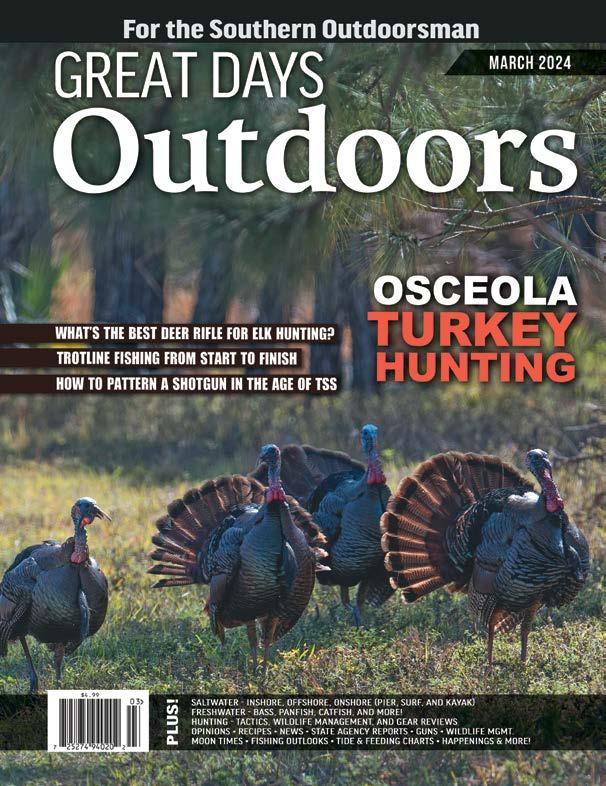





5 YEAR LIMITED WARRANTY applies to qualifying purchases of Suzuki outboard motors sold and delivered to the retail purchaser, for pleasure (non-commercial) use only, from April 1, 2021 through March 31, 2022. See Suzuki Limited Warranty for additional details. Suzuki, the “S” logo, and Suzuki model and product names are Suzuki Trademarks or ®. Don’t drink and drive. Always wear a USCG-approved life jacket and read your owner’s manual. © 2021 Suzuki Marine USA, LLC. All rights reserved. A BIGGER COOLER YOU’RE GONNA NEED HOOKED ON™ SUZUKI TECHNOLOGY SZ Q4 CSTL FSHNG W BOX 1 PG 9-13-21.indd 1 9/13/2021 2:46:43 PM 251.968.2628 6940A HIGHWAY 59 | GULF SHORES, AL 36542 HWY 59 @ COASTAL GATEWAY BLVD. 2 March 2024 // GreatDaysOutdoors.com // 877.314.1237





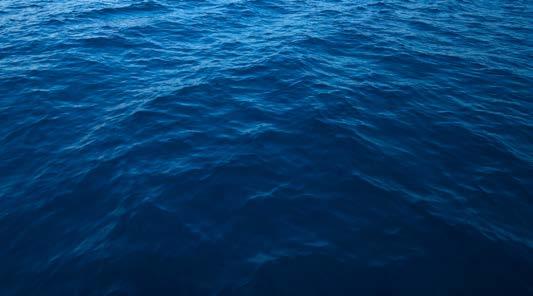

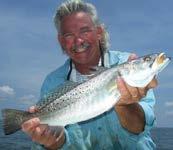





INSHORE GUIDE SERVICE Mobile Bay + Mobile Delta + Dauphin Island 3 TIME ALABAMA INSHORE TRAIL CHAMPION MULTIPLE REDFISH TOUR WINS USCG LICENSED 35 YEARS EXPERIENCE Capt. Bobby Abruscato (251) 661-7696 www.ateamfishing.com A-Team Fishing Adventures 7 LOCATIONS TO SERVE YOU DIXIESUPPLY.COM Eight Mile, AL • Theodore, AL Summerdale, AL BAKERMETALWORKS.COM Troy, AL • Baker, FL Fountain, FL • Cantonment, FL METAL ROOFING & SIDING | 20 COLORS | 29 & 26 GAUGE | 5 PROFILES YOUR METAL ROOFING HEADQUARTERS 877.314.1237 // GreatDaysOutdoors.com // March 2024 3




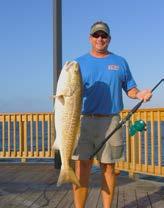

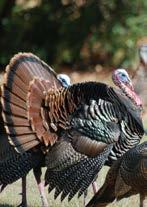
HUNTING & FISHING IN ALABAMA & THE FLORIDA PANHANDLE CONTENTS Best Bets . . . . . . . . . . . . . . . . . . . . . . . . . 6 by The Editors Camphouse Kitchen 60 by Hank Shaw New Gear . . . . . . . . . . . . . . . . . . . . . . . . . 62 by Nick Williams From the Commissioner 64 by Chris Blakenship From the Director . . . . . . . . . . . . . . . . . . . . . 66 by Charles Sykes Alabama & Northwest Florida Saltwater Fishing Forecast 68 by Tanner Deas Pier & Shore . . . . . . . . . . . . . . . . . . . . . . . . 70 by David Thornton Regional Freshwater 72 by Ed Mashburn Prime Feeding Times, Moon, Sun, and Tide Charts . . . . . . . . . . . . . . . . . . . . . . 76 Pensacola Motorsports Trophy Room 80 Great Days Kids Corner 82 Fishing Tips . . . . . . . . . . . . . . . . . . . . . . . . 85 by Nick Williams A Great Day Outdoors 86 by Jim Mize In Every Issue 12 20 How to Pattern A Shotgun In The Age of TSS 8 by Davud Strickland Trotline Fishing from Start to Finish 12 by Nick Williams Choosing the Right Pond Fish Food . . . . . . . . . . . 16 by John E. Phillips Trapping Raccoons Down South . . . . . . . . . . . . 20 by David Strickland Chain Pickerel on the Fly . . . . . . . . . . . . . . . . . 24 by Matt Lewis, PHD Do You Need Gun Collection Insurance? 28 by David Strickland Epoxy Garage Floor Troubleshooting Before You Start . . . . . . . . . . . . . . . . . . . . . . . . . . 32 by Joe Baya Choosing The Best Fishing Hoodies For Hot And Cold Weather . . . . . . . . . . . . . . . . . . . 36 by Nick Williams A Beginners Guide to Controlled Burns . . . . . . . . 40 by Joe Baya Seminars Highlight Alabama and Tennessee Fishing Shows . . . . . . . . . . . . . . . . . . . . . . 42 by Nick Williams A Beginner’s Guide to Osceola turkey Hunting 44 by Stephanie Mallory Raw Land Loan Rates 2024 47 by Joe Baya What’s The Best Deer Rifle For Elk Hunting? . . . . . 48 by Joe Baya Sight Fishing Bull Redfish in the Late Winter and Early Spring 52 by David Thornton Land Equity Loans Explained . . . . . . . . . . . . . . . 55 by Stephanie Mallory Boat Radar Troubleshooting Before You Buy . . . . . . . . 56 by Tanner Deas 8 44 52 4 March 2024 // GreatDaysOutdoors.com // 877.314.1237

Morgan Bluff Hunting & Timber Retreat Choctaw County, Alabama, 329+/-Acres
A rare opportunity to own 329 acres of pristine land on Ararat Road, just a stone’s throw away from the scenic Tombigbee River. This expansive property boasts a mix of ready-to-thin pine and mature hardwood timber with multiple potential lake sites and utilities available. Outdoor enthusiasts will appreciate the food plots and abundant wildlife, making it a haven for deer and turkey hunting. Whether you’re looking for a recreational retreat or considering investment opportunities, this vast acreage offers endless potential. Seize this chance to own a piece of untouched beauty in a coveted location.

Prime Hunting Paradise with Luxury Lodge & Lakes Washington County, Alabama, 1225+/-Acres
• Located within an hour of Mobile and I-65
• Abundance of game, including trophy whitetail bucks, fallow deer, turkey, dove, quail, ducks, and other small game
• Over 15 food plots, including a 12± acre agricultural field
• 13 fiberglass shooting houses, wood-constructed shooting houses, and ladder stands
• Mature natural hardwood and pine, along with valuable longleaf pine plantations
• Two scenic 12-acre fishing lakes
• 2.5-acre duck pond has been host to wood ducks, teal, and other species
• Lodge boasts 20,000± square ft under roof and 14,000± square ft of living space
• Sparkling pool

Along with hundreds of others across the entire United States

Listings Autauga Autauga Autauga Autauga Autauga Baldwin Baldwin Baldwin Baldwin Baldwin Barbour Barbour Barbour Barbour Barbour Bibb Bibb Bibb Bibb Bibb Blount Blount Blount Blount Blount Bullock Bullock Bullock Butler Butler Butler Calhoun Calhoun Calhoun Calhoun Cherokee Chilton Chilton Chilton Chilton Chilton Choctaw Choctaw Choctaw Choctaw Choctaw Clarke Clarke Clarke Clarke Clarke Clay Cleburne Cleburne Cleburne Colbert Colbert Conecuh Conecuh Coosa Coosa Covington Crenshaw Crenshaw Crenshaw Cullman Dale Dallas Dallas Dallas Dallas Dallas Elmore Escambia Fayette Fayette Fayette Fayette Fayette Franklin Greene Greene Hale Hale Hale Hale Hale Henry Henry Henry Henry Henry Houston Houston Houston Houston Houston Jackson Jackson Jefferson Jefferson Jefferson Jefferson Jefferson Lamar Lamar Lamar Lamar Lamar Lauderdale Lauderdale Lauderdale Lauderdale Lauderdale Lawrence Lawrence Lawrence Lawrence Lawrence Lee Lee Lee Lee Lee Limestone Limestone Limestone Limestone Limestone Lowndes Lowndes Macon Macon Macon Macon Macon Madison Madison Madison Madison Madison Marengo Marengo Marengo Marengo Marengo Marion Marion Marion Marion Marion Marshall Mobile Mobile Mobile Mobile Mobile Monroe Monroe Monroe Monroe Monroe Montgomery Montgomery Montgomery Montgomery Montgomery Morgan Morgan Morgan Perry Perry Perry Perry Perry Pickens Pickens Pickens Pickens Pickens Pike Randolph Randolph Randolph Russell Saint Clair Saint Clair Shelby Shelby Shelby Shelby Shelby Sumter Sumter Sumter Sumter Sumter Sumter Talladega Talladega Tallapoosa Tuscaloosa Tuscaloosa Tuscaloosa Tuscaloosa Tuscaloosa Walker Walker Walker Walker Walker Washington Washington Washington Washington Washington Wilcox Wilcox Winston COUNTY ACRES COUNTY ACRES COUNTY ACRES COUNTY ACRES FL Panhandle Listings 373 80 59 48 44 4615 1995 648 518 518 647 515 351 160 32 411 367 142 50 50 547 306 241 80 20.52 278 105.5 68.22 372 107 21 32 0.83 0.42 0.4 3.09 122 80 58.27 40 25 1358 329 242 204 120 620 50.27 19 10 9 240 14.6 10 5 4 0.28 355 3 126 5.2 200 986 276.5 7 117 40 933 740 335 198 193 5.78 127 495 138 135 51 38 68 18 1.5 258 132 53 7 2.55 315 83 80 60 58 231 54 28 15 4.7 821 230 928 180 160 126 106 530 350 99 82 70 107 56 51 48.7 24 190 86.2 81 78 18 305 130 15.2 14.28 13.09 162 55 33 19.5 18 1075 112 598 82 35 30 30 90 55 45 20 11.31 1224 182 58 16 10 209 163 160 160 80 0.46 770 375 340 262.83 198 316 198 95 76 62 640 250 200 34 21 58.19 23 3.9 485 310 184 134 120 217 217 180 167 77 10 161 36 1.87 29 32 31 898 65 64 55 52 3768 145 140 1 1 1 565 147 204.79 470 303 190 130 120 373 288 115 63 51 1225 564 368 214 192 10 3 2.3 Escambia Escambia Santa Rosa Santa Rosa Santa Rosa Santa Rosa Santa Rosa 168 44 80 74 48.77 20 10
Alabama
COUNTY ACRES
877.314.1237 // GreatDaysOutdoors.com // March 2024 5
BEST BETS FOR MARCH
These are our top targets for hunters and anglers this month!
BY GREAT DAYS OUTDOORS EDITORS

SMALL CREEK FISHING
With deer and small game seasons over, my mind starts to turn towards fishing. Small creeks are often the first areas to warm up and experience spawning action, and in March some awesome action can be had for anglers willing to scale down their tackle. Many unique species of sunfish, such as Dollar Sunfish, Redbreasted Sunfish, Longear Sunfish, and Redspotted sunfish, can be caught on their beds this time of year.
Conventional fishermen can use an ultralight spinning combo to toss either live bait or miniscule soft plastics, and fly fishermen can find success with small poppers, streamers, or nymphs on a short 3wt or tenkara rod. Many small creeks can be waded, but a SUP can let you stealthily navigate larger creeks with deep, fishy holes.
FIND THE BURNS, FIND THE BIRDS
If there’s one thing a turkey loves, it’s a fresh burn. Immediately after a burn, turkeys will roam the blackened ground pecking at insects toasted by the fire. And once the seedbed starts to sprout, the green shoots are irresistible to birds as well.
If your hunting ground contains a fresh burn, that acreage is priority number one when it comes time to scout, especially if an SMZ or creek bottom runs through or near it. Turkeys will often roost in the large trees that loggers leave in these areas, and fly down early in the morning to feed and breed. Post up along the edges of a fresh burn just before daylight, and listen carefully for fly down cackles and gobbles. Once it lights up, glass the area carefully.
If you find birds, keep in mind that the lack of ground cover can make hunting difficult. A quality ground blind can be an essential part of hunting these productive but open areas.

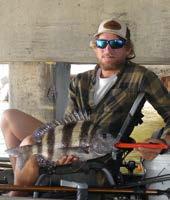
NEARSHORE STRUCTURE FOR SHEEPSHEAD
March is an excellent time to target nearshore sheepshead. This time of year, sheepshead are feeding voraciously on crabs, oysters, and barnacles in shallow waters, making them easy to catch. Dock pilings, jetties, and gas rigs will be holding these strong, black-and-white striped shell-munchers, and savvy anglers armed with a livewell full of shrimp or fiddler crabs can count on action-packed trips.
When fishing for sheepshead, go small on the hook and light on your weight. Lightweight Carolina and Knocker rigs are perennial favorites, but split shot rigs are also simple and effective if the current permits. Size 1 to 2/0 circle hooks are strong but small enough to fit in a sheepshead’s tiny-but-toothy mouth. If you’re having difficulty detecting subtle bites or getting hung-up in structure, consider adding a small slip cork to keep your bait up out of trouble.

VOLUME 28 ISSUE 3 MARCH 2024
PUBLISHED BY:
Great Days Outdoors Media, L.L.C.
PUBLISHER/EDITOR-IN-CHIEF:
Joe Baya
EXECUTIVE EDITOR
Butch Thierry
MANAGING EDITOR:
Nick Williams
GENERAL MANAGER:
Samatha Hester
CREATIVE DIRECTOR: Wendy Johannesmann
DIRECTOR OF DIGITAL MARKETING
Jarod Bosarge
Great Days Outdoors (USPS 17228; ISSN 1556-0147) is published monthly at P.O. Box 1253 Santa Rosa Beach, FL 32459 Subscription rate is $30 for one-year, $54 for two-years, and $72 for three-years. Periodicals Postage Paid at Mobile, Ala. and additional mailing offices.
POSTMASTER: Send address changes to Great Days Outdoors Media, LLC PO Box 460248 Escondido, CA 92046
SUBSCRIBERS: All subscriptions begin the first issue for the month following receipt of payment, if payment is received by the 15th. Great Days Outdoors assumes no responsibility for delivery after magazines are mailed. All delivery complaints should be addressed to your local postmaster.
CONTACT US:
EDITORIAL | JoeBaya@greatdaysoutdoors.com
ADVERTISING | SamHester@greatdaysoutdoors.com
SUBSCRIPTIONS | greatdaysoutdoors@pcspublink.com
Great Days Outdoors Media LLC PO Box 460248 Escondido, CA 92046 877. 314. 1237 info@greatdaysoutdoors.com www.greatdaysoutdoors.com
All rights reserved. Reproduction of contents is strictly prohibited without permission from Great Days Outdoors Media, LLC.
WWW.FACEBOOK.COM/GREATDAYSOUTDOORS
WWW.TWITTER.COM/TEAMGREATDAYS
WWW.INSTAGRAM.COM/GREATDAYSOUTDOORS
BEST BETS 6 March 2024 // GreatDaysOutdoors.com // 877.314.1237
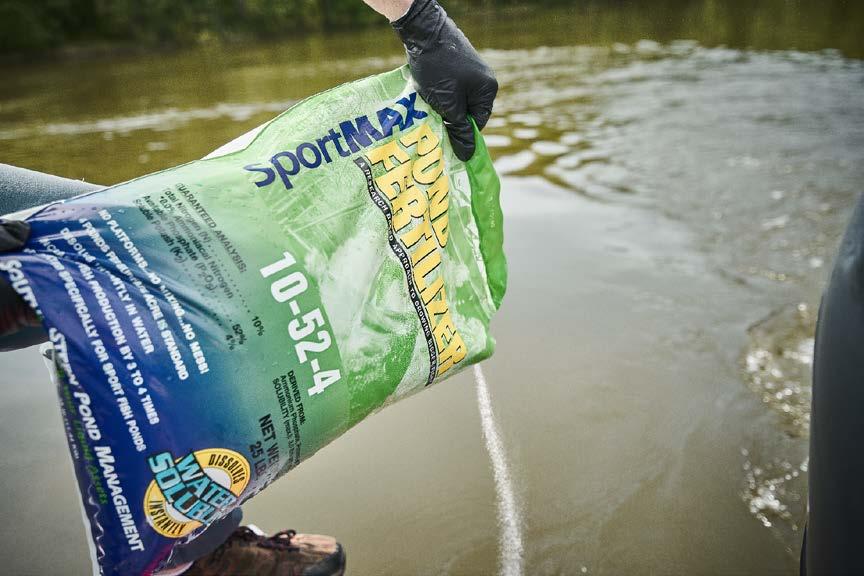
FERTILIZING 877.314.1237 // GreatDaysOutdoors.com // March 2024 7

8 March 2024 // GreatDaysOutdoors.com // 877.314.1237
How to Pattern A Shotgun In The Age of TSS
 BY DAVID STRICKLAND
BY DAVID STRICKLAND
INTRODUCTION
To capitalize on the potential of tungsten shot, hunters need to pattern their shotgun to understand how it will perform at various distances. This testing ensures they have the knowledge and confidence to make ethical shots on gobblers, whether close or far.
Turkey hunters have always been at the forefront of experimenting with powder loads, shot sizes, barrel lengths, and various chokes to create a more concentrated cloud of lethal pellets. However, when the first wave of tungsten shot was introduced to the shooting world about twenty years ago, it garnered a lot of curiosity and a little skepticism.
Most serious turkey hunters had patterned enough to know the limits of their lead turkey loads. However, it didn’t take long before they realized that this new metal’s increased density and hardness would eventually cause all shotgunners to reconsider their preferred shot size and lethal range.
According to a study by the National Wild Turkey Federation, the average shot taken at turkeys with lead is 35 yards. However, with TSS, the average is closer to 45 yards. TSS allows hunters to choose a much smaller shot size to increase pellet count and pattern density, which means more pellets are likely to land on target even at longer distances.
Ultimately, the best way to determine your maximum range is to pattern your shotgun with various load/choke combinations at different distances. Remember, a good choke and the right turkey load can make all the difference between a successful hunt and a good excuse.
WHAT IS TSS SHOT?
About 25 years ago, the search began for an alternative to lead for use in duck hunting. The USFWS began researching lead alternatives after studies indicated waterfowl were experiencing significant health issues after ingesting stray lead pellets during shallow water feeding.
Initially, steel seemed the only alternative; however, manufacturers began experimenting with materials like bismuth, iron alloys, and nickel. Finally, trials with a tungsten/nickel/iron mixture evolved into what became known as Tungsten Super Shot, or TSS.
The development of new manufacturing techniques in 2016 allowed Apex Ammunition to offer its first commercial shot shells containing TSS. Pellets made from this dense, harder-than-steel material are about 60% heavier than lead. Smaller pellets of TSS can achieve the same downrange performance as larger-sized lead shots. TSS is also more aerodynamic than lead shot, so it retains its velocity better and penetrates deeper into targets.
As a result of these properties, TSS is a highly effective shot material for hunting waterfowl, turkeys, and other upland game. It is also a non-toxic, environmentally friendly alternative to lead. It seems the only drawback to this new lead alternative is price. Extensive patterning can become a somewhat expensive proposition at $5$10.00 per shell and can reach close to $80.00 for a box of five specialty loads.
THE BASICS OF TURKEY PATTERNING
Turkey patterning refers to testing the shot pattern of a shotgun fired from a specific gun/choke/shell combination to ensure its accuracy and effectiveness for turkey hunting.
Patterning involves shooting a 10-inch circle or a paper target with a picture or outline of a turkey’s head and neck from a specific distance to evaluate the density and spread of the pellets. The aim is to determine if the shotgun can consistently deliver a lethal shot to a turkey’s vital areas. This process helps hunters select the right combination of shotgun, choke, and ammunition for their hunting needs.
When using the 10” circle for patterning, many draw a vertical and horizontal line within the perimeter to evaluate the shot count in each quadrant. Most use a fresh target at 20, 30, 40, 50, and sometimes 60 yards to assess their pattern.
The 20 gauge now seems the preferred choice of most turkey hunters, and younger hunters can avoid even more recoil by using a .410. Before the availability of TSS, most hunters opted for a heavy load of #4 or #5 or the mule kick of a ten gauge to extend their effective range
THE IMPACT OF TSS ON TURKEY PATTERNING
The ability to drop down in shot size while retaining or increasing pellet penetration has been the primary result of TSS pellets.
One #9 TSS pellet has a mass similar to a #5 lead pellet. With equal velocities, the #9 pellet hits with as much energy as a #5 lead pellet and hits harder than a #4 steel pellet. Plus, a 1⅜-ounce load of #9 TSS contains almost 500 pellets. TSS shot through a .410 is now regarded as deadly up to 40 yards with the correct shell/choke combination.
Choke makers have integrated hardened steel to withstand the increased friction and have also developed special wadding that helps protect barrels.
CHOOSING THE BEST TSS TURKEY CHOKE
A shotgun’s choke is defined as the difference between the diameter of the bore, measured nine inches from the breech, and muzzle, expressed in thousandths of an inch. So, a higher number means more constriction or tighter choke.
HUNTING 877.314.1237 // GreatDaysOutdoors.com // March 2024 9
TSS is a great option to consistently take gobblers

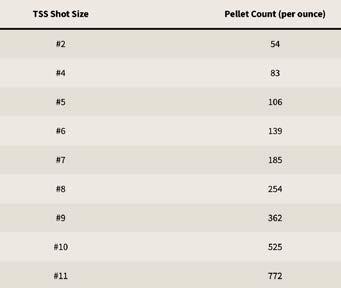
Patterning your shotgun with various aftermarket choke options is one way to develop the tightest, most consistent patterns. Specialty turkey choke tubes from companies like Indian Creek, Muller, Carlson’s, and Patternmaster offer a variety of constrictions to take advantage of the TSS shot. Expect to pay upwards of $100.00, but if they can tighten your pattern and extend your range, most will consider it money well spent.
Below are a few of the styles available. You’ll also find tubes that combine some or all of these options:
• Constriction Style Chokes - These use internal constriction, similar to standard chokes, but optimized for TSS loads.
• Wad Stripping Chokes - This type of choke slows and separates the plastic wad from the pellets before they exit the barrel.
• Ported Chokes - Cutouts or holes in the choke redirect gases to reduce recoil and help maintain accuracy for follow-up shots.
• Extended Chokes - Adding length is another way to control shot strings at longer ranges.
• Adjustable Chokes - Several are available that adjust the constriction from .550” down to .700” with a simple twist and are similar to the older-style poly-chokes of yesteryear.
Consider the range you expect to be shooting. TSS shot patterns well out to 40-50 yards and beyond with the right choke. Many hunters opt for red dot sights because, at closer ranges, some barrel/ choke combinations have an ultra-tight pattern that can lead to a clean miss.
Barrel length can also impact your choice of an aftermarket choke. Longer barrels generally pair better with tighter chokes, while shorter barrels do better with more open chokes; however, an aftermarket extended choke tube can make a huge difference when threaded onto shorter barrels. Ensure any aftermarket choke tube you buy is designed for your specific barrel. Below is a summary of standard choke sizes:
CHOKE SIZES:
• Double Full - In addition to typical primary choke constrictions, specialty options designated double full (.570+) and other long-range style turkey chokes claim even tighter constrictions for extending your effective TSS shot range.
How to Pattern A Shotgun In The Age of TSS 10 March 2024 // GreatDaysOutdoors.com // 877.314.1237
• Extra Full - These chokes have tight constrictions for a dense pattern at extended distances. Standard openings typically measure .550-.570 inches and are best for longer-range shots at turkeys.
• Full - Full chokes for TSS loads have constrictions around .550-.565 inches typically. They produce solid patterns at moderate ranges.
• Improved Modified - Improved modified chokes constrict shotshells less than full chokes, usually around .545-.550 inches. They can be a good compromise between closer and moderate distances.
• Modified - With constrictions of .535-.545 inches, modified chokes allow for more open patterns at closer range and are recommended for shots inside 30 yards with TSS.
CHOOSING THE BEST TSS SHOT SIZE FOR TURKEY
Many hunters opt for the maximum pellet count when using TSS loads, and most consider #9 shot the best choice for achieving the densest pattern.
I recently tested a turkey load by Apex with 1-5/8oz of #9 TSS in my grandson’s Franchi to see how it patterned through an Indian Creek Black Diamond .555 Turkey choke. It contains about 590 pellets, and I had no problem punching multiple holes through the printed kill zone
Factors such as gauge, barrel length, and choke, combined with experience and personal preferences, can also play a role in shot choice.
TSS’s most popular size pellets for turkey include 7, 8, and 9.
However, several manufacturers now offer shells loaded with a combination of different-sized shots.
CONCLUSION
There is no doubt that Tungsten Super Shot has allowed for tremendous change in what constitutes a good turkey gun. In years past, many hunters opted for a ten gauge to achieve maximum range when drawing a bead on a gobbler’s head. It’s now possible to closely match the performance of those mule-kickers with a 20 gauge.
However, one thing remains the same: one must possess a degree of luck or develop the skill set needed to get within range of those wily, red-necked, southern peacock wannabes.
Important Contact Information:
Muller mullerchokes.com
Indian Creek indiancreekss.com
Patternmaster patternmaster.com
Carlson’s choketube.com
Apex Ammunition apexmunition.com
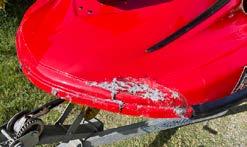


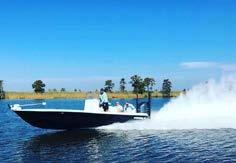


Capt.





• Custom Fabrication • Premier Repairs • Expert Finish Work • Estimates & Supplies • 14’ Ultralight Tunnel Boats 251-473-3176 2110 Halls Mill Road • Mobile, Alabama 36606 www.fiberplastics.com Time to call Professional Fiber Glass Repair Since 1974 FIBER-PLASTICS INC We can help... Look Familiar? Capt. Richard Rutland 251.459.5077 richard.rutland@yahoo.comwww.coldbloodedfishing.com richard.rutland@yahoo.com www.coldbloodedfishing.com Speckled Trout Tripletail Redfish Flounder USCG Licen d & InsuredDauphin Island Alabama CAPT. RICHARD Capt. Richard Rutland 251.459.5077 richard.rutland@yahoo.comwww.coldbloodedfishing.com Speckled Trout Tripletail Redfish Flounder USCG Licen d & InsuredDauphin Island Alabama Inshore and Offshore Fishing Charters USCG Licensed & Insured Dauphin Island, AL Follow us on Facebook and Instagram @coldbloodedfishing Inshore and Offshore Fishing Charters USCG Licensed & Insured Capt. Richard Rutland Speckled Trout Tripletail Redfish Flounder Capt. Richard Rutland Inshore Fishing Guide Service 251.459.5077 richard.rutland@yahoo.comwww.coldbloodedfishing.com Capt. Richard Rutland Inshore Fishing Guide Service 251.459.5077 richard.rutland@yahoo.com www.coldbloodedfishing.com Speckled Trout Tripletail Redfish Flounder USCG License d & InsuredDauphin Island Alabama CAPT. RICHARD RUTLAND 251.459.5077
Speckled Trout Tripletail Redfish Flounder USCG License d & InsuredDauphin Island Alabama Inshore and Offshore Fishing Charters USCG Licensed & Insured Dauphin Island, Follow us on Facebook and Instagram @coldbloodedfishing Dauphin Island, AL
Richard Rutland 251.459.5077 richard.rutland@yahoo.com www.coldbloodedfishing.com Follow us on Facebook and Instagram @coldbloodedfishing How to Pattern A Shotgun In The Age of TSS 877.314.1237 // GreatDaysOutdoors.com // March 2024 11
Richard Rutland richard.rutland@yahoo.comwww.coldbloodedfishing.com
Capt.
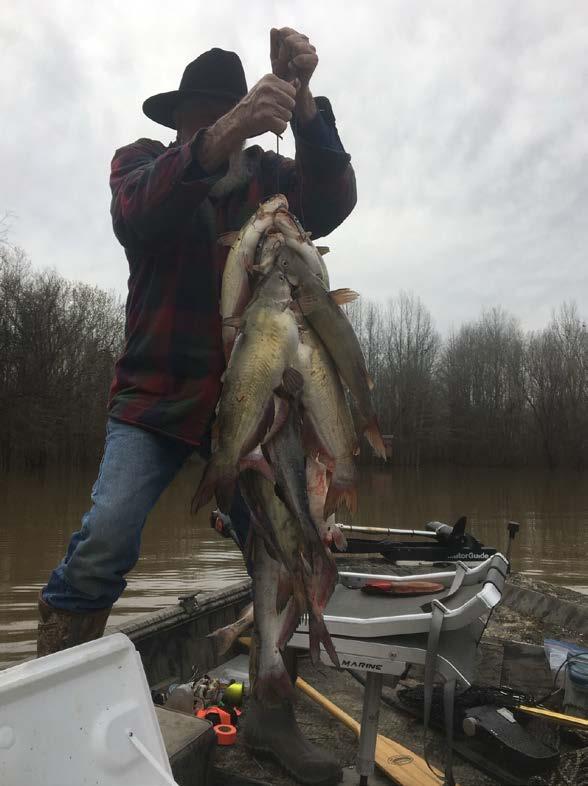
12 March 2024 // GreatDaysOutdoors.com // 877.314.1237
Trotline Fishing
from Start to Finish
BY NICK WILLIAMS
Fishing has become an expensive and gear-centric hobby, with all sorts of high-tech equipment and gadgets promising to land you the big one. I’m not necessarily opposed to that; I compile this publication’s New Gear list, after all. Shiny new toys are fun, and if you ever feel a bit sheepish about your latest acquisition you can always rationalize it as helping fisheries via the Dingell-Johnson act.
But for this article, we’re taking a step back from all that complexity and cost, and exploring something a bit more down-to-earth and traditionaltrotline fishing.
WHAT IS A TROTLINE?
First of all, let’s start with what a trotline isn’t. I’ve spent years silently seething everytime I see the malapropism “troutline” appear on a page or screen. Unless you’re looking to bait a line with 20, size 18 elk hair caddis flies and let it sit on a stream overnight in hopes of landing rainbow trout, you’re setting a trotline.
With that out of the way, a trotline is a type of setline. Setlines are baited hooks that are rigged and left alone while the angler goes and does other things. Other types of setlines are limb lines, bank poles, and mechanical “yo-yo” lines.
While there are variations that we’ll discuss later, a typical trotline consists of a stout line stretched from bank-to-bank, baited every few feet with a short leader and a stout hook. If you’re a conventional angler, imagine a high-low rig with about 20 hooks on it.
TROTLINE FISHING 101
Trotlines are all about efficiency. Their goal is to put fish in the freezer. They’ve lost a bit of a PR battle in recent years with the popularization of catch-and-release fishing, and are sometimes belittled as a “redneck” way to fish. But they require a good bit of knowledge and skill to “run,” and when used properly by conservation-minded fishermen are no more harmful to fisheries than any other method of fishing.
When you’re running a trotline, it’s best to think of yourself as a trapper. You survey an area, use your knowledge of your target animal’s behavior to envision how they’re utilizing it, bait your trap (or hook), and walk away. All of the work and strategizing takes place on the front end of the endeavor.
CATFISH TROTLINE COMPONENTS
A lot of the work and skill involved in trotline fishing is in assembling a good trotline. It can be tempting to use cheap components to build your line, but in my experience, doing so will always come back to bite you.
Trotline String
String is the first place where most people go wrong. You want a braided and tarred trotline cord. Braided, tarred line is only slightly more expensive than twisted, “plain” line; but it can be hard to find. This means that it’s tempting to forgo it and just buy whatever is on the shelf, but a good line will
last longer and hold knots much better than the cheap stuff.
For the main line, you want the biggest possible diameter that will either thread through your dropper swivels or clip onto your trotline clips (more on those later.) Catfish are not line-shy, so there’s no point in going smaller. For your dropper line, it needs to be small enough in diameter to allow it to fit through the eye of the hook. If you’re using swivels, it also needs to fit through the eye of the swivel when doubled up.
Trotline Hooks
Since you’re not there to set the hook on a fish, good hooks are crucial on a trotline. I am personally a fan of Owner and Gamakatsu circle hooks, but any good, strong, sharp circle hook will work. Opinions vary, but I’ve concluded after lots of testing that circle hooks lead to more and better hookups than traditional J-hooks.
For general catfishing, I prefer a 5/0 circle hook. This hook is small enough to fit in the mouths of most catfish worth catching, but strong enough to hold the occasional bigger fish. This size works well with the cut bait I usually use to target channel catfish and blue catfish. If I’m using live bluegill or bigger cut baits, I’ll size up to an 8/0. I don’t generally target big fish with trotlines, but sometimes I like to sneak in a dropper or two with a big hook and a lively bluegill “just to see.”
Trotline Clips
Trotline clips add some expense to your line, but they make life a lot easier because they let you easily add or remove droppers from the main line. This means that if a fish is proving difficult to unhook, you can just unclip him from the line and keep moving. It also allows you to bait droppers ahead of time, and quickly replace empty lines with fresh ones as you run the line.
Trotline Weights
Some anglers insist on weighting their trotlines, probably because they have an idea that catfish are bottom feeders. While catfish do feed on the bottom, they will feed voraciously throughout the water column at night, when most trotlines are run. I don’t personally use weights, because I prefer to fish my lines closer to the surface than most people. This makes it easier to keep the line under tension and improves your hookup rate. It also makes it easier to run the line, and helps to keep fish away from submerged structure and out of trouble.
The only real reason I see to weight a trotline is to make sure that it stays low enough in the water to not get caught in an outboard. For this purpose, a couple of 2-4oz pyramid weights can easily be threaded onto a trotline clip and snapped onto the line.
Trotline Winder
Once you’ve built a good trotline, you’ll need a place to store it. A cheap extension cord reel works well for this, allowing you to easily reel in a mainline once you’re done fishing a spot. I personally store droppers separately in a 5-gallon bucket with slots cut into the top to slip hooks into. Storing
FISHING
877.314.1237 // GreatDaysOutdoors.com // March 2024 13
Trotline Fishing from Start to Finish droppers separately from your main line makes running lines safer and much less tangle-prone.
Trotline Tags
Most states require anglers to tag lines with their name, phone number, fishing license ID#, or some other combination of information. The easiest and neatest way I’ve found to do this is with copper trapper’s tags. I typically zip-tie one tag onto each end of the main line.
HOW TO MAKE A TROTLINE
Once you’ve assembled your materials, it’s time to build your line. I typically do this on rainy days and lazy evenings around the house. It’s time-consuming, but not particularly difficult.
For starters, you’ll need to tie two overhand knots about an inch or two apart every six feet along your main line. If you’re using swivels, you’ll want to thread them all onto the line, and position them in between each pair of overhand knots one at a time as you go. I like to prepare a whole roll of mainline each year, and then throughout the fishing season I can cut what I need off of it. When I’m done running that particular line, I just tie it back onto the piece I cut it from.
Once your main line is prepared, roll it onto your line winder and move on to the droppers.
I like to tie my droppers fairly short, about 14-16”. This allows them to fit neatly into my bucket. Begin by cutting lengths of dropper twine to length, allowing a few extra inches for knot tying. If you’re using swivels, you’ll want your line to be a little over twice as long as its finished length. This will allow you to basically tie a loop dropper, with your hook snelled onto one end and the other free to girth-hitch to the eyelet of your swivel. (Confused? Check out the image and it’ll make sense.)
If you’re using clips, a simple clinch knot can be used to tie the clip onto one end, and a hook can be snelled onto the other end. As you make your lines, drop them into the slots cut into the rim of a 5-gallon bucket, and put the lid on the bucket. Your lines are now safe and secure. I usually store 25-50 droppers this way, and you can store miscellaneous gear in the bucket as well.
TROTLINE SETUP
Once your trotline is built, all there is to do is set it. I prefer to set my lines at the mouths of creeks or sloughs, or in sections of the creek where I’ve caught lots of catfish before on rod and reel. If your sonar shows fish in a creek, regardless of species, that can also be a good place to run a line. Catfish will feed during the night in areas where other species are common during the day.
I prefer to run my lines “bank-to-bank.” IE, I anchor my main line to one side of the creek, troll or idle over to the other side while letting out line, and then anchor the other side to the opposite bank. I like to try and keep the line fairly tight. Not so tight that it sits on the surface, but tight enough that it only sits three or so feet below the water.
Once the main line is set and each end is tagged, I then go down the line adding droppers. If at all possible, I prebait the droppers or have one person bait hooks and hand them to me to attach them to the line. Clips allow you to just “snap” the dropper onto the line. If you have swivels instead of clips, just thread the end of the loop opposite your hook into the swivel eyelet, and then fish the hook through that loop and pull tight. This is a simple but strong attachment that allows you to easily add and remove droppers to the swivels.
With the line set and baited, all there is to do is go home, eat dinner, get a
good night’s sleep, and return early in the morning. I like to set my lines just after dark and check them first thing in the morning.
HOW TO RUN A TROTLINE
The first thing to remember when checking or “running” your trotline is to be careful. You’re dealing with multiple hooks, strong line, and quite possibly some current. If you’ve built your line properly, it’s more than capable of holding YOU should you happen to get hooked or tangled in the line. Always keep a sharp knife on your person, wear a life jacket, and use common sense and healthy caution. And don’t run lines alone. Safety aside, it can be a lot of work to run a line and an extra set of hands is extremely helpful.
With that out of the way, the first order of business is to locate the line. Some fishermen tie a buoy to the main line that they can grab and use to haul up the line. If your line runs to the bank, a piece of flagging tape can help you locate where you tied it off. If you’re fishing in an area where fish stealers or saboteurs are prevalent, however, it’s best to rely on memory or GPS coordinates instead of visible marking your lines. Shallow lines can be snagged with a broomstick that has a screw-in hook inserted into one end. Deeper lines may need to be hooked with a stout line that has a small kayak anchor tied to one end.
Once the line is located, pull it to the top and kill the motor. I like to just pull myself and my boat slowly along the line with my hands, checking the line as I go. It helps to have something that you can “hook” the line onto if you need both hands for a second in order to keep from having to fish it back up after you let it go. My jon boat has a couple of cleats strategically placed on the gunwales for this purpose.
When running the line, it’s important to work quickly and smoothly. If you did a good job setting your line, you’ll have multiple fish struggling on it. The longer you dilly-dally, the more likely you are to lose a fish. Some anglers like to use nets or a gaff to help secure fish, but I prefer to flip them into the boat and “flip” them off the hook with a dehooker tool.
If you’re going to be running the lines again and if your first mate is a seasoned hand, they can rebait any empty hooks as you remove fish. Otherwise, it’s best to run the line once to remove fish, and a second time to rebait.
Trotline FAQs
What is the best bait for trotlines?
That depends on what you’re fishing for.
If you’re targeting channel catfish, just about anything with a little smell and the ability to stay on the hook will work. Chicken livers are too flimsy, but I’ve had luck with cubes of deer liver, which are substantially tougher. Nightcrawlers will work as long as you set your lines after dark. Otherwise, bream, gar, and turtles will clean your hooks. I’ve caught fish on bubble gum, and Zote soap is actually a surprisingly effective trotline bait if you’re targeting 1-3lb “eatin’ size” channel cats. Cheap hotdogs cut into small pieces are also a cheap, clean, and fairly effective bait.
Another good option that is clean to use and that stays on the hook well is Fishbites Yeh Monn! Catfish Bait. These bait strips can be quickly and easily cut with scissors, and don’t make your hands smell like roadkill.
For blue catfish, think meat. Chunks of chicken or beef work, as does cut bait from the waters you’re fishing. In many waterways, skipjack, shad, bluegill, and mullet are great candidates for cut bait. The bigger the bait and hook, the bigger the fish you can expect to catch.
Flatheads almost always require live bait. I prefer a big bluegill, shellcrack-
14 March 2024 // GreatDaysOutdoors.com // 877.314.1237
er, or green sunfish hooked through a nostril, but I’ve also used a small rubber band to attach a live crawfish to a hook with good results.
Are trotlines illegal?
It depends. In some states and on some bodies of water, yes. But trotlines are legal throughout much of the American Southeast and Midwest, where relatively low human populations and vast river systems support LOTS of catfish. Before you build your trotline, it’s a good idea to contact your local state conservation agency to verify the legality of using trotlines in your area, as well as any special requirements regarding construction and tagging.
CONCLUSION
Before wrapping this article up, I’ll throw in a few final bits of advice. The more work you can do off the water when running a line, the better. Precutting your bait, and even prebaiting your droppers, will make the experience much easier. Keep your boat as clean and clutter-free as possible when working lines. Have a net or gaffe handy for big fish. Don’t stop to take pictures or admire fish until the line is run. Hold off on trying to use live bait until you’ve run cut bait a few times. The added challenge of hooking live bait while handling the line and the boat can leave new trotliners hot, sweaty, and mad.
Finally, run lines responsibly. A line you’re not running anymore that’s left in the water is litter. A line ran near where people swim is a hazard. And taking more fish than you need isn’t just poor conservation practice, it’s a sign of ignorance and low-breeding.
With all of that in mind, go out and run a few lines this spring. And be sure to take a kid or new angler with you. A full trotline can be a very memorable experience, and it’s best shared with others.

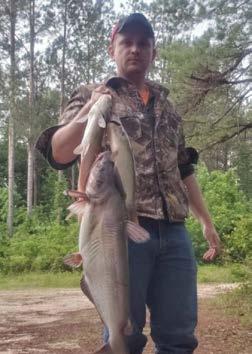

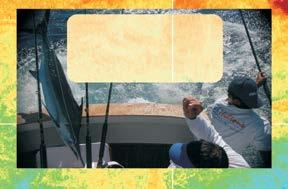

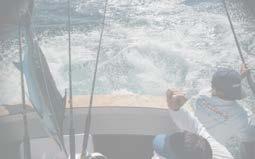
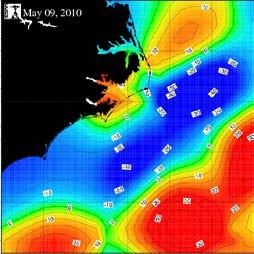
CAMPER CITY TRUCK ACCESSORIES Specializing in Truck Toppers + Accessories • Spray-in/Drop-in Bedliners • Bug Shields • Gooseneck & 5th Wheel hitches • Vent Visors • Running Boards • Warn Winches • Bed Covers Mobile 1051 N. Schillinger Rd. Mobile, AL 36608 (251) 633-9004 1-800-431-6692 Pascagoula 1340 Denny Ave. (Hwy 90) Pascagoula, MS 39567 (228) 762-6082 1-877-732-8782 hattiesburg 7166 Hwy. 49 N. Hattiesburg, MS 39401 (601) 296-1800 1-888-730-0432 And MORE! An Online Map Server Catch More Fish Using Less Fuel! www.Realtime-Navigator.com
Trotline Fishing from Start to Finish 877.314.1237 // GreatDaysOutdoors.com // March 2024 15
Given the right food and conditions, bass can grow up to 3 pounds per year.
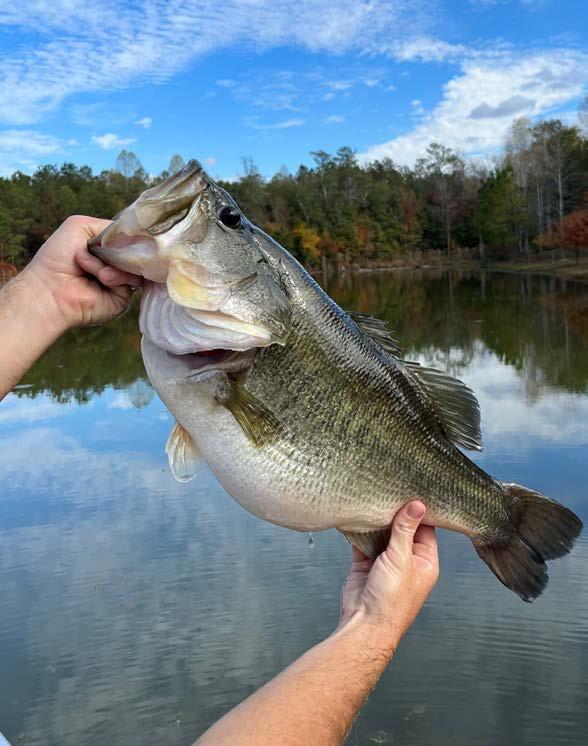
16 March 2024 // GreatDaysOutdoors.com // 877.314.1237
Choosing the Right Pond Fish Food
BY JOHN E. PHILLIPS
What the bass in your pond or lake eat, and how much they eat determines how fast they grow. Yes, you can grow bass at a rate of 3 pounds per year. You can grow a 9-pound bass in your lake or pond in three years. But to reach that goal isn’t cheap.
“Great Days Outdoors” wanted to know how this was possible. So, we talked to the Bass Doctor, Norman Latona of Southeastern Pond Management, whose business services lakes and ponds all across the southeastern U.S.
“We lime lakes, do electrofishing and supply fish, fish-food feeders, aerators and fountains, and conduct pond-vegetation-control work,” Latona explains. “Our company specializes in anything related to a manmade pond or lake.”
Just as choosing and feeding the best food is essential for human body growth, so is selecting the right pond fish food to produce the biggest bass in your pond.
“We refer to this fish food as supplemental feeding,” Latona says. “Feeding fish is not meant to be a substitute for their normal diet. I compare fish food to body builders taking supplemental protein. Supplemental feeding is food that makes eating and growing easier for the fish. It’s a tool to grow fish faster. Supplemental feeding can make a real difference in how big of a fish, including bass, you can grow in a certain time period.”
Latona mentions that some people intensively manage the fish in their private ponds or lakes. These fish learn to count on that supplemental food. Also some folks use supplemental feeding to attract fish to a certain place where they can catch them easier.
WHAT ABOUT THE QUALITY OF FISH FOOD
A fish food’s protein content determines the quality of that fish food you’re feeding. The higher the protein level in the food you feed, the more effective it is in growing fish. Most supplemental feeding of pelleted fish food is intended to feed forage fish - the fish on which bass feed – like bluegills. Some bass will eat pelleted fish food, but most bass won’t. Bass are natural-born predators, and they’re not really interested in eating a pellet ration.
As Latona reports, “With pelleted fish food, we’re feeding the bream on which the bass feed. Growth and abundance of the bass in a pond are dependent on the growth and the abundance of the bream present. If you can increase the growth rate of the bream and their abundance, you can increase the size of the bass in a pond or lake.”
Latona names the AquaMax fish food, a floating product in a 3/16-inch extruded pellet made by Purina, as his first choice for feeding bluegills. Developed by professional nutritionists with the help of fish experts, this food provides an easily-digestible, high-energy, nutrient-dense diet with excellent conversion rates.
“The floating catfish food that’s 32% to 34% protein attracts forage fish and gives them some supplemental feeding” Latona reports. “That’s what the majority of people who own private ponds and lakes use. However, the people who are really serious about growing big bass will want to feed
something like AquaMax from Purina, which is 50% protein. Then their forage fish will grow much quicker. But, as you may suspect, the price of that food is much higher.
“If you feed 10 pounds of fish food per acre per day, you’ll get a really-good result. However, some folks want to feed only a pound of fish food per acre per day. You can determine how big you want your bass to grow by how many pounds of high-protein food you feed the forage fish.” Latona’s company has some ponds and lakes that feed high-protein fish food supplementally year-round. When his company’s biologists survey those lakes by electrofishing and compare those lakes to other lakes, the difference in the size of the bass is dramatic. The lakes of people who are feeding high-protein fish food to the forage fish, will hold numbers of 18- to 24-ounce bluegills - a really-big bluegill. Any bream weighing more than a pound is considered a truly large bluegill. But in the lakes where pond owners are feeding high-protein fish-food ration, those size bluegills are common. In ponds that don’t have a year-round feeding program, a big bream generally weighs 8 to 10 ounces.
“We’ve learned that when bluegills produce more eggs, more offspring and more food for bass, the bass grow quicker,” Latona says. “Once you increase the amount of bluegill production, you’re accelerating the bass rate of growth.”
Latona calls bluegills reproductive factories for bass. Bluegills spawn multiple times a year, once they’re 3 – 4 inches in length. “The faster those small bream grow to 3 – 4 inches, which means they’re sexually mature, and the more of those size bream you have in your pond or lake, the more forage you’re producing for those bass. Improved genetics in bass and a balance of liming and fertilization for the pond have helped pond owners to grow bigger bass quicker. We like SportMax Water Soluble Pond Fertilizer.
“Growth rates of 3-1/2 to 4 pounds of growth rate per bass per year can be seen. Some 2-year-old bass may weigh 6 pounds, and some 3-year-old bass may tip the scales at 9+ pounds. These bass are superior bass.”
WHAT HAPPENS IF YOU EAT THE BIG BLUEGILLS
The typical fish food that most pond owners feed generally will provide only about 40% protein. A very-high protein fish food for pond owners interested in maximizing the growth rate of their bass is about 50% protein but is more costly.
“Many of Southeastern Pond’s customers have transitioned into choosing high-protein fish food,” Latona reports.
There’s a temptation when you’re feeding high-protein fish food to want to catch some of those big bluegills for the dinner table. When a bluegill gets to be 10-inches long, very few bass in a pond can eat a bluegill that big. Bass can’t get their mouths around those big bream. Those big bluegills are your brood stock and produce the offspring bass can eat. So, you’ll decrease the amount of forage fish you have for the bass, if you heavily harvest those big bluegills.
Typically, folks won’t damage the bluegill population by taking enough blue-
FISHING
877.314.1237 // GreatDaysOutdoors.com // March 2024 17
What About Fish Food Feeders
Several characteristics of fish feeders determine the best one for your pond: the size of your pond, how many feeders you’ll use, the type of fish food you’ll feed, and the number of times you want to resupply the feeder. A professional fish-management person will know and can recommend the best feeders for your pond. You also can check-out reviews online.
There are feeders that are: waterproof; digital; programmable; solar-powered; hanging positioned; crafted to sit on legs on a pier or the side of the pond; and designed to hold varying amounts of fish food – 70 pounds, 175 pounds, 250 pounds.

Growing bass this size in three years is possible, but it’s not cheap .
gills occasionally to eat for supper. However, if you catch a large number of big bluegills every week and each month, you’ll deplete the number and size of forage fish that are helping to feed the bass. But most fisheries biologists think you usually won’t have a negative effect on the bluegill population by taking 10 – 12 big bream with hook and line for a fish fry sometimes.
WHAT BASS TO STOCK THAT GROW FASTEST
Latona explains that most of the bass Southeastern Pond Management is stocking in most ponds and lakes today are F1 hybrids - a cross between the Florida strain of largemouth bass and the northern strain of largemouth bass. That’s been the trend of bass being stocked for about the last decade. Research has shown that the Florida bass live longer and grow bigger than the northern strain of bass, but research also shows the Florida strain of bass is much-more difficult to catch, especially with artificial lures. Fish breeders have combined the best traits of both strains of bass to produce this F1 hybrid.
According to Latona, “The bass we’re stocking in ponds and lakes today now offer much-more promises of bigger bass quicker than the bass we were stocking 20-years ago in ponds. Most of our customers want qual-
ity-size fish in their ponds, which will be a bass that’s 16 - 20 inches and may weigh 4 - 8 pounds or more. Some of our customers tell us, ‘We want to catch a 5- or a 6-pound bass every time we go fishing. We want to catch numbers of quality-size fish.’
“That’s where the improved genetics of bass that we’re stocking have made such a tremendous difference, and how supplemental feeding of the forage fish can help those pond owners improve the quality of the bass in their ponds and lakes quicker. But you’ll also have to include the costs of fertilization, liming and vegetation control to grow bass that size.”
WHY STOCK OTHER FOODS THAT HELP BASS GROW FASTER
In many lakes. Southeastern Pond Management stocks shad and golden shiners to give the bass a buffet table of food to choose from or to eat every day any time they want something to eat.
Latona explains, “Largemouths are cold-blooded animals. If there’s an absence of food, they don’t swim around and look for food to eat. We’ve had some people tell us, ‘If we put all this bass food in our lake, we think our bass will be harder to catch.’ However, cold-blooded animals like bass, just don’t eat when there’s a lack of food. Instead, they’ll sit in one place and not do anything.
“But if there’s a lot of food in the water for them to eat all year long, they’ll eat all the time, grow bigger quicker and are easier to catch. An abundance of food in a pond all year long means the bass feed more actively, making them easier to catch due to the abundance of forage.”
Supplemental feeding with pelleted food for forage fish, stockings of golden shiners and shad, liming, fertilizing and vegetation control are all treatments that the Bass Doctor, Norman Latona, knows can be done to your pond that are designed to create more forage fish for bass to eat all year long and grow bigger.
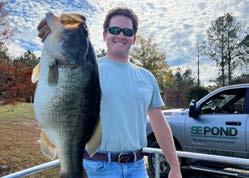
This 11 25 pound bass measuring 22 5 inches was taken from a pond in Auburn, Alabama, and evaluated in November, 2023, after growing 2 23 pounds per year since 2018 .
A F1 Bass That’s Averaged Growing 2 .24 Pounds Per Year
According to Southeastern Pond Management’s A.J. Simmons, “This F1 largemouth bass was one stocked at a rate of 75 bass per acre as a 2-inch fingerling in June, 2018, into a 5-acre pond in Auburn, Alabama. The forage species that included coppernose bluegills, redear sunfish, golden shiners, fathead minnows and threadfin shad were stocked at a rate of 2,000 per acre. She was captured during an electrofishing evaluation in November, 2023, weighed 11.25 pounds and measured 22.5 inches long – averaging 2.24 pounds of growth per year. Likely she grew 3 pounds per year in her first few years, and her growth has slowed down since. This pond is supplementally stocked with crawfish and threadfin shad annually.”
Choosing the Right Pond Fish Food
18 March 2024 // GreatDaysOutdoors.com // 877.314.1237
This 16-month old female F1 largemouth bass stocked in 2022 in Folly Pond on Longleaf Plantation in Thomasville, Georgia, already has grown to 4 .51 pounds and 17 .5 inches long by October, 2023
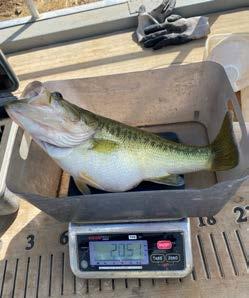
16-Month Old Female F1 Largemouth Bass Has Grown to 4 .51 Pounds
The following case study comes from a 21.5-acre impoundment at Longleaf Plantation in Thomasville, Georgia, that Southeastern Pond Management oversees. After draining the pond as low as possible, the pond basin was treated with Rotenone to eliminate the existing fish population. In February of 2022, coppernose bluegills, redear sunfish, golden shiners and fathead minnows were stocked at a rate of 2,000 fish per/acre for each species. One load of threadfin shad (10,000 individual fish) was stocked in March of 2022. On June 12, 2022, 1612 F1 largemouth bass fingerlings were stocked (75 bass per acre). The lake was limed at a rate of 5 tons per/acre and fertilized with SportMax pond fertilizer monthly, starting in March of 2022. (Fertilization increases the production of natural forage by as much as 400%).
The first electrofishing evaluation was conducted on October 19, 2023 - 16 months after stocking the bass as 2-inch fingerlings. The mean weight of the 45 bass sampled was 2.5 pounds, and the mean length was 15.02 inches. The top 3 heaviest female bass sampled weighed 4.51, 3.95 and 3.41 pounds. As bass age, their growth rate is expected to slow down.
The bass at Longleaf Plantation are currently growing just shy of 1/4-pound per month. Bass don’t grow year-round. Most of their growth occurs between March and October. Male bass don’t have the same growth potential as female bass. But both male and female bass were measured during this sample.
Important Information
* AquaMax Fish Food by Purina https://www.purinamills.com/fish-and-aquatics-feed
* Southeastern Pond Management https://sepond.com/
*SportMax Water Soluble Pond Fertilizer https://sepond.com/pond-fertilization/

SUPPORTING THE LOCAL ECONOMY & ECOLOGY
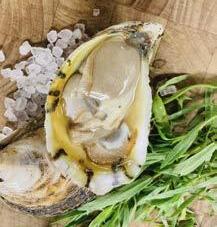

Admiral Oysters are now available for retail by the dozen at Bon Secour Fisheries, Inc. in Bon Secour, Alabama. Fresh, raw oysters can elevate any event. From a simple, nutrient dense appetizer at home to a shucking party with friends, Admiral Oysters will steal the show. Call 251.949.7411 for pricing and availability
Oysters grown at our farm are consistent in size and flavor profile. Frequent handling and wave energy at our unique location creates a sustainable environment in which our oysters thrive. This combination results in the perfect half shell presentation of the Admiral Oyster.
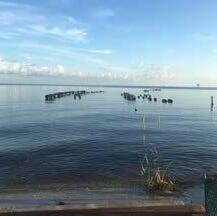
We are located near Fort Morgan AL, in an untouched wild stretch of beach that will be immune from development. The site has witnessed centuries of history including the Battle of Mobile Bay as Admiral Farragut charged into the Bay with the iconic line “Damn the torpedoes, full speed ahead”. That motto comes in handy on cold rainy mornings and when the winds get high!
Visit Us at AdmiralShellfishCompany.com
Choosing the Right Pond Fish Food
877.314.1237 // GreatDaysOutdoors.com // March 2024 19
Though striking in appearance, raccoons, along with other predators, can significantly affect your turkey poult survival rate . (Shawn Phillips,

20 March 2024 // GreatDaysOutdoors.com // 877.314.1237
DST)
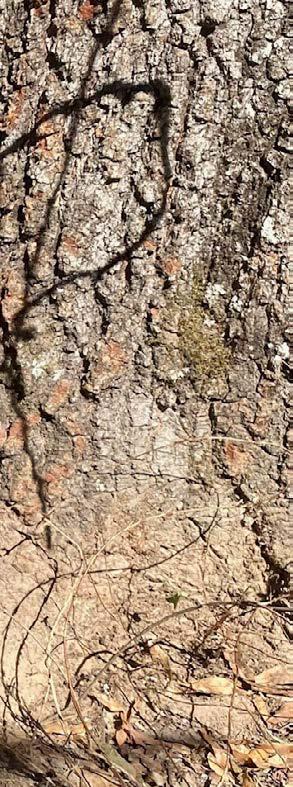
Trapping Raccoons Down South
BY DAVID STRICKLAND
Raccoons have played a significant role in the history of trapping in North America. Native Americans and early European settlers used them for food and prized their fur for its warmth, texture, and durability. The earliest known trapping methods used snares, pits, and deadfalls. As European settlers arrived, they brought steel traps to accommodate the increased demand for raccoon fur when its distinctive pelt became fashionable.
During the peak of the fur boom in the early 1800s, the increasing value of raccoon pelts led to over-harvesting and an eventual decline in animal numbers. Both beaver and raccoon populations in the US significantly decreased as the fur trade exported large numbers of pelts to Europe.
More recently, the dwindling numbers of coon hunters and a prolonged period of low pelt prices have contributed to an increase in their numbers in many areas of the country. Some current estimates put raccoon populations at around 15 million animals. They have become a nuisance in many urban areas because of their habit of raiding garbage cans and other food sources.
However, talk to any turkey hunter about these cute ring-tailed masked bandits, and you will walk away with an entirely different perspective. Multiple studies have indicated raccoons are top predators of turkey nests, and many game biologists agree with turkey hunters that an abundance of raccoons can significantly affect poult numbers.
UNDERSTANDING RACCOONS
Historical accounts suggest raccoons were routinely kept as pets by several Southeastern tribes. Young raccoons are relatively easy to tame and can be very entertaining. They were likely kept for their companionship, intelligence, and usefulness in controlling pests.
They are known as Procyon lotors in the scientific world, but others call them Ringtails, Trash-Bandits, Trash-Pandas, and Wash-bears. They are fascinating creatures that have readily adapted to dwelling in our modern urban environment but also inhabit swamps and most wooded areas.
Raccoons are most active at night as they forage for insects, vegetation, eggs, small animals, and carrion. They frequently travel alongside ditches, creeks, and rivers, searching for fish, mussels, and crawfish. Unsecured trash cans, chicken coops, and outside dog or cat bowls also receive frequent visits from local family units.
Raccoons create dens in hollow trees, rock crevices, abandoned buildings, barns, and sometimes attics. They are highly adaptable, and the dexterity within their five fingers allows them to create openings to raid stored food supplies that many consider varmint-proof.
HUNTING
877.314.1237 // GreatDaysOutdoors.com // March 2024 21
Trapping Raccoons Down South
They are generally solitary animals until mating season in late winter/ early spring. Gestation takes about two months, after which 2-5 kits are born that stay with their mother for almost a year before venturing on their own.
TYPES OF RACCOON TRAPS
I spoke to Shawn Phillips recently about the most effective traps for raccoons. He and his father, Steve, have invested several decades in helping landowners and hunting clubs manage their predator numbers. Their business, Douth South Trappers, has developed a product line that includes instructional DVDs, lures, and baits.
DOG PROOF (DP)RACCOON TRAP
Phillips said he uses Duke DP traps on 80-90% of his ringtail trapping jobs. He said their size, simplicity, and effectiveness make them an excellent choice because it reduces the risk of curious dogs getting ensnared. A small, welded stake on its bottom allows easy positioning. Their design incorporates a metal trigger that runs through a slot into the tube. The end outside the trap has a notch that holds the spring retainer when set. Food or lure is positioned underneath the trigger, and a stout spring forms a steel loop inside the tube. When pulled upwards, the trigger releases the spring-loaded wire that encircles the arm and holds it securely.
LIVE TRAPS FOR RACCOONS
Live traps are great for urban areas or around homes to remove a pet food bandit. The best live trap for raccoons is large to extra-large, with a length of about 32-42 inches. This size ensures enough space for the raccoon to move around while trapped, reducing stress and injury.
• One-door traps- Many professionals prefer these because they offer better bait protection. They are also easier for chubby raccoons to enter.
• Two-door traps- These generally have a higher catch rate due to the dual entry points. They also allow the raccoon to see through the trap, which causes them to be less cautious. You can choose to set them with one or two doors open.
Here are a few models of live traps suitable for catching raccoons:
• Havahart X-Large 1-Door Trap- This heavy-duty model is ideal for large raccoons.
• Tomahawk Live Animal Trap: A well-made trap available in one or two-door models.
• Wildlife Control Supplies MP300 Professional Series
Multi-Purpose Live Trap: This trap is also ideal for trophy raccoons.
Whatever trap you choose, following the manufacturer’s instructions is essential. Paying careful attention when setting the trigger will result in better catch rates.
Your local Tractor Supply and Farmer’s Co-Ops usually stock a variety of sizes suitable for raccoon relocation.
RACCOON FOOT TRAP
Water is like a magnet to raccoons. Creeks, culverts, and ditches are great locations for foothold traps. Trapping regulations require them to be deployed in shallow water to target wading animals and help avoid catching non-target animals. These leghold traps work well with baited pocket sets. The 1.5 size is ideal for the average-sized coon.
BEST RACCOON TRAP BAIT
I wasn’t sure if I heard Phillips correctly when I inquired about the best
bait for the Dog-roof traps he uses. “Fruit Loops,” he repeated. “They have a sweet tooth, and most any sugary cereal will do; I just prefer Fruit Loop cereal. You can also use a little squeeze jelly around the rim. And, marshmallows, they love marshmallows.”
Depending on your trap and placement, several other foods, such as peanut butter, fish, cat/dog food, and meat scraps, will attract raccoons to your set.
HOW TO TRAP A RACCOON
Setting several dog-proof traps around the perimeter of a corn feeder is an effective strategy for multiple catches. If creeks or ponds are present on a property, a combination of dog-proof and footholds along the water’s edge works well. Culverts provide a funnel, so setting traps at each end usually results in successful catches. Each comes with a short chain and swivel tied to a nearby tree with a piece of cable or anchored with a T-handled piece of rebar.
A baited live trap near bird feeders or pet bowls is a safe and effective method for homeowners. Creeks, ponds, or puddles of water attract raccoons in search of food. Position jaw traps in shallow water near the bank after creating a small horizontal hole slightly above the water level. Bait or lure placed into the back of the hole attracts raccoons and often results in a rear leg catch.
HOW TO SET A RACCOON TRAP
Dog-proof traps utilize a spring with an extended loop of wire bent to fit through the side into the pipe. Setting a DP trap can be done by using both hands to depress the spring wire and positioning the metal retainer into the slot in the trigger. A lever action tool to set the trap is also available.


ALABAMA BISON HUNT HARVEST YOUR OWN MEAT Our grass fed and hormone free Bison meat is a healthy alternative to beef with less fat, calories and cholesterol. Call 205-296-0072 for reservations, prices and to create a lifelong memory. ALABAMA HUNT 22 March 2024 // GreatDaysOutdoors.com // 877.314.1237
Trapping is serious business for those with predator issues . Here is the results of a season’s catch by a professional trapper .
(Courtesy of Shawn Phillips, DST)
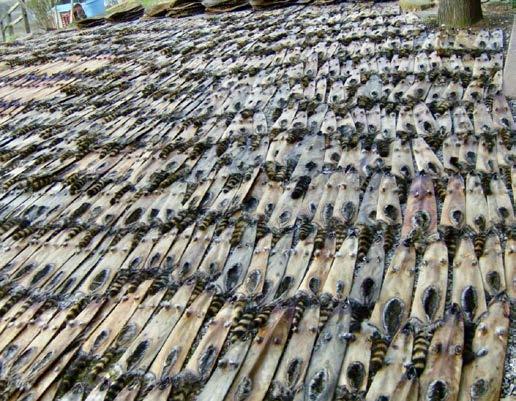
Live traps use a pivoting floor pan attached to a metal rod that activates the trigger. The doors spring shut when the raccoon steps on the metal plate. Place the bait so the critter must walk onto the pan before reaching the food or lure.
Jaw traps should be firmly positioned and anchored on flattened, debris-free areas in shallow water near the bank or each end of log crossings. Trails and logs with distinctive raccoon tracks and scat offer potential trap locations.
CHECKING AND MAINTAINING TRAPS
Trapping is an effective and ethical method of controlling predators when done correctly. Trapping regulations require regular trap monitoring so trappers can release non-target animals and avoid undue suffering. Traps should be monitored daily, and catch poles are required by law for professional trappers to aid in safely releasing any non-targeted catches.
Cleaning and maintaining the trigger mechanism is necessary to keep any trap in good working order. Dog-proof models tend to get caked with mud, so a periodic cleaning with a hose or pressure washer and repainting to prevent rust will keep them in good working order.
Different traps may have specific maintenance requirements, so always refer to the manufacturer’s instructions. Also, ensure you follow local laws and regulations regarding trapping in your area.
CONCLUSION
Raccoons can be charming creatures in the wild, but their presence around your home or farm can make them a nuisance. Whether creating a mess or causing damage to your home, these masked bandits can disrupt your tranquility and affect the turkey numbers on your property.
Trapping is considered the most effective removal method; however, it’s crucial to approach this task responsibly and humanely. By following ethical trapping guidelines or seeking help from a professional, you can successfully remove raccoons from your property, restore peace of mind, and hopefully, see more turkeys.
Trapping Raccoons Down South
Important Information Duke Traps www.duketraps.com Farmers Co-Op www.alafarm.com Tractor Supply www.tractorsupply.com Down South Trappers (DST) www.downsouthtrappers.com 877.314.1237 // GreatDaysOutdoors.com // March 2024 23

24 March 2024 // GreatDaysOutdoors.com // 877.314.1237
Chain Pickerel on the Fly
BY MATT LEWIS, PHD
The sight of fly rods and reels at the boat ramp in the warm waters of the deep south often garner a confused stare followed by the phrase: “I don’t think there’s any trout in here”. I usually play along and act surprised and genuinely disappointed. Given the fame of movies like A River Runs Through It , fly fishing for trout became popularized among the masses. At some point, an indelible conclusion was formed that the pursuit of salmonids and char are the only finned beings worthy of being pursued with a fly. Fortunately, the dogma that fly fishing is only for trout is being torn down by the growing popularity of warmwater fly fishing.
Fly fishing is simply using a weighted line to cast a “weightless” fly, the opposite of conventional fishing where a weightless line is cast by a weighted lure. In some cases, this involves the proverbial size 20 dry fly with the correct shade of yellow thread needed to fool a wary trout, but there is a growing appreciation for the fly angler’s pursuit of large toothy predators like musky, drag-screaming carp, and the abundance of bass species that inhabit the many waters across the US. These robust fisheries are the new frontier in fly fishing and its users are demanding gear and tools specifically designed for the species they pursue in the habitats in which they live. Save the delicate presentations and tweed jackets for the trout streams, some of us want to fish for species with interactions that are more akin to a backyard brawl.
Many fly anglers become mesmerized by the challenge and size offered by musky and pike, but there is a scaled-down version readily available for much of the eastern US. Chain Pickerel have commonly been viewed as a nuisance species by serious bass anglers, but these backyard scrappers can yield consistent action for the fly angler. They aggressively attack flies in shallow water, hit hard, and provide a nice fight once hooked, complete with aerial acrobatics. What more can you ask for?
Chain pickerel (Esox niger) , commonly called jackfish, are a popular gamefish that are closely related to the venerable musky and pike as members of the Esocidae family. They are elongated fish with large mouths full of teeth that make them quick and effective predators. They use their needle-like teeth to secure their prey. Their snout is sometimes referred to as “duck bills” due to its broad nature, and can easily distinguish them from gar in the water. Chain pickerel get their name from the dark, interlocking chain-like patterns along their sides which are accentuated by hues of green and bronze. They also have a dark vertical bar below their eye that resembles a ”teardrop”.
Chain pickerel are native along the Atlantic Slope from Maine to Florida and west along the Gulf coast from Florida to Texas. In southern latitudes they can extend as far north as Missouri. This
wide distribution offers anglers an exciting variety of fishing opportunities across an array of habitat types from large, open lakes to small, intimate creeks. Although chain pickerel share many characteristics with their pike cousins, size is not one of them. They are the intermediate species in the Esox genus sandwiched between the larger pike that reach 55 pounds and the smaller redfin pickerel that top out around two pounds. The IGFA world record chain pickerel was caught in 1961 in Homerville, GA. That fish weighed 9 pounds and 6 ounces and since that record has stood for over 60 years now, it should be no surprise that fish that size are not common. Trophy chain pickerel are measured by lengths of 22 inches and typically top out around five pounds. However, what they lack in size they more than make up for with their aggression and willingness to take a fly. Average sizes in most populations consist of plenty of one-totwo-pound fish in the 14–18-inch range to keep a fly angler ent ertained for days.
Fly rod weights and lengths are best matched to the flies you intend to throw with them and by the areas you intend to fish them. Flies that are cast to chain pickerel will require a six- to eight-weight fly rod coupled with a weight-matched floating line (6-8 wt). Like most outdoor pursuits, you can spend as much money as you want on gear in fly fishing, but you can catch chain pickerel with a $40 Eagle Claw fiberglass fly rod or a $1,000 Orvis rod. The typical fly rod length is nine feet in length, and although a slightly shorter eight-foot or eight and a half-foot rod might allow for better maneuverability in the tight quarters of smaller creeks, a nine-foot rod is just fine for chasing chain pickerel. Rod action is a more important consideration as a faster action will allow you to cast the larger streamers and other flies needed to entice pickerel.
The terminal tackle should consist of six to seven feet of 30-pound monofilament tippet tied directly to the fly line with a loop-to-loop connection. The remaining two feet should be a 20-lb tie-able wire bite tippet by Rio or something similar. Pickerel are not leader shy, and they can easily slice through 30-50 lb monofilament and fluorocarbon lines, so the strength of the wire tippet is crucial to withstand the toothy strikes from these aggressive fish. Tie on the fly with a loop so that the fly action isn’t lost with the stiffness of the leader.
Chain pickerel readily consume fish, crayfish, frogs, and salamanders. Flies that mimic these abundant and common food sources are a sure bet. Effective topwater flies are foam gurglers and Dahlberg divers that create a large profile and move a lot of water when retrieved. The explosive topwater strikes from pickerel make this one of my favorite methods to pursue them. Classic streamer flies that resemble baitfish, such as the Clouser minnow, or newer flies like the articulated game changers work well below the surface.
FISHING
877.314.1237 // GreatDaysOutdoors.com // March 2024 25
Flies with an erratic action, like rabbit strip, or lots of flash are more likely to elicit a strike as they can capture the attention of hungry pickerel and trigger their predatory instincts. In addition to action, for some reason the colors white, red, and black seem to work well for pickerel.
Chain pickerel can be caught year-round and are most active during the winter months when many anglers have abandoned bass fishing for deer and duck hunting, and in early spring. There’s a reason that they are a staple for ice fishermen in the north and that feature makes them common catches in early spring when many other warmwater species are still lethargic. Early spring offers the best possibility of catching a larger than average specimen as they are actively feeding to pack on calories in preparation for spawning. During these cool months, many warmwater fish are still in deeper waters, but as the sun rises, baitfish congregate in the shallows to warm up. This source of food is not lost on the pickerel and they are there, lying in wait around vegetation or drop offs to ambush the small minnows.
Regardless of the time of year, these are solitary fish so be prepared to do a lot of casting to find the fish, but once found they are not picky eaters. Chain pickerel are ambush predators and typically hold near structure where they can ambush unsuspecting prey that swims by. Chain pickerel rely on sight for hunting, so water visibility is one of the most important features to consider before even casting a fly. Focus your casts near downed trees or other structure such as weed patches in creeks and along the weedy edges of larger lakes. As waters warm in summer, spring-fed creeks remain cool and maintain active pickerel fisheries.
If you are not seeing fish follow your fly, keep moving to check other areas. Chain pickerel are usually the apex predators and are not scared to make their presence known. You will know if pickerel are present by the lightning-quick strike that seems to come out of nowhere or by the small submarine that suddenly appears beneath the fly to have a closer look before committing. The strikes can be very

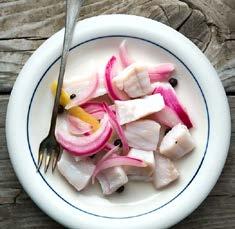 BY HANK SHAW https://honest-food.net Image courtesy of Holly A. Heyser
BY HANK SHAW https://honest-food.net Image courtesy of Holly A. Heyser
Pickled Pike

Prep 30 mins • Cook Time: 5 mins • Brine: 8 hours
Ingredients
1 cup kosher salt
5 cups water, divided
1 pound pike, cut into 1/2-inch pieces
2 cups cider or white wine vinegar
1/3 cup sugar
1 teaspoon mustard seed
2 teaspoons whole allspice
2 teaspoons black peppercorns
2 leaves bay
Peel of 1 lemon, sliced and white pith removed
1 medium red onion, thinly sliced



known to mankind.

Instructions
Heat 4 cups of water enough to dissolve salt. Let this brine cool to at least room temperature, preferably colder. When it is cold enough, submerge the pike pieces in the brine and refrigerate overnight. Meanwhile, bring the sugar, vinegar, the remaining cup of water and all the spices to a boil. Simmer 5 minutes, then turn off the heat and let this steep until cool.
When the pike has brined, layer it in a glass jar with the sliced lemon peel, bay leaves and red onion. Pour over the cooled pickling liquid with all the spice and seal the jars. Wait at least a day before eating, and I find it best after about a week to 10 days. Store in the fridge for up to 1 month.
All other fish -- including pike -- you need to freeze for 48 hours before you can make this. This will kill any potential parasites in the meat; freshwater fish like pike can carry tapeworms, which you absolutely do not want, even if they are a great weight-loss strategy...
Made In The USA Built-In Hose Stations Ceramic Coated Aluminum WWW.KILLERDOCK.COM
greatest fish cleaning stations
Table and Canopy Models Table widths from 42” to 90” King Starboard Cutting Surface (251) 207-1743 26 March 2024 // GreatDaysOutdoors.com // 877.314.1237
Chain
Pickerel on the Fly
The
quick, and pickerel are notorious for smacking a fly and resulting in no hookset. Be patient and continue to work the fly because sometimes pickerel will attempt to injure their prey on the first strike and then return to consume the prey, so a missed hookset will usually result in another shot. The water depths where they’re commonly found is shallow to moderate, typically only 3-5 feet, which often allows you to see the flash when they strike adding to the overall enjoyment of fishing for these fish. Take note of what type of areas you catch them in and concentrate your casts to similar areas to increase your odds of success.
The action and speed imparted to the fly will have to be determined in real time on the water as the mood varies from day to day and fish to fish. Sometimes they prefer to strike during a pause while other days they want a quick retrieve. I recommend starting with short, quick strips and if the fish are following but not eating, start to let the fly sit still for a few seconds between strips. This slow pause is almost irresistible to chain pickerel and will often work when nothing else will. Regardless of the retrieve, make sure to maintain a constant connection to your fly line so that you can effectively strip-set as soon as the fish strikes. As mentioned, these fish are deceptively fast in striking and any slack in your fly line will hinder your ability to get a solid hookset.
Once hooked, pickerel will jump and thrash a lot in an attempt to throw the hook. A landing net comes in handy to quickly secure the fish before they throw the hook. Once landed, do not attempt to lip these fish like a bass or you may wind up in the emergency room to repair shredded fingers.
Almost every article I have ever read regarding the edibility of chain pickerel has the same conclusion: “they’re no good to eat”. With many other options such as catfish and crappie that can easily be filleted, why bother with pickerel? Many people don’t, but unfortunately, they perpetuate the idea that they aren’t worth eating anyway.
Chain pickerel are an excellent eating fish, but the problem usually arises with the added difficulty in cleaning the catch, not eating it. Chain pickerel have Y bones, and although some say that frying renders these bones edible, the normal cleaning and filleting methods are useless to achieve boneless fillets. An additional step is required to further remove the Y bones from the centerline of the fillet by cutting down and rolling your knife out away from the lateral line on the top and the bottom of the fillet. A visual aid is more effective in illustrating how this is accomplished and a quick YouTube search will provide many videos that demonstrate how to properly do this. Once deboned, the meat is white and flaky and said to be closer to walleye in taste than pike. The delicate meat takes on a wide variety of spices and seasonings to appeal to multiple palates and is conducive to many cooking methods from grilled to baked to fried.
When pickerel eat a fly, they are anything but inconspicuous. They often cover large distances in a short amount of time and the push of water from their charge is exhilarating. Watching a predator engulf your fly and the explosive topwater takes are fascinating to witness and there is something to be said for those days when every two or three casts results in a feisty predator on the other end of the line.
Like musky fishing where success is measured by follows or eats, landing a chain pickerel is not a given. If for some reason the fish will not commit, or will only follow the fly, the spectacle of watching a pickerel follow a feathered offering is one of the most thrilling aspects of this type of fly fishing. They can be a nice change from the omnipresent panfish and bass. Also, learning how to catch them will improve your angling prowess.
Whether you’re a seasoned fly angler or a beginner, trout purist or saltwater fanatic, give fly fishing for pickerel a try. I guarantee you’ll have fun and it’s always fun to mark a new species off the fly-caught list.
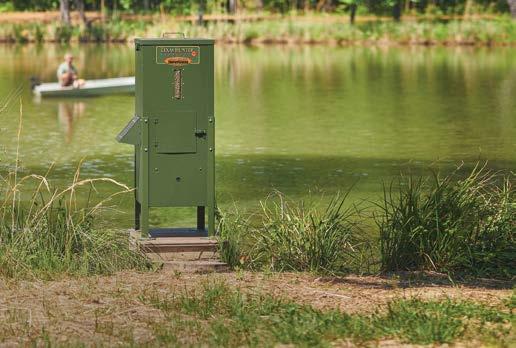

Grow Faster! BIGGER FISH Made in America Under US Utility Patent #722583 KEY FEATURES: Premium Digital Timer with 5 Year Warranty Dual motors and a patented high velocity air blower system projects feed in a large 45’ x 20’ pattern Your Choice of Straight or Adjustable Legs Optional Solar Charger mounts on any side 100% Varmint Proof KEY FEATURES: Premium Digital Timer with 5 Year Warranty Dual motors and a patented high velocity air blower system projects feed in a large 45’ x 20’ pattern Your Choice of Straight or Adjustable Legs Optional Solar Charger mounts on any side 100% Varmint Proof www.TexasHunter.com • 800.969.3337 Request a Catalog
877.314.1237 // GreatDaysOutdoors.com // March 2024 27
Chain
Pickerel on the Fly
A good gun safe can offer a degree of protection for your firearms but you should really consider insurance if you have a large collection
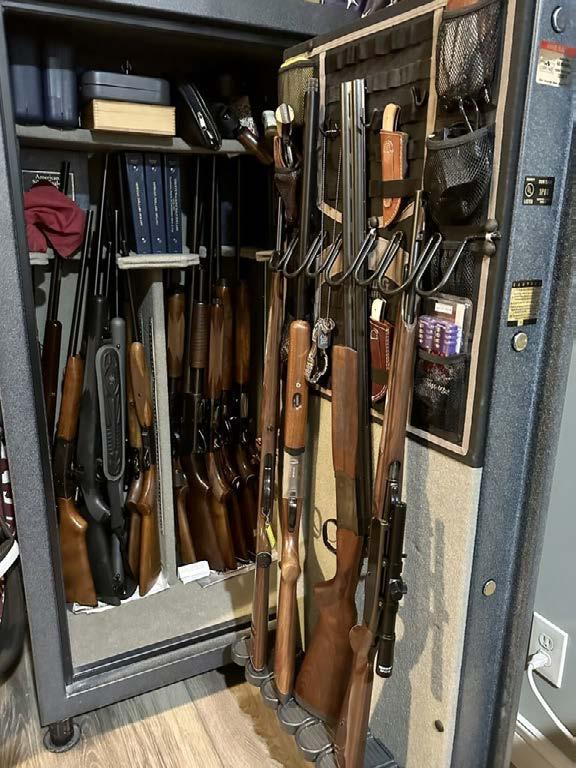
28 March 2024 // GreatDaysOutdoors.com // 877.314.1237
.
Do You Need Gun Collection Insurance?
BY DAVID STRICKLAND
Do you like to hunt, shoot skeet or targets? Have you amassed a collection of firearms? Although rather broad questions, I think it gets to the heart of the issue. Many outdoor folks and even some indoor types become enamored with the challenge of propelling various-sized projectiles from point A to point B with high precision and regularity. The search for a mechanical device that’s comfortable to hold while consistently creating a hole where it’s aimed can be elusive. So, when we find a firearm that does everything we ask of it and looks good while doing it, we usually want to protect it. Now, fast forward to someone spending decades investing in a variety of firearms that meet these criteria. Some collectors develop an emotional connection with their guns because of the great memories associated with each one and when they were obtained or used. Frequently, their enhanced value lies not only in the realm of sentiments but in their rarity. Suppose you’ve spent time building a collection of firearms or inherited a collection from a family member. You quickly realize that replacing certain guns might be difficult, or nearly impossible, unless you have gun collection insurance.
I recently discussed insurance policies specific to guns and trophy mounts with Cole Cushman. He co-founded Gun & Trophy Insurance with his father to fill a gap in most homeowner policies. His family-run business offers affordable gun collection insurance options for gun enthusiasts and hunters. I also discovered they offer policies that cover the total cost of a guided hunt and taxidermy to replace a treasured mount lost during a fire or disaster.
SCENARIOS WHERE GUN COLLECTION INSURANCE MAKES SENSE
Cushman said that an entry-level policy begins to make sense when a collection reaches a value that exceeds $10-$15,000. Insurance specific to a collector’s needs is a good idea, and insuring treasured items can offer a range of financial and emotional benefits. Here are a few other reasons to consider insuring your collection:
• Financial Protection- Insurance provides a safety net in case of loss, theft, or damage, helping you recover the item’s value.
• Peace of Mind- Knowing your valuables are insured can relieve stress and worry.
• Replacement Cost– Insurance will cover the current value of a firearm or trophy if it’s irreparably damaged or lost.
• Investment Protection– Insurance safeguards your investment for items that appreciate over time.
• Legal Requirements– Some jurisdictions or situations may require insurance for certain high-value items.
• Loan Collateral– Insurance can make it easier to use an item as collateral for a loan.
• Repair Coverage– Some insurance policies cover the cost of repairs for damaged items.
• Disaster Recovery- Insurance can help rebuild your collection after a natural disaster like a flood or fire.
• Inheritance Planning- Insured valuables are easier to divide among heirs equitably.
• Tax Benefits- The insurance cost may sometimes be tax-deductible as part of investment or business expenses.
ARE GUNS COVERED BY HOMEOWNERS INSURANCE?
Cushman advised me that most standard homeowners insurance policies offer some degree of coverage for firearms, but there are caveats to consider. The range of protection differs against risks like theft, fire, or vandalism, and most policies include limitations you must consider when insuring your collection.
It’s crucial to read your policy carefully and consult your insurance agent to understand what is and isn’t covered. If your firearms are valuable or liability concerns exist, you may need to consider a specialized firearms insurance policy. Here are a few points to consider when weighing your coverage options:
• Coverage Limits– Homeowners insurance often has a cap on the amount reimbursed for firearms, which may not cover the total value of a high-end or antique collection.
• Exclusions– Certain circumstances, like accidental discharge, may not be covered.
• Documentation– Insurers often require detailed documentation for valuable items, including firearms.
• Scheduled Personal Property– Additional coverage known as scheduled personal property may be necessary for more extensive or valuable collections to provide adequate protection.
• Liability– Liability coverage for injuries caused by firearms varies widely by policy and jurisdiction. Some policies exclude it altogether.
• Local Laws– State and local laws can impact how guns need to be stored or secured, which could affect your coverage.
INSTANCES WHERE GUN COLLECTION INSURANCE HAS PAID OFF
Cushman related two stories where their custom policies paid off.
He described a house in Alabama where the owner had built a concrete vault room to secure his mint-condition collection of WWI & II weapons. This home became engulfed in fire, and the water and chemical agents used to subdue the flames damaged his vintage collection. Luckily, his Gun & Trophy Insurance policy paid him $300,000, and he got to keep his collection.
Cushman also described a remote hunting cabin whose walls displayed several cherished African trophy mounts. The owner’s trophy policy reimbursed him $100,000 so he could book another hunt to replace those mounts.
The above scenarios are just two reasons for acquiring insurance specific to your collection of guns and or trophies. However, there are many legitimate reasons to insure your collection.
WHAT IS THE BEST WAY TO INSURE A GUN COLLECTION?
Choosing the right policy for your gun collection involves a few key steps to ensure you get the best coverage for your needs. The best place to begin is to inventory and assess what it would take to replace your current collection. Here are a few points to consider in your search for the best coverage:
• Inventory and Appraise– Document each item in your collection, including make, model, and serial number, along with any
877.314.1237 // GreatDaysOutdoors.com // March 2024 29
unique characteristics. Take high-quality photos and consider a professional appraisal for valuable pieces.
• Review Existing Coverage– Check your existing homeowners or renters’ insurance policy to see if it offers any coverage for firearms and to what extent.
• Understand Limitations– Standard policies often have coverage limits for firearms, and you’ll want to understand any exclusions or conditions.
• Scheduled Personal Property– Some insurance policies allow you to add “scheduled personal property” coverage for individual high-value items, which could include firearms.
• Specialized Firearm Insurance– Consider a specialized policy for firearms and trophy mounts. These policies may offer broader coverage and higher limits; some even cover accessories, ammunition, and scopes.
• Liability Coverage– Ensure you understand how each policy handles liability related to firearms, especially if you plan to use them and not just keep them as collectibles.
• Safety Requirements– Many insurers require specific safety measures, such as secure storage in a safe or gun lockbox, as a condition of coverage.
• Periodic Reviews– As you add or remove items from your collection, update your inventory and policy accordingly. Consider regular reappraisals for valuable or antique items, as their value may change over time.
• Compare Quotes– Invite quotes from multiple insurers to find the most comprehensive coverage for the best price.
• Consult Experts– Seek advice from experts or fellow collectors with experience insuring firearms to ensure you consider all aspects.
• Read the Fine Print– Always read the terms and conditions of your insurance policy carefully to understand what is and isn’t covered.
By carefully selecting and customizing your insurance coverage, you can better protect your investment and enjoy peace of mind.
COMPARING THE BEST GUN COLLECTION INSURANCE POLICIES
Gun and Trophy Insurance
For over 40 years, the Cushman family has offered insurance for antique, military, and modern firearms. They also provide coverage for hunter’s trophy mounts, including travel, guide service, and taxidermy costs to replace that visible reminder of their hunting adventure.
Cole Cushman is an avid hunter and collector who understands the need for a comprehensive policy that reflects real-world replacement costs at an affordable rate. Below is a sample of their current annual premiums based on collection size with a $500.00 deductible per occurrence for guns and trophies/hunt replacement.
NRA Gun Insurance
The National Rifle Association has been in the business of promoting and protecting shooter rights since 1871. They have a membership of nearly five million and offer several types of insurance for its members.
They currently offer a variety of policies that cover:
• Personal firearms liability
• Firearms Instructors
• Hunt and lease
• Firearms businesses
• Guides and Outfitters
If you’re already a member, check out their policies; if not, call and get a quote.
Collectibles Insurance Services (CIS)
CIS was founded in 1966 to fill a void in insurance coverage for
various collectibles. They have grown to provide specialized policies for most acquisitions, including guns.
CIS has been helping protect cherished collections for over 50 years. Their decades-long experience in protecting antique to modern gun, knife, and edged weapon collections of all sizes, including ammo, accessories, and gun safes, translates into superior protection that values your firearms as much as you do.
Their comprehensive coverage includes:
• Accidental Breakage
• Burglary
• Fire
• Flood (except in Zones A & V)
• Loss in the Mail
• Natural Disasters
• Theft
You do not need to provide serial numbers to insure your collection, and they also provide protection while traveling, exhibiting, and storage facilities.
Core-Vens Insurance (Core-Vens & Company, Inc .)
Core-Vens & Company, Inc. is a family-owned and operated independent insurance agency founded in 1963 and located in Clinton, Iowa. They’ve been insuring firearms collectors, dealers, and shooting sportsmen since 1987 and offer a wide range of coverage for individuals, dealers, and firearms and ammunition manufacturers.
They offer wide-ranging policies that cover everything from autos to worker’s compensation. Their comprehensive approach means they can provide custom policies with coverage tailored to gun owner’s specific needs.
SIAI Gun Insurance
Sportsman’s Insurance Agency Inc. (SIAI) was founded in 1991 to focus on insurance coverage for gun clubs, gun owners, and other businesses in the firearms industry. Hollis Boss started SIAI as a successor to the Hollis Boss Agency, providing a full range of insurance services, including coverage for gun clubs. Hollis is a past President of the NSSA, a member of the NSSA Hall of Fame, and a former U.S. Shooting Team Foundation Chairman.
This insurance program is designed especially for ATA, NSSA/ NSCA, SCI, and SCTP/SASP members who reside in the United States or Canada. It works exclusively with firearm and gun club insurance as a separate, annual policy with several advantages:
• Worldwide coverage,
• All risk coverage,
• No waiting period,
• No deductible, primary insurance
• Full replacement value coverage (for items currently being made),
• Below market rates.
FINAL THOUGHTS ON GUN COLLECTION INSURANCE
If you’re the type of person who enjoys the outdoors and loves the Second Amendment, you probably already have the foundation of a budding gun collection. We grey-haired folks often don’t realize how many guns we have amassed until we clean a closet or check under all the beds.
A good gun safe can offer a degree of protection for your firearms. However, if you want genuine peace of mind about your gun collection and all those accessories or that special trophy on the wall, consider an insurance policy designed specifically for them.
Do You Need Gun Collection Insurance? 30 March 2024 // GreatDaysOutdoors.com // 877.314.1237
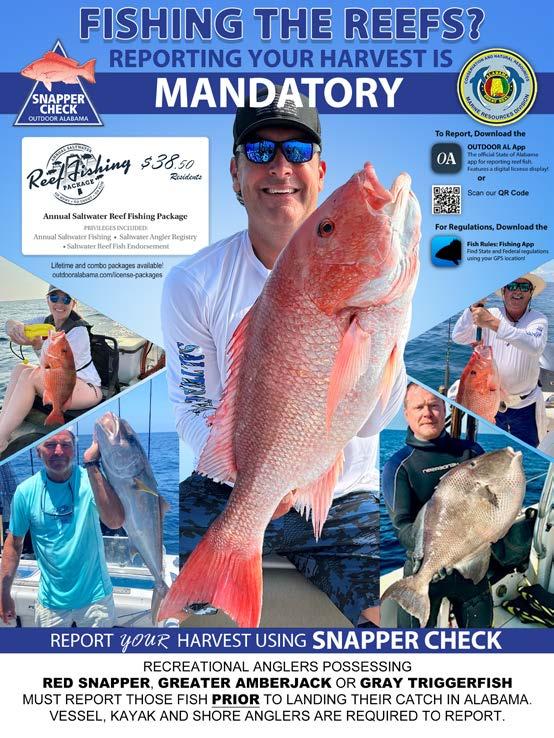
877.314.1237 // GreatDaysOutdoors.com // March 2024 31
Epoxy Garage Floor Troubleshooting Before You Start
BY JOE BAYA

As I get older, the gear that I use to pursue my outdoor activities seems to multiply each year. Along with this gear, there is a whole other subset of tools and materials used to maintain the gear and even more necessary equipment and appliances (like freezers and gun safes) that I use to store my valuables. Where does all of this equipment go? The garage, typically. Coolers, tractors, UTVs, and boats tend to leak fluid, and boots and tires tend to hold on to stubborn mud and clay, and over time, a garage floor becomes a collection of all of your adventure’s nastiness. I recently completed a move and before I organized all my gear into my garage, I decided I wanted a nice finished floor that I would be able to easily clean up. There are a lot of potential solutions for this on the market, but where I settled was on an epoxy garage floor.
THE GUIDE TO GARAGE FLOOR EPOXY
Something else that has come with age is my understanding that my time is the most valuable asset I have. Building a family and trying to excel in a career doesn’t leave much left in the day for DIY projects if I
Going with professional garage floor epoxy installers can actually save you money in the long run by having it done correctly, the first time
want to continue to get outdoors and pursue game and fish. One of the most frustrating things in my life currently is having to spend a lot of time redoing someone else’s shoddy work (or my own). Understanding this means I tend to look at new projects from a mindset of “What can go wrong?” before I start. Troubleshooting problems before they happen has started to save me a lot of headaches and led me to purchase different products than I otherwise would have if I hadn’t approached things with this mindset.
Before my move, I knew nothing about epoxy garage flooring. The problem for neophytes is that they don’t know what they don’t know. Salesmen know this and they can easily tell you what they want you to know, and not what you need to hear. When I’m new to a subject or skill, I look for a guide who is honest about the ups and downs of the process and can help me see around corners. If a salesman can’t articulate the cost/value equation of his product in comparison to other options, it’s usually a good indication that you need to do more research.
32 March 2024 // GreatDaysOutdoors.com // 877.314.1237
I found one such guide in Will Rieben. Will is the owner of GarageExperts of the Florida Panhandle, but equally as important, Will is a neighbor. Because I knew Will personally, I knew that I could trust him to give me straight answers because he’d have to stare at me driving by regularly! GarageExperts of the Florida Panhandle is a franchise of the larger GarageExperts, a nationwide installer of epoxy flooring, cabinets, and storage. Before I decided on which epoxy garage floor to install, I sat down with Will to learn the pros and cons of the various options and the common pitfalls of installation so that I could be sure I was making the right decision.
WHY GARAGE EPOXY FLOORING?
“Epoxy, or concrete coatings in general, are an excellent investment in your home, retail, and industrial spaces. Most folks refer to concrete coatings as ‘epoxy,’ when it’s really a multistep process with different products,” says Will.
He adds, “There are three big reasons for coating your concrete. The first is protection. A quality concrete coating should have a non-porous topcoat, so you will avoid the ugly stains on your garage, pool deck, or patio. Second, it makes the surface much easier to clean. Blow it off, mop it, vacuum, spray it out. Your choice. Finally, it just looks awesome. I am a firm believer that you should make your garage or patio look as good as the rest of your home. The garage is the last thing you see when you leave for work, and the first thing you see when you get home.”
OPTIONS IN EPOXY GARAGE FLOORS
There are several kinds of products used for concrete coatings, but it’s important to understand that it isn’t just the epoxy that makes the garage floor coating stand the test of time.
“GarageExperts uses a combination of Epoxy and Polyaspartic,” explains Will. “After our mechanical grind and surface preparation, we use epoxy as the base. This provides a moisture vapor barrier three times greater than the competitors, and we also have the strongest adhesion strength, meaning the GarageFX epoxy bonds better to concrete. We have over 140 different flake blends and an infinite number of custom flake blends. On top of the flake, we use an ultra-high solids polyaspartic. So it’s the best of both worlds. The epoxy has the highest adhesions and highest moisture vapor barrier in the industry, and the polyaspartic topcoat provides an incredibly hard, UV-stable clear coat.”
COMMON PROBLEMS WITH EPOXY FLOORS FOR GARAGES
I’m all ears to hearing how a new product can benefit my life. But the devil is often in the details. I’ve seen coatings peel and flake, so I wanted to be sure that I could get what I wanted and it was going to last. Before I tackle any job, I always ask what kind of problems might be encountered . There are some challenges involved in getting it right .
“Every concrete slab is different. Some concrete is very hard, some is soft. The hard concrete takes a while to grind and prepare, and the soft concrete will produce more dust during the surface preparation. We have vacuums attached to our grinders for dust mitigation,” Will explains. ”Other challenges are with stem walls, or the vertical pieces of concrete around the perimeter of your garage. Our products are incredibly dense, so they are a challenge working in the vertical plane. Often we will do a double coating on stem walls to ensure good flake coverage.”
IS IT WORTH IT TO BUY A GARAGE FLOOR EPOXY KIT?
You might be considering doing this project yourself. I love the satisfaction of a job done right. Now, a professional installer wants to earn your business, because if you do the work yourself, there’s nothing there for them, but Will’s answer made the most sense to me with regards to having the right tools.
“The DIY kits fill a specific piece of the industry, certainly. They have a single coat of a much lower quality epoxy and a tiny bit of decorative flake. Also, the DIY kits do not come with tens of thousands of dollars of surface preparation tools. Surface preparation is critical to the longevity
of any application. DIY kits do not have the adhesion strength or moisture barrier that our GarageFX products do. Hot tires will pull them right off the concrete and they tend to peel off in high moisture areas.”
HOW TO EPOXY GARAGE FLOOR – A PROFESSIONAL’S PROCESS
Installation is a multi-step process. At my home, the installation technicians arrived, introduced themselves, and went over what they were going to do. Their first step was to mechanically grind the concrete.
“This profiles the concrete and opens up the pores of the concrete,” Will says. “The grinders look like overgrown floor buffers. They are hooked up to industrial vacuums to help control the dust.”
I can second this. I make more dust with weekend woodworking projects than they did with my concrete.
There were quite a few cracks and divots in my 20-year-old slab, and I watched as the team corrected these issues. The next step is to roll out the epoxy.
Says Will, “The epoxy has a special fusion technology that wicks into the concrete and fuses inside the slab, giving it the highest moisture vapor barrier and the highest adhesion strength in the industry. Of special note, GarageExperts makes all our liquids. We have chemists on staff who make each batch with tight quality control. This fact really sets us apart.”
While the epoxy is penetrating, the installers throw out the flake. A note about the flake, they have so many options, it will make your head spin. I just let my wife choose! Dealing with epoxy is smelly, sticky work, and I was glad to see the installers had all the proper PPE and I wasn’t involved in this part!
“After the epoxy cures, we scrape the floor as flat as possible, then roll out the ultra-high solids polyaspartic topcoat. This polyaspartic creates the scratch-resistant, abrasion-resistant, UV-stable, non-porous surface,” Will says.
I can back up this claim. I have a 900-pound gun safe that my wife and I had to shimmy across the garage floor after the installation was complete. I was sure this was going to scratch the coating but to my surprise, we couldn’t see any indication that we had abused the floor as we did.
WHAT INFLUENCES GARAGE EPOXY FLOOR COST?
As with all purchases, the cost/value equation must be assessed. We’ve all done something cheap and then ended up paying more (and dealing with problems) in the long run than we would have if we had just had it done right the first time. With epoxy coatings, several factors can influence the cost.
According to Will, “Price depends on a few factors, such as the location of the application – inside or outside; quality of concrete; the vertical stem walls; and the client’s flake choice. For outside surfaces, we use an upgraded moisture vapor barrier epoxy to stand up to the increased evaporative effects of the groundwater. Although most of the industry tries to limit their flake choices to make their logistics easier, we do a lot of customized and upgraded flake blends.”
WHAT TO LOOK FOR IN EPOXY GARAGE FLOOR INSTALLERS
There are a lot of competing installers out there and an epoxy garage floor is hopefully the kind of thing that you only do once. With an installation of a product you are not familiar with, I wanted to know what you can ask to help you compare options. Will brings up some good questions to ask to make sure you are taken care of before, during, and after installation.
• What are the products being used? Not all products are created equal. There are many variances within product categories such as epoxies, polyureas, urethanes, and polyaspartics. Technical Data Sheets will indicate performance characteristics for comparison.
• What is the method of surface preparation? A lot of untrained companies will try to acid etch the surface but that doesn’t provide
LIFESTYLE
877.314.1237 // GreatDaysOutdoors.com // March 2024 33
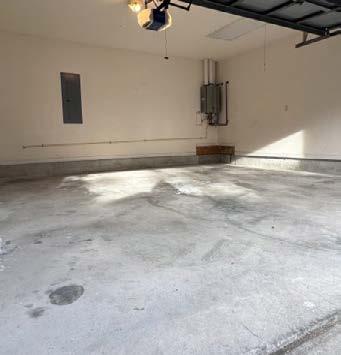





the correct surface profile level for optimal coating adhesion and longevity.
• Do you have any referrals? Referrals are a great way to verify the company’s quality of work and customer satisfaction.
• What is your warranty? Are they providing any warranty on their work or products used? GarageExperts provides a lifetime adhesion warranty on all garage applications for as long as you own your home. I’d say that’s peace of mind.
MY EPOXY GARAGE FLOOR EXPERIENCE
GarageExperts of the Florida Panhandle was recommended to me by a neighbor. I got to see the finished product in their garage and learn how happy they were with the finished product, and that made me a lot more comfortable to reach out. Now that I’ve had a chance to see the entire process from consultation to installation to harsh use, I can truly say that I am very pleased I decided to upgrade my garage floor to a finished coating. Spills have been easy to clean, debris has been removed with little effort, and the look makes my garage feel more like a living space and less like an outdoor space. If you’re in the Florida panhandle and you’re considering a garage floor coating, all you have to do is visit garageexperts.com or call 850-999-5582. They will get you set up for a free in-home estimate, show you the samples, discuss the process, and take measurements for an accurate estimate.



Epoxy Garage Floor Troubleshooting Before You Start
A garage floor can become a collection of all of your adventure’s nastiness Attractants and Nutrient packed feeds. IRRESISTABLE • SCIENTIFICALLY FORMULATED • PROMOTES EXCELLENT HERD HEALTH • EASY TO FEED • HUNTER SATISFACTION Visit our website www.southernseedfeed.com or call 662-726-2638 to find the dealer nearest you. The Magnetic Force You Need to Draw in Whitetails Corn Peanuts Rice Bran Dried Distillers Grain Dry Molasses Peanut Flavoring Protein Pellets Vitamins & Minerals Whole Corn Shelled Peanuts Roasted Soybeans Added Peanut Flavoring Rice Bran Corn Dried Distiller Grains Corn Products Dry Molasses Rice Bran Rice Bran Peanut Butter Flavor Rice Bran Persimmon Flavor Whole Corn Roasted Soybean Same Benefits as Apple Corn with added Apple Flavoring High Quality - Aflatoxin tested Antler Magnet Trophy Buck w/Peanuts Ultra Rack Rice Bran Extreme Apple Madness Triple Clean Corn 34 March 2024 // GreatDaysOutdoors.com // 877.314.1237

n MANDATORY CWD SAMPLING OF HUNTER HARVESTED DEER ON SPECIFIED DAYS WITHIN CHRONIC WASTING DISEASE MANAGEMENT ZONE (CMZ)
n NO TRANSPORT OF WHOLE DEER OR DEER (CERVID) BODY PARTS OUTSIDE OF CMZ OR IMPORTED FROM OTHER STATES UNLESS COMPLETELY DEBONED
n NO BAITING OR SUPPLEMENTAL FEEDING OF WILDLIFE IN THE CMZ

OUTDOORALABAMA.COM/CWD FOR LATEST INFORMATION ON CWD AND ZONE LOCATION, VISIT Search OUTDOOR AL on your app store! All hunters are required to report their deer harvest using Game Check, which will help the Alabama Department of Conservation and Natural Resources effectively manage wildlife for generations. GAME CHECK IS MANDATORY FOR EVERY DEER HUNTER Check your harvest at OutdoorAlabama.com/GameCheck or by using the official ADCNR mobile app Outdoor AL
KNOW THE REGULATION FOR THE CHRONIC WASTING DISEASE (CWD) MANAGEMENT ZONE 877.314.1237 // GreatDaysOutdoors.com // March 2024 35
When you’re spending hours outdoors, comfort is key, and feeling fresh and dry can greatly enhance your fishing experience.

36 March 2024 // GreatDaysOutdoors.com // 877.314.1237
Choosing the Best Fishing Hoodies For Hot And Cold Weather
BY NICK WILLIAMS
The first time I saw an angler perched on the deck of a bay skiff with a tight-fitting, long-sleeved fishing hoodie pulled up over the brim of his hat, I shook my head. Fashion trends come and go in the outdoor world (the recent resurgence of old, blob-style camo among younger duck hunters is a good example), and I was positive I was looking at the newest flash-in-the-pan fishing fad. But when my dad had to go and have skin cancer removed, I took a second look at my closet. I have always loathed sunscreen and other lotions, but am unfortunately pale-skinned. I also have big ears that seem to have been purposefully designed to catch maximum sun exposure. The idea of a lightweight, breathable, comfortable, UV-resistant garment that covered the back of my neck and ears started to seem more functional than fashionable and thus to quest to find the best fishing hoodies began.
After buying and trying a few, I can say that fishing hoodies may be a fashion trend in the outdoor industry, but they’re also extremely practical. Some more so than others, which is why in this article we’ll be looking at how to evaluate the best fishing hoodies to make sure that you select the perfect garment for your fishing environment. Whether you’re hopping frogs across lily pads in the heat of summer, slow pitch jigging in the Gulf or jigging for open water crappie in the dead of winter, this article will help you select the perfect hoodie to keep you comfortable on the water.
HOT WEATHER FISHING HOODIES’ SELECTION CRITERIA
While it seems counterintuitive to wear long sleeves in the middle of summer, a lightweight hoodie in an appropriate fabric can keep you more comfortable throughout a day of fishing than a short-sleeved t-shirt. But not just any long-sleeved hoodie will work. A good summertime fishing hoodie must be breathable, provide protection from UV radiation, and wick moisture away from your skin in order to keep you cool, dry, and sunburn free.
Breathability
When you’re out fishing in hot conditions, your body tends to heat up quickly, especially if you’re active. A breathable hoodie allows air to circulate close to your skin, which helps to regulate your body temperature. This airflow is vital for keeping you cool and comfortable throughout your fishing trip.
A hoodie that doesn’t breathe well will trap heat and moisture against your skin. This can lead to excessive sweating, discomfort, and even dangerous overheating. In a warm and humid environment (like a lake on a hot, still day), this lack of ventilation can become particularly uncomfortable and can even lead to heat-related illnesses, like heat exhaustion.
A breathable fishing hoodie usually features lightweight materials (such as cotton, bamboo, wool, or a synthetic blend) and a design that facilitates air circulation. These materials often have moisture-wicking properties, which means they can draw sweat away from your body and allow it to evaporate quickly. This wicking action not only keeps you dry but also helps in cooling your body down.
Another aspect of breathability is the prevention of a clammy or sticky feeling against the skin, often experienced with non-breathable fabrics. When you’re spending hours outdoors, comfort is key, and feeling fresh and dry can greatly enhance your fishing experience.
UV Protection
A fishing hoodie with UV protection helps to shield your skin from the sun’s harmful rays. The fabric used in these hoodies is specially designed to absorb or block the majority of the sun’s UV radiation. This protective feature is often measured as UPF (Ultraviolet Protection Factor). A higher UPF rating indicates better protection against the sun’s UV rays. For example, a hoodie with a UPF rating of 50 allows just 1/50th of the sun’s UV rays to pass through, significantly reducing your skin’s exposure.
Wearing a hoodie with UV protection is especially beneficial for anglers because water can reflect and intensify the effects of UV rays. Even on cloudy days, UV rays can penetrate through the clouds, making protection necessary at all times.
Furthermore, UV-protective clothing provides a more consistent defense compared to sunscreen, which can wash off or be applied unevenly. It also covers areas that might be missed or neglected when applying sunscreen, such as the back of the neck or ears.
Moisture-Wicking Properties
As you fish, your body naturally produces sweat to cool itself down. However, if this sweat isn’t properly managed, it can lead to discomfort and even health risks like overheating. This is where the material of the hoodie becomes crucial.
Traditionally, cotton has been a popular choice for its comfort and natural feel. However, cotton absorbs moisture and takes a long time to dry, which can lead to a damp and uncomfortable experience, especially in warm, humid conditions. On the other hand, synthetic fabrics, such as polyester or nylon, are designed to wick moisture away from the skin. These materials are engineered to draw sweat to the surface of the fabric, where it can evaporate more quickly. This keeps you dry and comfortable, even during long hours under the sun.
In addition to synthetics, another excellent material for warm-weather fishing hoodies is bamboo fiber. Bamboo is known for its natural moisture-wicking and antibacterial properties. It’s also incredibly soft, adding to the comfort factor. Unlike cotton, bamboo doesn’t hold onto moisture, allowing it to evaporate more efficiently and keeping you cooler and drier.
Aside from comfort, moisture-wicking fabrics play a crucial role in regulating body temperature. By efficiently moving sweat away from the body and aiding in its evaporation, these fabrics help to cool the body down, reducing the risk of overheating. This is particularly important when fishing in warm climates,
FISHING 877.314.1237 // GreatDaysOutdoors.com // March 2024 37
Additional Features
When selecting a good fishing hoodie, anglers should consider several other features beyond the basics of breathability, UV-protection, and moisture-management in order to enhance their fishing experience.
The hood design, for example, is crucial for both comfort and functionality. A well-designed hood should provide ample coverage without obstructing peripheral vision, which is essential for safety and ease when casting and navigating the fishing environment. Additionally, a hood that is compatible with a hat or a cap is crucial, since most anglers wear headgear for extra sun protection and to shade their eyes.
Thumb holes in the cuffs are another feature that can be extremely beneficial in a fishing hoodie. These holes allow the angler to extend the sleeves over their hands, providing additional protection from the sun without requiring gloves that make it difficult to tie knots and handle fish.
In addition to these features, there are other aspects to consider. For instance, pockets can be highly useful in a fishing hoodie. Pockets that are strategically placed and secure, such as zippered or Velcro pockets, can provide convenient storage for small fishing gear or personal items. Some hoodies also feature special loops or attachments for fishing tools, enhancing practicality.
Another important feature is the overall fit and mobility offered by the hoodie. Anglers often engage in a range of movements, so a hoodie that allows for unrestricted movement without being too loose or baggy is ideal. This ensures comfort and flexibility while casting, reeling in fish, or navigating the boat or fishing spot.
Lastly, durability is key. Fishing environments can be harsh, and gear is often subjected to elements like saltwater, sun, and rough terrain. A well-made hoodie that can withstand these conditions and repeated washes without losing its shape, color, or functionality is a wise investment for any angler.
COLD WEATHER FISHING HOODIES’ SELECTION CRITERIA
While a performance cold weather fishing hoodie may look similar to your old cotton hoodie that you wear around the house on cool days, the similarities are superficial. To keep you warm, dry, and protected on cold, wet boat rides, look for a hoodie that has ample insulation, water resistance, and a wind-blocking membrane.
Insulation
When fishing in cold weather, the body can lose heat rapidly, especially when exposed to elements like wind, moisture, and low temperatures. An insulated hoodie acts as a barrier against cold temps, helping to keep the body warm and functional.
Insulated fishing hoodies are designed to trap and retain body heat, creating a warm microclimate close to the skin. This is crucial because maintaining a stable core temperature is not just a matter of comfort but also safety. Extreme cold can lead to hypothermia, where the body loses heat faster than it can produce it, potentially leading to serious health risks.
Fleece is the most common insulator found in cold weather fishing hoodies, since it is comfortable and moisture resistant. High-loft and “berber” style fleece materials usually provide more insulation than other varieties. Another thing to look for when evaluating fishing hoodies is whether they use a double or single layer of fleece. A double layer will provide more insulation than the oftentimes cheaper single layer hoodies.
Water Resistance
Water resistance is a critical feature in a cold-weather fishing hoodie, playing a pivotal role in keeping anglers dry and comfortable. When fishing in cold conditions, exposure to rain, snow, or even just the damp environment typical of lakes, rivers, and seas can lead to getting wet. A wet hoodie not only causes discomfort but can also drastically reduce the garment’s ability to keep you warm, potentially leading to hypothermia in extreme cases. This is where water resistance becomes vital.
A fishing hoodie with water-resistant properties is designed to repel water, preventing moisture from penetrating the fabric. This ensures that the hoodie remains dry, or dries quickly if it does get wet. One common method used to achieve water resistance in clothing is the application of Durable Water Repellent (DWR) coatings. DWR is a treatment applied to fabrics that causes water to bead up and roll off the surface, instead of soaking in. This not only helps to keep the outer layer of the hoodie dry but also maintains its breathability, as a soaked fabric would hinder the passage of air and moisture.
However, it’s important to note that water resistance does not mean waterproof. While water-resistant hoodies can handle light rain or splashes, they may not hold up under prolonged or heavy exposure to water. For extreme conditions, a waterproof jacket might be necessary, although these can sometimes sacrifice breathability for complete water protection.
Wind Protection
Additional Features (Pockets, Hood Design, Cuff Design)
The design of the hoodie also contributes to its insulating properties. Features like a high collar, snug cuffs, and an adjustable waistband can prevent heat from escaping and cold air from entering. Some hoodies come with a double-layered design or additional insulation in critical areas like the core and the back, offering extra warmth where it’s needed most.
BEST FISHING HOODIES: EXAMPLES
Ultimately, which fishing hoodie is “best” for you boils down to how you’ll be using it. No one hoodie will keep you comfortable all year. Cold weather in particular usually requires a layering “system” to keep you comfortable as temperatures fluctuate throughout the day.
When fishing in colder temperatures, it’s important to think in terms of base, mid, and outer layers. Respectively, these layers serve to wick manage skin-level moisture, provide insulation, and protect from hard wind and rain. It’s difficult to find one garment that does all of these things at one time, and wearing layers also allows you to add and remove layers depending on various factors, such as time of day, whether you’re stationary or underway, or if you’re in the shade or in the sun. A 40 degree day can feel much colder if you’re riding across the bay under heavy cloud cover, for example, than it does if you’re casting on the deck in exposed sun.
With that in mind, here aresome examples of well constructed fishing hoodies if you’re looking to build a wardrobe that can take you from summer to winter.

Choosing The Best Fishing Hoodies For Hot And Cold Weather where excessive heat
to
can lead
heat-related illnesses.
38 March 2024 // GreatDaysOutdoors.com // 877.314.1237

Best Warm Weather Fishing Hoodie
The Huk Icon X Hoodie is an excellent synthetic fishing hoodie with a 50+ UPF rating and a specially woven fabric that is more breathable than your typical polyester material. When field tested off the coast of Costa Rica on hot and humid sun-soaked days, our editors reported that it performed substantially better than other hoodies they packed in terms of how dry and cool it kept them. The Micro perforations in the material weave was a big part of the heat and moisture transfer.
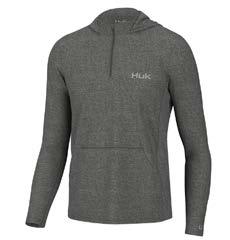
Best Cool Weather Hoodie To Use As A Base Layer
For cooler days or to use as a base layer on cold ones, Huk’s Coldfront Hoodie is tough to beat. It is wind and water resistant, and the 4 way stretch material wears well under other layers. The hollow core fibers also give the garment good weight-to-warmth value without adding unwanted bulk.

Best Cold Weather Fishing Hoodie
For colder days, the Huk’d Up Performance Fleece Hoodie works well by itself, layered over the Coldfront Hoodie, or worn under a wind and waterproof shell. It has the traditional “kangaroo pocket” that you’re used to, and hood drawstrings that allow you to draw the hood tightly around your head to trap warm air.

Best Wind And Waterproof Fishing Hoodie
Hoodies are great, but truth be told, they’re not a be-all, end-all upper-body garment. A wind and water-resistant fleece hoodie will get you through light breezes and the occasional splash over the bow, but on rainy days with driving winds, it’s best to have a good outer shell to throw on over your fleece hoodie.
The Huk Grand Banks Tidal Map Jacket is the perfect jacket to pair with a hoodie for extreme cold weather. It has a water and windproof membrane, as well as a waterproof chest pocket for your phone, keys, and wallet. It also features pit zips that you can use to allow better ventilation if the temperatures start to rise, but the rain keeps falling.
FINAL THOUGHTS
While they may not look like your dad or grandad’s idea of “fishing shirts,” technical performance fishing hoodies solve real problems and are here to stay. If you haven’t added a few to your closet, you’re missing out!
Choosing The Best Fishing Hoodies For Hot And Cold Weather
877.314.1237 // GreatDaysOutdoors.com // March 2024 39
A BEGINNER’S GUIDE TO CONTROLLED BURNS
BY JOE BAYA

40 March 2024 // GreatDaysOutdoors.com // 877.314.1237
Controlled burns have been documented through research to provide the most cost-efficient means to provide both total forage and total protein to wildlife. In addition to these benefits, the aesthetics produced by regular prescribed fire can enhance your property’s value and marketability. Denson Helms, a real estate appraiser with First South Farm Credit, explains how the recreational value of a property affects the overall value.
“The recreational value takes into consideration the overall utility and appeal of the property,” he notes. “Burning enhances the overall view and utility of a property. While increasing a timber stand’s health and productivity, burning also opens up the landscape for hunting and overall recreational enjoyment.”
If you’re skeptical, think of it this way. If a bank will lend you money on land improvements such as installing firebreaks, timber stand thinnings, and prescribed fires, as First South does, then it would stand to reason that the math has been done on whether or not a management practice will help add value to a property.
“Markets and landscapes are different, but overall I would say that a property that has been burned would sell faster and potentially at a higher value than a property that has been left idle,” Denson says. “With that being said, a property’s burn application should be set up in a way that it still can support the local wildlife. With sectional burning each year, ample green browse and wildlife cover will be available for wildlife. As we all know, wildlife is a desirable asset on a rural property.”
CONTROLLED BURNS BEFORE YOU START
So, if you’re a landowner or even a leaseholder (yes, leaseholder’s do have the ability to burn in some cases), controlled burning is a great option for you to cost-effectively enhance your property’s recreational and commercial value.
Ready to learn how to conduct one on your property? Let’s learn from an expert prescribed fire practitioner, Ted Devos.
Ted is a partner in Bach and Devos Wildlife Services, and he and his partner burn more than 13,000 acres annually. I recently sat down with him on the Huntin’ Land Podcast to pick his brain about what you need to know to get your first burn going.
“Even after 20 years of doing it intensively, and 40 years of doing it, I still get butterflies in my stomach,” says Ted. “You know the risk is there, I get a little nervous until the fires have been burning for a little while and you know what you’re up against. There’re always variable conditions that you’re not expecting. And that’s kind of the fun of it. But it’s also the scary part of it. And when you’ve done it a long time, you start seeing those places where you’re gonna have problems.”
A solid plan for where problems might occur, where firebreaks need to be, and how you’re going to handle potential problems is paramount. If you’ve never burned before, you should consult with professionals to help you put together this burn plan and conduct the burn.
PRESCRIBED BURNING LEARNING
When I conducted the first few prescribed fires on my property, I was just the help. I plan to continue to be led by a professional until I feel comfortable. I’m burning roughly 60 acres every year, in 10-15 acre sections, so that means it may be many years before I feel like I understand what I’m doing with enough authority to do it alone. That learning curve may not be fast enough for you, or you may not have any interest in leading the charge. In either of those two scenarios, there are some options to help you learn faster or even conduct burns without your involvement.
The first option is to talk to your Consultant Forester. If you don’t have a relationship with one, create one, as it will benefit you in many ways. If they do not
conduct controlled burns themself, make sure he has a trusted team that he can contract this work to. A key consideration is making sure that your forester or the team he uses are certified prescribed burn managers.
Another option is to work through your state’s certified prescribed burn manager training program to obtain your certification. This program is typically administered by your state’s forestry commission. In most states, the law is that to have liability protection, the supervisor of your burn has to have this certification. These courses typically cover the discussion of fire behavior, burning methods, safety, planning, smoke screening and state fire laws.
The last option is to join a prescribed burn association. In my area, the Central Alabama Prescribed Burn Association is a great option for neighbors to help their neighbors with conducting prescribed burns on each others’ land. The goals of these types of associations are centered around teaching competence in safe burning, providing public awareness about the benefits of prescribed burning, and pooling resources to provide an economical method for small acreage landowners to burn safely, effectively, and regularly.
FUNDING A CONTROLLED BURN
“If you’re working with contractors like us that charge to burn somebody’s place, that cost will vary depending on where you’re at. It might be $15 to $25 an acre for understory burning,” says Ted Devos. “I know that’s a big window. But it depends on who you’re contracting with. If you’re in South Alabama, it’s going to be different than if you’re in North Alabama.”
Although burning arguably pays for itself in terms of pest and disease resistance in your timber and by reducing competition from deeper rooted competitive vegetation, it is not free from a cash flow perspective. Here are some programs that will help share the cost or pay for it entirely.
GOVERNMENT COST SHARE FOR PRESCRIBED FIRE
As a first course of action, it’s wise to inquire with your state’s forestry commission and local USDA office to determine if you are eligible for their cost share programs. One example is Alabama’s Southern Pine Beetle Prevention Cost-Share Program. Federal cost share is available through your local USDA NRCS office. There are many programs that offer landowner assistance for a wide variety of conservation activities. You help fund these programs, apply for them and take advantage of them where you can.
LAND IMPROVEMENT LOANS
In addition to a $15-$25 per acre burn cost, firebreaks can be a significant expense, depending on the property. Putting heavy equipment such as bulldozers and excavators on your property may require additional capital that you don’t have access to until your next timber harvest. If you’re like me, while you’ve got that equipment on the property, you probably have a laundry list of other land clearing projects you might like that operator to knock out while he’s there. I recently had some firebreaks installed, food plots cleared and root raked, and roads established on my property. I would tell you to expect $2,000 +/- in land clearing costs per acre. If this is outside your reach, a lending institution like First South Farm Credit offers land improvement Loans to help you manage your property to its best potential.
FINAL THOUGHTS ON PRESCRIBED FIRES
Prescribed burning has been around for thousands of years. The native wildlife and plant communities as well as the commercial timber interests on your property will flourish from the application of properly administered controlled burning. There are many ways to cost share if not pay for the cost of burning entirely no matter how small your property may be. I’ve heard just about every excuse from landowners not to burn, and aside from tracts located near sensitive urban areas or roads, there aren’t any problems I’ve heard that there isn’t a solution for.
Smokey the Bear had some things wrong, burn your land!
FISHING
877.314.1237 // GreatDaysOutdoors.com // March 2024 41
SEMINARS HIGHLIGHT ALABAMA AND TENNESSEE FISHING SHOWS
BY NICK WILLIAMS

Legendary angler Mike DelVisco has carved out a niche in the fishing world offering detailed seminars on sonar usage .

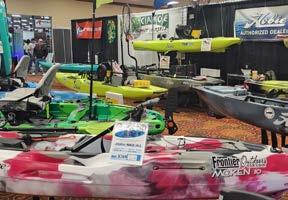
42 March 2024 // GreatDaysOutdoors.com // 877.314.1237
As winter transitions into spring, anglers in the Southeast are gearing up for the upcoming fishing season. Two highly anticipated events where anglers can learn new techniques and strategies for the 2024 season are the East Tennessee Fishing Show in Knoxville and the Alabama Fishing Show and Expo in Gadsden on March 8th through March 10th. These shows provide opportunities to check out the latest fishing products, of course, but they also provide a chance to gain valuable knowledge from top professional anglers and guides. Dozens of seminars are offered, covering a wide variety of topics relevant to freshwater anglers.
On a recent episode of the Alabama Freshwater Fishing Report podcast, we sat down with Mike DelVisco to talk about the seminars these shows offer. His seminars at the East Tennessee and Alabama shows are consistently popular with anglers looking to gain an edge from one of the most knowledgeable and respected figures in bass fishing today. With over 40 years of experience, he’s knowledgeable on many aspects of fishing, but his specialty is the use of modern sonar technology for locating fish and reading underwater structure.
MIKE DELVISCO SONAR SEMINARS
Sonar units have come a long way since the original Lowrance “Green Box” Fish Lo-K-Tor. I know, because I own a functioning unit and still take it out from timeto-time! When this unit was first introduced in 1959, it was revolutionary; showing anglers not just the water depth beneath their boat, but also signals from structure. It could even show you fish, if you knew how to translate the flickering red lights that popped up on the dial.
Today’s units are much more powerful and sensitive, and show you more information than anglers sixty years ago ever dreamed of. But there’s still a mix of science and art when it comes to translating what’s shown on a unit’s display into a vision of what’s happening below the surface.
This is where Mike comes in.
“I’ve done bass fishing seminars all over the country for years,” he says. “And in the last 10 years, I’ve really ramped up the sonar stuff. It’s kind of my little niche in the industry. It’s something that I like to teach, and something that is really popular with anglers because it’s not a not an easy thing to teach. There’s so much technology involved, you know? And to be good at teaching sonar, you have to be able to do it for two different types of people. You have to be able to cover the basics for folks who know nothing about it, but you also have to engage with folks who have a pretty good familiarity with it and are really looking for highly advanced lessons. So I try to cater a little bit to both of those individuals.”
FISHING SEMINARS FOR ALL ANGLERS
While Mike is primarily a bass guy, the East Tennessee and Alabama Fishing Shows cater to freshwater anglers targeting many fish species. These shows are local to the Tennessee River basin, which leads the country when it comes to biodiversity. Anglers nearby have the opportunity to catch dozens of species, and the seminars offered reflect this diversity.
“The nice thing about going into the shows is; it’s not just bass fishing,” Mike says. “There is so much to do here in East Tennessee, you know? We’ve got everything from catfishing, to crappie fishing, to bass fishing…there’s even walleye and sauger, and an occasional muskie! There’s lots of stuff to catch. And we’ve got seminars that cover every single species that you might want to catch here in East Tennessee.”
The quality of the instructors at these shows is top-notch as well.
“This year we’ve got several Elite Series pros,” Mike confides, “starting off with a guy that I’ve known for close to 40 years, Bernie Shultz. We’ve tried to get him to the east Tennessee a few times and the schedules have just not worked out. But everything worked out this year, and we’ve got him coming to the East Tennessee fishing show. And that is going to be a really good treat for a lot of people coming to see him. He’s one of the guys that I learned an awful lot from when I was
coming up, and we’ve been friends for an awfully long time and it’s going to be great to see him.”
“We’ve also got Shaw Grigsby, who’s always a fan favorite. He’s another good friend of mine. We’ve got Elite Series pro Matty Wong, who’s a really popular younger angler that’s been doing really well his first couple of years on the Elite Series. Skyler Hamilton is going to be there. Skyler was an Elite Series Pro for years and years, and he has just started a guide business here in East Tennessee. He specializes in bass, but does a lot of crappie stuff as well. Nick Cousvis from Ontario Canada is coming down to talk about smallmouth bass. And we’ve got Captain Jim Durham, who’s going to be talking about stripers and walleye fish.”
TIPS FOR ATTENDING SEMINARS
When asked what he advises for getting the most out of seminars, Mike Delvisco emphasized the importance of taking notes.
“Bring a notebook and write a lot of stuff down,” he recommended. “We have a really big classroom with a big screen TV and, and all the AV equipment, so a lot of guys will do PowerPoint presentations, and some will just bring their gear up. You can get right up closewith Shaw, Bernie and everybody else and be able to learn a bunch of this stuff that they’re going to be teaching up close and personal. The room is kind of set up in an oval so that no matter where you sit you can see things really well too. And I can’t tell you how many people show up just to go take the seminars. I’ll see a lot of the same people year in and year out, and the hardcore guys? The ones who are really serious about learning? They’re always taking notes.”
Attending the seminars also provides a valuable opportunity to ask questions. As Mike points out, “you can’t really beat being in person with somebody where you can ask, ‘Hey, hang on a second. What exactly do you mean by that?’” Taking advantage of the chance to directly clarify techniques can boost your learning.
ADDITIONAL SHOW ACTIVITIES
Beyond the informative seminars, the shows also provide chances to check out the latest fishing products.
“Something that’s really special about the Tennessee show in particular,” Mike says, “is that it’s got the biggest selection of custom fishing tackle that you’ll find anywhere, at any show. A lot of the legends in the custom crankbait carving business attend. It’s not your average fishing show.”
He continues, “We’re also going to have a kid’s fishing tournament at the Alabama show. There’ll be a 2 hour derby on March 9th. The nice thing about having Coosa landing and the riverwalk right there is that the fishing tournament will take place right there outside the expo. I think we’ve already got about 20 kids pre registered, so that’s going to be a lot of fun. They’ll get to come down and fish for a couple hours, and there’s going to be prizes for them in a couple of different age groups and a bunch of different categories. They should have a really good time.”
With seminars, vendors, and special events, these shows offer full weekends of education, gear, and experiences to help hit the water running once spring fishing swings into high gear.
CONCLUSION
Whether you’re seeking new techniques or the latest tackle innovations, the East Tennessee Fishing Show (January 25-28) and the Alabama Fishing Show (March 8-10) have anglers covered as winter turns to spring. With experts like Mike DelVisco on hand sharing decades of knowledge, attendees are sure to leave with valuable strategies to boost their success on the water.
These shows provide everything from hands-on learning opportunities, to chances to browse the latest tackle, to weekend family fun. The season is fast approaching - get an edge at these informative shows before local waters start waking up and fish start biting.
FISHING
877.314.1237 // GreatDaysOutdoors.com // March 2024 43
A BEGINNER’S GUIDE TO OSCEOLA TURKEY HUNTING
BY STEPHANIE MALLORY

It pays to learn the turkeys’ daily routines and roosting habits . Image by God’s Country Outfitters
44 March 2024 // GreatDaysOutdoors.com // 877.314.1237
Turkey hunters looking for a challenge often head to the Sunshine State to chase Osceola turkeys, also known by some as swamp gobblers, due to their preference for hanging out in big hardwood swamp bottoms. One of the five subspecies of wild turkey, Osceolas can only be found in Florida’s peninsula, and because of that limited range, they’re often prized by hunters who flock to the state in an effort to fill their Grand Slam goals or because they simply want the unique experience of hunting this wily bird in Florida’s lush and colorful landscape.
UNDERSTANDING OSCEOLA TURKEYS
The Osceola received its name from ornithologist W.E.D. Scott in 1890 who named it after the famous Seminole warrior Osceola. In the 1830s, Osceola led members of his tribe in a valiant attempt to resist the US Army’s efforts to forcibly move them to a reservation west of the Mississippi River.
The smallest wild turkey species in the U.S., Osceolas are darker than the eastern subspecies, which also occupies the state, with males typically weighing between 15 to 20 pounds and females weighing between 8 and 12 pounds.
“The Osceola wild turkey is best distinguished from the eastern subspecies, which it closely resembles, by the white barring on its wing feathers. On Osceolas, the white bars on the primary wing feathers are narrower than the black bars and are irregular or broken, which tends to give the wing an overall darker appearance compared to eastern wild turkeys. Although Osceola turkeys are smaller bodied than most eastern wild turkeys, they are often found to have longer legs and spurs,” Juliana Ofalt, Florida Wild Turkey and Furbearer Management Program Coordinator, said.
In Southern Florida, the breeding season spans from January to May, with males gobbling and strutting beginning of the season. Hens build their nest in March or April and lay up to 11 eggs, which hatch after a 25 to 26 day of incubation. The poults can feed themselves and roost safely off the ground after just two weeks.
The Osceola is known to be a loud gobbler, but may gobble less frequently when pressured. Like other turkey species, Osceolas spend their day foraging on the ground for food, and usually fly up into open-limbed mature trees to roost for the night to stay safe from ground predators. They often like to roost in low-lying trees that are on the edge of swampy and marshy land. Since they like to roost over water, they often must fly as much as 100 to 200 yards to reach dry ground at first light before moving into an open area to feed.
The current Osceola population is estimated at around 100,000, but due to the dense vegetation and their secretive nature, an accurate estimate is difficult to obtain.
“Wild turkey distribution and abundances throughout Florida can be viewed on the Wild Turkey Distribution Map. To contribute to FWC’s efforts to monitor wild turkey populations in the state, you can help by reporting your wild turkey sightings during the summer brood survey each year from June through August,” Ofalt said.
OSCELOA TURKEY RANGE
According to the National Wild Turkey Federation (NWTF), turkeys in Dixie, Gilchrist, Alachua, Union and Duval counties, and all counties south of them, are considered Osceolas. All birds located north of these counties are easterns. Birds near the dividing line might show few physical differences because of interbreeding between the two species, so turkey hunters seeking true Osceolas often hunt south of Orlando.
OSCEOLA TURKEY SEASON
The 2024 spring turkey season south of State Road 70 opens March 2 and runs through April 7. North of State Road 70, the 2024 spring season opens March 16 and runs through April 21. Both dates apply to lands outside of the WMA system. The Youth Turkey Hunt Weekend south of State Road 70 is
February 24-25, and north of State Road 70 is March 9-10.
FLORIDA OSCEOLA TURKEY HUNTS
Both private and public land hunting options in the state are available to those who want to pursue the cunning birds. You’ll most likely have a better shot hunting with a guide on private land, but it can be costly. Fortunately, there are also plenty of public land hunting opportunities where success is not out of reach.
OSCEOLA TURKEY PUBLIC LAND HUNTS
The public land Osceola is generally a very quiet turkey due to pressure, however, if he doesn’t receive much hunting pressure, he’s as vocal as any other turkey species.
“Florida has one of the largest wildlife management area (WMA) systems in the country at over 6 million acres, and many WMAs across the state offer a spring turkey season. Those interested in hunting wild turkeys on public land can use Florida’s WMA Finder and filter by “Spring Turkey” season to find a WMA near them. Keep in mind that each WMA has its own regulations and season dates, so it is important to check your area’s brochure before going out to the field,” Ofalt said.
It’s important to note that many WMAs require a quota permit to hunt during spring turkey season, and November is the time to apply for those quota permits. However, 40 WMAs do not require a quota permit to hunt spring turkeys.
OSCEOLA TURKEY PRIVATE LAND HUNTS
Much of the private land is either leased or not huntable, but you can book a guide service to take you on an unforgettable private land hunt and up your odds for success. The hunts typically cost between $800 to $2,500.
For more information, including tips on how to choose a guide, visit Florida’s Outfitters & Guides page. It’s also a good idea to talk to other hunters about their experiences with outfitters in the region.
OSCEOLA TURKEY HUNTING STRATEGIES
Charles Herrington, owner of God’s Country Outfitters in San Mateo, Florida, says the biggest mistake hunters make when pursuing Osceolas is they overcall.
“Our guides have learned that these birds respond better to soft, light calling,” Herrington said.
He said that Osceolas and easterns are very similar in behavior and the real challenge comes from Florida’s diverse terrain.
“You may hunt open pastures, pines, swamps or logging trails when going after Osceolas. In general, there’s so much variation in this part of the state and you have to learn to hunt the different types of terrain,” Herrington said.
He said to experience consistent success, you’ve got to spend a lot of time scouting and learning the birds.
“Our hunters kill over 100 birds a year and it’s because our guides spend hundreds of hours in the field learning the birds’ habits and routines. That’s what you have to do to be successful,” Herrington said.
Conor Harrison, director of communications for the Dallas Safari Club, was born and raised in Orlando and hunted property north of Lake Okeechobee for many years.
“Spring turkey quickly became my favorite Florida hunting season, and I developed a passion for turkey hunting throughout my early years in the field,” Harrison said.
Harrison has hunted turkeys throughout the country and says at the end of
HUNTING
877.314.1237 // GreatDaysOutdoors.com // March 2024 45
Osceola turkeys can only be found in Florida’s peninsula
Image provided by Florida Fish and Wildlife Conservation Commission (FWC)
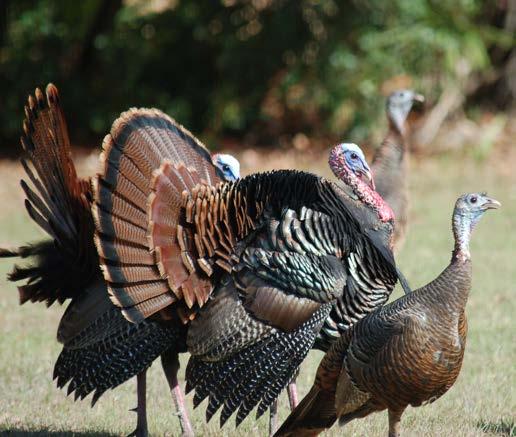
the day, “a turkey is a turkey is a turkey” when it comes to behavior.
“I consider a pressured eastern gobbler one of the hardest birds to hunt in North America, but I would put the Osceola as the hardest turkey to hunt when unpressured. Behavior-wise, a mature Osceola is just a bit cagier in my opinion, especially when compared to the Merriam’s or Rio Grande subspecies.”
In Harrison’s experience, a big Osceola will gobble plenty on the roost, but he will quiet down once on the ground.
“I have hunted other subspecies that will gobble all day at any loud sound they hear, but more often than not, a big Osceola will sneak into a setup quietly. We mostly hunted on the edges of big cypress swamps bordered by cow pastures, so cover was often an issue when setting up on roosted birds. The mature toms will perch on a cypress limb that gives them a commanding view of the surrounding area, so a hunter has to get in super early and be extremely stealthy during setup.”
Harrison says when he was a younger hunter, he liked to put birds to bed on the edge of a cypress swamp. One of his favorite tactics was to find a small bush, place a couple of decoys around him, lay down and remain motionless until the birds pitched down around him.
“As I got older, my favorite tactic changed to figuring out where the birds
preferred to be mid-morning, after the hens had broken away from the toms and gone to nest, then setting up in those areas and do a little soft calling. If you can remain patient and still, a curious Osceola will often sneak in quietly to check out a hen decoy,” Harrison said.
He said although Osceolas behave similarly to other turkey species, the challenge of hunting them is a result of Florida’s sub-tropical terrain and conditions, including high humidity and dense foliage, which can not only be difficult to navigate, but can cause the gobbler to sound like he’s further away than he actually is.
A tom’s gobble travels much further in open hardwoods than in Florida’s palmetto swamps, and if you don’t take that into account, you may spook a bird that is closer to you than you may think it is.
Like all turkey species, Osceolas have keen eyesight and hearing, so ensuring you’re concealed either in a blind or in camo is important. Patience is also key, as toms will sometimes hold up on islands in the middle of swamps when it’s warm.
Osceolas offer hunters the fun, unique and challenging experience of hunting a wily turkey in Florida’s sub-tropical climate. Just remember that light calling is the key and scouting and learning the birds’ routines are a must for success. Also, don’t forget your bug spray and snake boots, and if you’re hunting near swamps, keep an eye out for gators. It is Florida, after all.
Osceola Turkey Hunting
46 March 2024 // GreatDaysOutdoors.com // 877.314.1237
Raw Land Loan Rates 2024
BY JOE BAYA

Investing in raw land can be an exciting opportunity for those looking to build their dream home, start a farming venture, or develop a hunting property, amongst other things. Purchasing raw land often requires a substantial financial commitment, and many individuals may need to secure a raw land loan to make their vision a reality. In this article, we will explore the world of raw land loans and discuss the current raw land loan rates in 2024. We will also provide tips for choosing the best loan option, and outline the process of obtaining a loan for raw land.
RAW LAND LOAN RATES
Since its founding over 100 years ago, First South Farm Credit (FSFC) has been financing all types of rural land. FSFC now has grown to over 40 branches with 9,000 members in Alabama, Louisiana, and Mississippi. First South Farm Credit basically lends money to people for pretty much anything that they want to do “in the dirt”. That could be row cropping, raising livestock, growing timber, farming for wildlife, or raw land. We catch up with them frequently on the Huntin’ Land Podcast to learn about all aspects of land financing as well as keep an eye on the current raw land loan rates.
As of the time of this writing, raw land rates are in the high 7% to 8% range depending on the financial position of the borrower and the terms of the loan. When you borrow money from FSFC, you become a member and that means you own part of the business. That ownership entitles you to share in the profits through their Patronage Refund Payment Program. In other words, First South Farm Credit gives its members money back. While it can’t guarantee payments back to you or the exact rate of return, as long as it remains profitable and well-capitalized, FSFC is committed to sharing its profits and has made patronage payments for the past 23 consecutive years.
RAW LAND LOAN OPTIONS
Raw land loans, by definition, are land loans for tracts that are unimproved, meaning, in general, there are no sewers, roads, electricity, etc. While many lenders will not have anything to do with raw land loans, lenders who are affiliates of the National Farm Credit System, such as First South Farm Credit, are well-versed in providing financing for these types of properties.
The National Farm Credit System is a network of borrower-owned lending institutions, and First South Farm Credit specializes in providing credit for farming operations that include crops, livestock, land, and timber. FSFC is also chartered to help with financing lifestyle farms, rural home sites, or rural land tracts for enjoyment or investment purposes.
“First South can make loans for anything a landowner wants to do to develop his property or its habitat or the amount of wildlife there. If you’re playing in the dirt, we
want to be in there with you, as long as you’re improving the value of the dirt, which is the collateral of the loan,” says Taylor Hart, the branch manager of First South Farm Credit in Opelika, AL.
“First South Farm Credit can make construction loans and, if needed, can turn those loans into long-term loans. Some landowners are building secondary homes, hunting cabins or lodges, and others want to put their primary residences on 20 to 30 acres. Perhaps that person wants to sit on his or her back porch and look at a pond and we make loans for pond construction as well,” Hart said.
HOW TO GET A LOAN FOR LAND
While you may have heard that getting a land loan is more arduous than other loan applications, the fact is that when working with the right institution it is not much different than how you may have gotten other loans such as those for your primary residence. Down payments are typically in the 20% range and there are even options for buyers who want to buy land with no money down. Be prepared to share the following with your lender:
1. Current Financial Statement Information
2. Balance Sheets for Entities you own or are a major shareholder of
3. Complete tax returns or another form of Income verification such as recent paystubs
4. Balances of Investment and Liquid Asset Accounts
THE IMPORTANCE OF LAND PRE-APPROVAL
In my time as a land real estate agent, I have seen the heartbreak from willing buyers when they miss out on their dream property. The most common reason I see buyers miss opportunities is because they do not have their financing in order. When a landowner is ready to sell their property, they want to go under contract with a buyer who is almost 100% guaranteed to close. When you come to the offering table and are in competition with another buyer who has fewer contingencies (or none at all) the landowner is more likely to go with the sure bet, even if that buyer’s purchase offer is slightly lower than the other with all of the contingencies.
Today’s land market is more competitive than ever. Drone Tours, interactive mapping, and stunning online photography mean that shoppers are more prepared than ever to make an offer as soon as they confirm a property is what it looked like online. Don’t let a simple bit of paperwork be the reason you miss out on your dream. If you are considering buying raw land, do yourself a favor and reach out to your local National Farm Credit Affiliate like First South Farm Credit, and get approved before you are ready to make an offer. In addition to financing land, FSFC can finance your land improvements, new and used tractors, and other equipment that is used to maintain and enhance your rural property.
877.314.1237 // GreatDaysOutdoors.com // March 2024 47
WHAT’S THE BEST DEER RIFLE FOR ELK HUNTING?
BY JOE BAYA
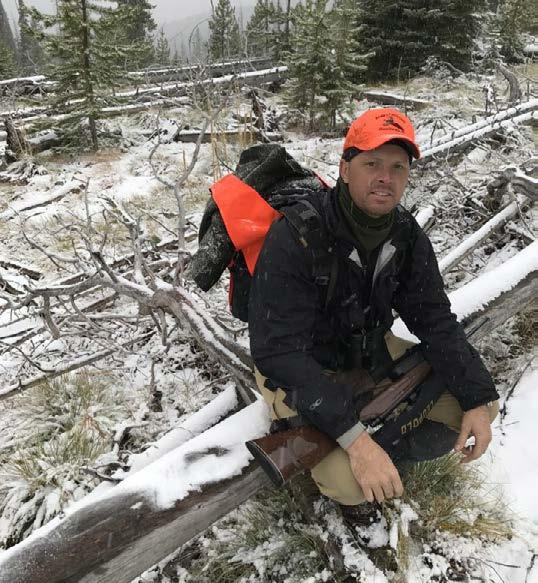
“You can certainly take your deer rifle elk hunting, as Ryan Baya did on his first ever Elk Hunt . But do you want to make compromises?”
48 March 2024 // GreatDaysOutdoors.com // 877.314.1237
For hunters who primarily hunt whitetail deer, the dream of heading out west and chasing elk rages deep inside many. Due to the elk’s size, the challenging terrain in which they are hunted, and the possibility of taking longer shots, hunters typically look for a different rifle to accompany them. But for most eastern dwelling deer hunters, elk is at most a once-in-a-season adventure, so the prospect of buying a rifle that has no utility for their back home whitetails may not sit right. So should you settle for buying a rifle that collects dust until you head out West? Or should you just take your deer rifle elk hunting? Or is there a rifle that can serve both styles of hunting without compromising on either front? Today, we aim to find out.
WHAT’S THE BEST RIFLE TO HUNT DEER?
When I turned 16, I was gifted a Winchester Model 70 stainless synthetic chambered in 270 Winchester and it has accompanied me on hundreds of days hunting deer and has performed without compromise. Scoped, loaded, and slung, it weighs in at a little under 9 pounds. It has taken nearly 100 whitetail deer and one bull elk. On my last elk hunt, I carried it, but by the middle of each day, it was beginning to become a drag on my shoulder. Additionally, I went into each hunt limiting myself to shots under 300 yards, poking out to 400 only if all of the conditions were perfect.
The reality of deer hunting is that just about any style of rifle will do. If you want to lug a 15-pound bench rest gun into a shooting house or you want to carry a 6-ish pound lever action into the brush, they will all take whitetails. So with that understanding, it should be noted that while you can hunt deer with all different types of rifles without giving up much, that same rifle may become a burden chasing elk. I wanted to know what goes into the design process of a great elk rifle, so I sat down with Jeff Bradley of Christensen Arms to learn what kind of benchmarks they shoot for when designing a rifle that will function flawlessly when pursuing Rocky Mountain Elk. Jeff is a native of Utah and has extensive experience guiding hunters for Western big game. As a brand ambassador for Christensen Arms, he understands the intricate process that goes into creating a world-class big-game rifle.
HOW MUCH DOES THE BEST ELK RIFLE WEIGH?
I told myself on that last hunt that on my next, I wanted to bring a lighter rifle. So I wanted to know, just how light should I shoot for? “That’s going to be different for a lot of different people.” Jeff said, “Let’s say your 14-year-old daughter is going on her first elk hunt. You do not want her carrying a 17-and-a-half-pound rifle up and down the mountain.
First of all, physically, she couldn’t even do it and she wouldn’t enjoy it at all. And so it’s just like a golf bag. There’s more than just a driver and a putter. There are a few irons and wedges. And I think the same thing is true for an elk rifle. If you have a youthful hunter or small frame hunter, somebody that doesn’t weigh a whole lot, you might want to look for a rifle that is easier to carry around.”
So like most things, the answer is, it depends. If you’re hunting elk on a ranch out of a truck for the most part, you can probably get away with a heavier rifle than if you’re heading deep into the backcountry and hunting steep elevations.
For me, I want to solve for the hardest hunt, and then I know that rifle will be able to tackle anything else I throw at it. So when I’m examining bare rifle weight, I am looking for something under 6 pounds. Why? Because by the time you add optics, ammo, and accessories like a muzzle brake or suppressor and a sling, you’re going to be getting into 7-7.5 pound rifle territory. In my experience, when hunting on foot for long distances, say 8-12 miles daily for days on end, A gun in that range is a pleasure to carry.
THE LIGHTWEIGHT HUNTING RIFLE DILEMMA –MORE RECOIL
If you’ve ever shot a lightweight hunting rifle, you immediately find out that while that gun is a pleasure to hold, if it isn’t modified for recoil reduction it can be a terrible shooting experience. If you are going to start taking shots at game animals beyond your gun’s maximum point-blank range, you owe it to the animal to spend a lot of time at the range understanding your rifle’s ballistics and especially shooting into a crosswind. If the recoil of your rifle is punishing, you are not going to be able to spend much time on the range without developing bad habits. So, how can hunters shave weight on a rifle without sacrificing performance?
“If your rifle is so heavy, that you can’t go beyond one ridge, you probably missed out on an opportunity that you could have had if you had a little bit lighter rifle. That’s where composite technology comes into play,” Jeff said. “The stock on the Christensen Ridgeline FFT weighs one pound less than the stock on a regular Ridgeline rifle. And so by using that next innovation in technology, we take one pound right off the stock of that rifle. The trade-off is when you reduce the mass of the firearm that typically can translate into more felt recoil. However, with a well-designed muzzle brake or suppressor, a lot of that goes away. And so the disadvantage of a light rifle in the form of increased recoil can be mitigated to a certain extent.”
So, how much recoil can you expect to reduce with a quality muzzle brake or suppressor? “That’s hard to quantify and measure as a manufacturer, it takes a very sophisticated machine to compute the felt recoil as it would feel to the shooter,” Jeff said. “I would guess we’re in the neighborhood of 30 or 40%. We shoot a radial brake with holes all the way around it. Most of those brakes are put on our hunting rifles, where we anticipate a kneeling or a standing shot. Now if it’s going to be a tactical long-range rifle and even some of the hunting rifles we’ll put a side port brake on where all the pressure is directed immediately to the left and the right and we don’t have anything going down to kick up pine cones and dust as you’re shooting close to the ground. And that break is probably in the neighborhood of 30 or 40% as well.”
So the dilemma of lightweight hunting recoil is solved by a muzzle brake or suppressor and in addition to that, a quality recoil pad. Recoil pad manufacturers claim felt recoil reduction of up to 70%, so playing it conservatively, a quality muzzle brake or suppressor and a recoil pad can reduce felt recoil easily by 50%. In layman’s terms, that turns a 300 Winchester Magnum into a 270 Winchester from a recoil perspective. This is more than comfortable enough to allow you as much range time as you need to become proficient at elk hunting ranges.
THE BEST RIFLE FOR LONG-RANGE ACCURACY
On that last hunt, I recognized that by limiting my shots to 300 yards, I was giving up a lot. The western landscape will easily offer shots beyond this distance, but with that opportunity comes a great responsibility as the shooter. Ultimately it’s the nut behind the wheel that makes the biggest difference, but you don’t want to start out handicapped. I asked Jeff what he thinks hunters should demand in terms of the hunting rifle’s accuracy to make sure their equipment is not a weak link.
“For me, the minimum acceptable would be one minute of angle. If you’re talking about the vitals just behind the shoulder, on an adult bull broadside, the kill zone would probably be about eight inches around. Now eight inches is one minute at 800 yards. So if you’ve got a one-minute gun, and you’re holding on that bull at 800 yards, and you do everything right and you get a good release, chances are you’re going to have an effective shot on that target.”
So if I’m looking at a deer rifle to take elk hunting, I could start modifying an existing rifle. Take that Model 70 I mentioned earlier for example. I could drop it in a carbon fiber stock, then replace that
HUNTING
877.314.1237 // GreatDaysOutdoors.com // March 2024 49
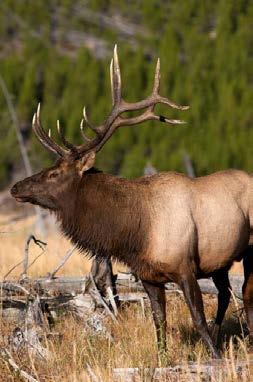
steel barrel with a threaded carbon fiber option in a more suitable Elk hunting Caliber. Then I could pick up a muzzle brake (or suppressor) and a recoil pad to tame the increased recoil. But would I be confident that this would be a minute of angle gun?
Jeff had this to say about taking that route. “One of the things we work on every single day is consistently being accurate. In other words, if you make 10 barrels, you want all 10 of those barrels to be the same quality, eight good ones don’t help you that much. And so everything from the barrel steel to the technology we use in the composites of a good rigid stock goes into that. When Christensen Arms started, what we were doing 25 years ago was buying a Remington 700 rifle, taking the Remington barrel off of it, contouring the barrel, wrapping it in carbon, reinstalling the Remington barrel on the Remington receiver, putting it in the Remington stock and selling that gun.”
“It was a good way to start the technology. It was a good way for us to start to understand the interface between a carbon wrap barrel and a steel barrel. So we learned a lot. But the disadvantage to that was you were stuck with the tolerance stacking and the misalignment and everything that occurred in a Remington gun. Even though you had a good carbon barrel on there, you were limited with what you had. Now we have everything from the bolt to the receiver to the stock to the barrel being made right here at Christensen Arms, and we can control all of that stuff. So bringing that all under one roof helped us tremendously in being a lot more consistent.”
WHAT’S THE BEST CALIBER FOR ELK HUNTING THAT ISN’T OVERKILL ON DEER?
If you’ll limit your shot distance. There is no reason why your favorite
non-magnum, tried and true deer caliber won’t kill an elk. Here are just a few that with properly selected hunting ammunition will carry the minimum recommended 1,500 ft-lbs of energy at 400 yards:
• .270 WIN
• 7mm-08
• 280 Remington
• .308 WIN
• .30-06
But this article isn’t about a deer hunting rifle that is “good enough” for elk. This article is really about an elk rifle chambered in a caliber that won’t cut your deer in half. And why wouldn’t you want as big of a bullet as you can accurately shoot? I’m not worried about the 200-yard broadside shot. I’m concerned with the 460-yard quartering-away shot on the bull of a lifetime when my adrenaline is through the roof.
Where does that leave us on caliber choice? Jeff had some advice on what he is seeing with today’s available options. “I’m gonna give you the answer based on my current experience, I’m just finishing a nice rifle built on our stuff in 7 PRC. And I’ve got two in 6 PRC, one and 300 PRC and then I’ve got everything from 338 Remington Ultra mag, all the way down to the 17 calibers. And I base it mostly on how much downrange energy I’m going to get out of that gun. How much does it weigh? Can I be consistent in hitting a target with the way that rifle was set up? For me, that would be anywhere between 6.5 PRC to 300 Win Mag. I don’t think you have to have a 338 Lapua to kill an elk at 800 yards. In fact, I know you don’t.”
“So in other words, if you’re shooting a 7PRC, especially if you’re a hand loader, you can load down for a whitetail or up for a big bull. In 300 Win Mag, for example, you can go everywhere from 110 to 220 grains in bullet weights. And so there are a lot of different great calibers that would do it. For me, the flavor of the month lately has been that 7 PRC. I was amazed at how quickly and easily that round could be dialed up to 1200 yards at the range and still bring tremendous energy, shoot flat, and recoil great. I’m not sure what barrel life’s gonna be yet. It’s a little early in the test for that. But I would say anything in that 7 PRC range would be good. And if it were Jeff Bradley personally hunting next fall, I would shoot a 7 PRC.”
So if you’re going to limit yourself to 400, there are many great options, and if you want to go even further without fear of being overkill on whitetails, consider any of these calibers and load down when you’re hunting back home if needed.
• .280 Ackley Improved
• 6.8 Western
• 270 WSM
• 7mm PRC
• 28 Nosler
• 7MM Rem Mag
• 300 WSM
• 300 Win Mag
YOUR DEER RIFLE CAN GO ELK HUNTING, BUT IT PROBABLY ISN’T THE BEST
If you want to take your deer rifle elk hunting, go for it! Just understand that you are most likely going to be compromising something. Whether it’s shot distance, carrying comfort, or accuracy, most deer rifles are not built for the potential demands of today’s western elk hunting. Look for a manufacturer who builds their rifles to the weight, accuracy, and recoil standards that you will need to make your elk hunt the best it can be while still creating a gun that you can use back home when pursuing whitetails. If you’re like me, half the fun of the hunt is getting ready for it, so why not enjoy the process of getting set up with a rifle that’s built for the task?
What’s The Best Deer Rifle For Elk Hunting?
50 March 2024 // GreatDaysOutdoors.com // 877.314.1237
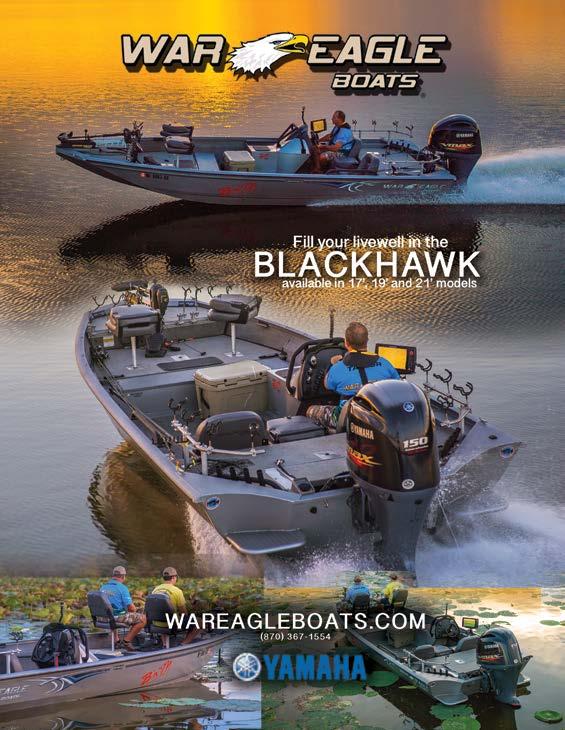
877.314.1237 // GreatDaysOutdoors.com // March 2024 51
SIGHT FISHING BULL REDFISH IN THE LATE WINTER AND EARLY SPRING
BY DAVID THORNTON

52 March 2024 // GreatDaysOutdoors.com // 877.314.1237
“Bull” redfish sightcast with king tackle from the beach pier .
Pure pandemonium is perhaps the best way to describe the crazy action on a beach pier during a redfish “blitz”
Perhaps the most exciting time on a beach pier is when a large school of “bull” redfish presses baitfish to the surface nearby. Pure pandemonium is perhaps the best way to describe the crazy action on a beach pier during a redfish “blitz”. Whenever the situation presents itself and hundreds of huge redfish crash baitfish on the surface, the anxiety level of anglers skyrockets! Nearly everyone with a bait or lure close to the action hooks up. Then it becomes a matter of following your fish as it tries to keep up with its schoolmates. Break-offs are common the first few minutes as the line rubs against other fish in the school, or crosses the line of other hooked up anglers. Such action tests the skill and patience of nearly everyone on the pier, but it brings out the best in some who set their rods aside to pick up a landing net or camera. Almost half of the “bull” reds landed from Alabama piers are retained because the state allows one oversized redfish (over 26 inches) per angler per day.
These “blitzes’’ can never be predicted when or where they will come from. Even if you can see a school approaching from a distance, you never know when they might turn off feeding or turn in a different direction. Often the first indication of an impending redfish blitz is when baitfish suddenly dart in every direction under the pier in panic. Then reds (or jack crevalle) may suddenly appear under the baitfish and begin crashing them on the surface. First one angler hooks up, then several more, and perhaps a dozen or more in total may be engaged, frantically ducking and weaving along the railing trying to keep up with their hard running fish.
While such occurrences are quite rare along the eastern Florida Panhandle, they are relatively common from Pensacola Pass westward. There numerous shoals of baitfish such as menhaden, Scaled herring, and even mullet provide the fodder that feeds these redfish firing off. Almost exclusively these are copper-back “bulls”, mature redfish over 36 inches long. In fact it is almost unheard of to catch a slot-sized red from
Action is fast and furious during a blitz of “bull” redfish on the beach pier .
these surface feeding schools. Rather it is much more common around the piers and beaches for schools of slot redfish to gather into feeding groups under or near the pier from the beach to the longshore sandbar. These schools rarely number more than a couple of dozen fish. But even pale colored single fish may be spotted by savvy anglers wearing polarized sunglasses looking for their telltale dark shadows, contrasting on the sandy white bottom in the clear, emerald green water the coast is named for.
These semi-resident fish may respond to a variety of bait or lures depending on conditions. Live bait is probably the most dependable way to entice a wary redfish to bite. Live minnows like cigar minnows, small herring, baby jacks, or mullet are ideal for these redfish. And they relish live shrimp, sand fleas, small crabs, and ghost shrimp too. Redfish may eat dead bait too, like fresh cut fish, shrimp, crabs, or even squid. And they often respond well to spoons, plugs, and especially jigs which can be bounced off the bottom. Jigs can also be tipped with a sand flea, piece of shrimp, cut fish, or even a strip of Fishbites. They also love Gulp shrimp on a weighted jighead. Tempting a redfish to bite from a pier, which likely sees you as well or better than you see it, can be either quite satisfying or extremely frustrating. Consequently a majority of slot redfish are retained by these hard working pier anglers. See state regulations, as they vary greatly.
Sight fishing for redfish from the beach, as from the pier, is often a game of patience. The fish are most often seen breaking offshore, out of casting distance, under large diving birds like pelicans. So, whenever you get a chance to reach them your tackle should be up to the task of long casts and a hard fight. Jack crevalle are just as likely to be in the fray during the late summer and early fall months. Well prepared anglers often use long surf rods with large spinning reels and heavy braided line 30# to 65# to cast as far as possible and put as much pressure as they dare on their stubborn quarry. Most “bull” reds are released by beach fishers either because of regulation restrictions or simply because of the logistically long haul with a heavy carcass.
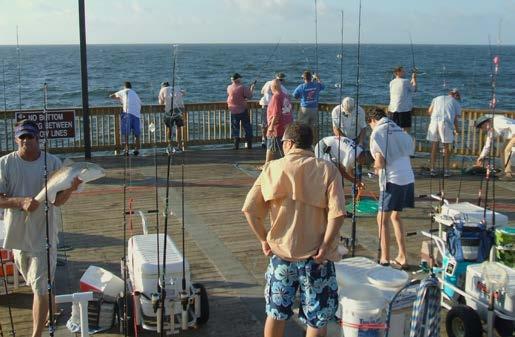
FISHING
877.314.1237 // GreatDaysOutdoors.com // March 2024 53
Redfish are often sightcast to near the pier piling
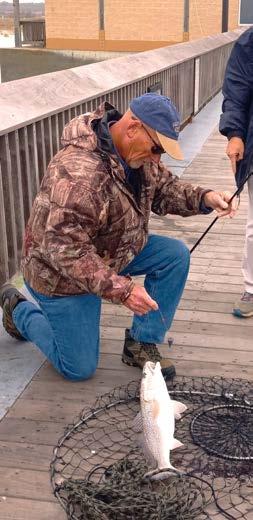
Sight fishing for slot-size redfish from shore often morphs into wade fishing. Schools of reds can be seen from the beach much better with polarized sunglasses and a wide brimmed hat. This combo cuts down on glare, a crucial factor when lighting angles or intensity leave a lot to be desired. These redfish in shallow water are spooky too, so the cast made with medium heavy tackle should be well placed in anticipation of their movement, and not right on top of the school. Wade fishing gives you an opportunity to follow your quarry school, but with your eyes being lower to the water, true sight fishing is more difficult.
Most often surf fishers are using set rods for redfish, so accurately casting to a sandbar drop off, rocks, or other structure is a form of sight fishing that greatly increases their chance of success. Whenever you are locating these likely structures by sight, be sure to use the appropriate tackle, bait, and presentation. And be willing to vary those factors until you can “zero in’’ on the redfish.

 Recipe by Hank Shaw, Photo by Holly A. Heyser • https://honest-food.net
Recipe by Hank Shaw, Photo by Holly A. Heyser • https://honest-food.net
Pan Seared Red Snapper with Cherry Tomatoes
Prep: 10 mins • Cook: 1 Hour • Total: 1 hour 10 mins
Ingredients
• 1 1/2 pounds cherry tomatoes, sliced in half
• Olive oil to coat tomatoes
• Salt
• 4 red snapper fillets, skin on or off
• 1/4 cup clarified butter or vegetable oil
• 2 to 3 ears of sweet corn, kernels cut off (about 2 cups)
• 3 tablespoons minced parsley, cilantro or mint
• Black pepper to taste
Instructions
1. Coat the halved cherry tomatoes in some oil and salt them well. Place them, cut side up, on a baking sheet and put in the oven at 275°F; no need to preheat. If you have a convection oven, turn the fan on. Or, you can put the tomatoes on a rack in your dehydrator and set it to 135°F. It will take longer for the tomatoes to get semi-dry, but it won’t heat up your kitchen. Cook the tomatoes until they are about half dried, about 45 minutes to 1 hour in the oven, a bit longer in a dehydrator. Keep an eye on the tomatoes every 20 minutes or so, as different tomatoes and different ovens will give you different results.
2. About 20 minutes before the tomatoes are ready, take the fish out of the fridge and salt it well.
3. When the tomatoes are ready, heat the clarified butter in a large sauté pan over high heat. As the butter is heating, pat the fish dry with paper towels. If you want a crispy skin, use a butter knife to scrape down the skin; this removes a but more moisture and results in a crispier skin.
4. When the butter is hot, lay the fish skin side down in the pan, even if there is no skin; this side is flatter. Jiggle the pan the second the fish hits the heat; this helps keep it from sticking. Turn the heat down to medium-high and sear the fish well. As it cooks, use a spoon to baste the other side of the fish until it’s just barely cooked: About 30 seconds of basting will do the trick. When the bottom of the fish is nicely browned, about 6 to 8 minutes, it should be ready. It should also lift up from the pan easily. Set the fish on a cutting board skin side up.
5. Add the corn to the pan and toss to combine. Sprinkle it with salt. Add the tomatoes and the parsley and toss to combine. Cook for about 30 seconds and turn off the heat. Grind some black pepper over everything. To serve, give everyone some of the corn-tomato mixture and set a piece of fish on top. Serve with bread, potatoes or rice.
Sight Fishing Bull Redfish in the Late Winter and Early Spring
54 March 2024 // GreatDaysOutdoors.com // 877.314.1237
Land Equity Loans Explained
BY STEPHANIE MALLORY
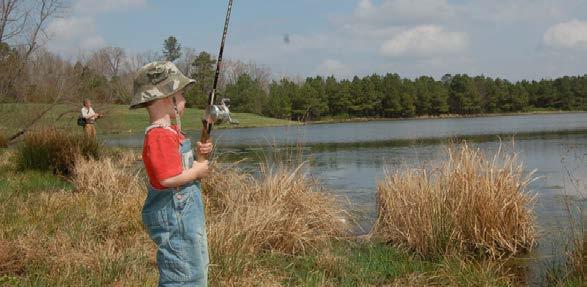
Did you know the land you own can be a powerful form of collateral if you need to acquire a loan? Land equity loans work similarly to home equity loans, but they use your land as collateral. To put it simply, a land equity loan is when you borrow against the equity in land that you own. And, as you most likely know, land equity is the value of your land minus the balance of your land loan.
First South Farm Credit is one of the best options for land loans due to the longer payment schedules and flexible terms that they can offer as a chartered Farm Credit Service lender. However, there are limitations on the purpose of the loans made by FCS lenders. The proceeds from a land equity loan made by a FCS lender such as First South are generally used to acquire more rural land, land improvements, or used to operate or expand an existing farming operation. In contrast, Home Equity loans or land equity loans offered by non-farm credit system lenders may have more flexibility in what the borrower can use the funds for.
“Land equity loans are best for those existing land owners that either want to acquire additional rural land or to cover land improvement expenses. Structuring a land equity loan for these purposes enables the borrower to accomplish what they want to in regards to their land financing and it frees up their cash for other expenses and/or financing needs that are outside of their rural land holdings or farming operation,” John Sport, vice president of First South Farm Credit, said.
One of the benefits of a land equity loan is that it allows you to take out a loan without risking assets such as your home, car, savings or stocks. The fact that you can use an existing asset as collateral for a new loan is often advantageous. And in some situations, the collateral (land) can be used in lieu of a down payment –allowing the borrower to hold onto their cash.
The precise amount of land equity required for a loan varies by lender, and although land is commonly considered a qualified form of collateral, you may find that some lenders are more open than others. Obviously, using land as collateral ties up the asset for the length of the loan and you should know that the lender can take possession of your collateral if you do not meet the terms of the loan agreement.
FIND YOUR LAND EQUITY LOAN LENDER
First, you must ensure your paperwork is in order and the property deed is in your name. If you are unsure, you can find out through the County Recorder’s office in the county where the property is located. Because land deeds are public record, anyone can obtain this information.
Once you’ve secured the correct paperwork, your next step is to find the right land equity loan lender, such as First South Farm Credit. As part of the National Farm Credit System, First South is charted to make agricultural and rural land loans in Alabama, Mississippi, and Louisiana. And as a successful cooperative, First South shares its profits with its members/borrowers in the form of a patronage refund,
which reduces the cost of borrowing.
“When talking with an applicant about a land equity loan, it’s important to let them know that there may be some limitations due to how the they intend to use the loan funds. As we previously mentioned, if they intend to use the equity in their land to acquire more rural land or for a land improvement loan, then it is very likely that we can help them with this type request. However, if the purpose of the loan is for debt consolidation outside of an existing farming operation or for debt not tied to the purchase or improvement of the rural land, then we may not be able to accommodate the applicant’s loan request. So, it’s best for an applicant to discuss all the details with one of our loan officers to best determine if we can help them or not.” Sport said.
DETERMINING YOUR LAND VALUE
Typically, using land as collateral for a loan can be accomplished without much hassle. Once the value of your land has been determined by a qualified expert, you can start the process of transforming your property holdings into qualified collateral.
To use land as collateral, the worth of the land must be determined and an appraisal will likely be required before a loan can be made. There are a wide variety of factors that can influence the value of your land holdings. Your land’s condition and its current level of development could impact the lending terms that you are offered.
LAND EQUITY LOAN REQUIREMENTS AND TERMS
Terms of the loan are typically based on four things, 1) credit quality of the applicant, 2) the purpose of the loan, and 3) the income stream of the applicant, and 4) the asset being used as collateral. Using land as collateral often gives the borrower the option of longer payment terms and potentially favorable interest rates, depending on the loan purpose and income stream.
“First South may be able lend up to 85% of the value of the land, but it should be noted that the purpose of the loan and borrower strength could potentially lower the loan to value ratio,” Sport said. “Documentation needed from the applicant will vary depending on each situation. However, existing land deeds, mortgages, and the applicant’s balance sheet and income information/verification are normally part of the transaction. If the loan proceeds will be used for land improvements, we would typically need cost estimates, quotes, and/or invoices,” he added.
Always seek and pursue the best possible terms, which include the best interest rates and preferred length of repayment, that match your needs. And remember, throughout the process, you have the freedom to exit negotiations and seek out alternative options. So, make sure you are comfortable with the loan terms before proceeding.
877.314.1237 // GreatDaysOutdoors.com // March 2024 55

56 March 2024 // GreatDaysOutdoors.com // 877.314.1237
Boat Radar Troubleshooting Before You Buy
BY TANNER DEAS
Have you ever found yourself feeling unsafe while navigating the boat in a dense fog that only allows for 15-20ft. of visibility? How about running early in the wee morning hours before first light? Or running back from offshore once the sun goes down? Do you find yourself running often in the dark?
If a scenario like this is one you’ve experienced or go through regularly in your area then you know just how harrowing and anxious it can feel to be boating in zero light or low visibility conditions. Marine radars offer the perfect solution to boating in these situations and even have other perks as well.
There are several questions that may come to mind when considering purchasing a radar, things like: What uses does a radar have? What does radar detect? What are the components of a radar system? Are there small vessel options for radar? How much does a radar cost? And last but not least, do I need radar? Let’s take the time to go over some of these topics and get some answers from William Montgomery with Blue Water Ship Stores in Foley, AL.
WHAT IS BOAT RADAR?
While radar units have become increasingly common sights on boats over the years, it’s always good to start conversations with a simple definition. “To put it simply,” says William, “radar transmits and receives reflected signals to help aid in navigation and situational awareness. It allows you to essentially detect objects around you, whether it be land, navigational aids, other vessels, birds, or storm systems. Its main use is to promote safety while you’re underway or stationary.”
USES FOR BOAT RADAR
We asked William which of his customers typically utilized boat radar, and what their specific usage case was.
We put them on all sorts of boats,” he responded. “We’ve installed them on big boats, little 20ft center-consoles, even sailboats. It’s not so much about the type of boat as it is what type of situation folks think they might use their boat in, although most of our business centers around offshore and coastal marine applications. If they have an inkling that, ‘Hey, I want to be out at night a lot,’ then a lot of guys really want that radar to help keep them safe. They’re looking for help with collision avoidance at nighttime.”
“Also,” he continues, “the bigger boats with higher powered radars, they’re using them to find flocks of birds that are diving on baitfish so that they can then target the bigger fish underneath those flocks. That’s a good use
for them as well. ”
COMPONENTS OF A BOAT RADAR SYSTEM
Boat radar systems are made up of four different key parts that work together to transmit the most accurate layout of your surroundings. The antennae, the transmitter, the receiver and the display are the four components of a radar system.
The antennae is the most visible piece of your system and is typically mounted on the t-top, arch or mast of the vessel. Rotating around on a horizontal axis creating a full 360 degree view, the antennae detects and receives radio waves that determine an accurate picture of the surrounding structure. The size and type of your radar’s antennae will vary depending on the size of the vessel, the radar’s range as well as its intended use.
The second piece of your boat radar system is the transmitter. The transmitter generates high frequency radio waves used by the radar, the antennae puts out these high frequency radio waves and the transmitter is responsible for converting the radar’s input power into radio frequency energy.
Thirdly we have the receiver. The receiver reads the radio waves that are reflected back to the antennae after bouncing back off of structures. These readings are then transmitted and amplified so that the radar display can read them in an accurate way.
Fourth and lastly is the display. The display is the screen where captains and boaters view the data that has been transmitted back via radio waves that gives an accurate picture of the surrounding environment. Some display screens have a circular screen with a rotating sweep that uses paint-like splotches as signals for structure and newer display systems show more sophisticated, high-resolution images of the depicted area.
BOAT RADAR MOUNT CONSIDERATIONS
Much like with sonar units, there are right and wrong ways to mount boat radar. According to William:
“The big thing is just to make sure that whether you’ve got a hardtop or ragtop, that whatever you’re mounting to is structurally sound and able to hold up to the weight of this radar. You know, you hit the water, and this thing is going to be banging around in four-foot seas, so you want to mount it somewhere where it can hold up to that load and those G-forces.”
“Usually, most new boats that leave the factory have a really good reinforced area to mount equipment up on the roof. So you’ll want to make
FISHING
877.314.1237 // GreatDaysOutdoors.com // March 2024 57
sure that you bolt to that with properly sized fasteners and big backing plates. Not just a nut, but a good backing plate so that your load gets spread out and you’re not cracking the fiberglass.”
“The other big consideration is that other items up top can interfere with your radar, or your radar can interfere with them. All manufacturers will have specifications and recommendations about distances to maintain, and it’s important to be aware of that info. But essentially, you don’t want a high powered radar a couple of inches away from the antenna of another device, throwing 4,000 or 10,0 watts right into that device.”
“Lot’s of times, to avoid this, we’ll mount them on a pedestal to get them six, eight, maybe ten inches above any GPS antennas, satellite weather antennas, or two-way communication antennas. That way you get a good, clean sweep; without any interference.”
“The other big consideration is to maintain cable integrity. You know, I can’t tell you how many times we will get called to fix a radar and there’s nothing wrong with it, but the cable was cut and spliced improperly. If at all possible, do not cut the factory cable that interfaces from the radar. I know that sometimes when you’re installing things, they seem kinda long, but that just is what it is. There are technically ways to cut and splice them properly, but if at all possible, just leave it alone.
“And then with power, you’ve got to have a clean, steady source of power. Low voltage just wreaks havoc with all these marine electronics, and especially with radars when they’re trying to do all the amazing things they do. They’ve got to have proper volts and amps to work properly.”
SMALL BOAT RADAR OPTIONS
Boat radar systems play an important role in keeping large vessels safe, and small boats too. As technology advances year after year, several different radar options tailored towards smaller vessels specifically have become available. Let’s explore
the money spent on turkey permits, which is part of the licensing requirement to hunt turkeys in Florida, goes into that fund.
“Many hunters and NWTF members are heavily involved in raising funds for the wild turkey and its habitat by participating in NWTF hunting heritage banquets, whereby a portion of those funds raised goes into the cost-share program,” Nicholson said. “Hunters’ purchases of hunting equipment also helps support wildlife conservation through the Wildlife and Sport Fish Restoration Program, which brings federal grant funding to state wildlife management agencies such as the FWC.”
different types of small boat radar options and technologies as well as things to consider when putting a radar on a smaller vessel. There are two main types of radar systems, dome radars and open array radars. These systems use different types of radar technology for different, specific purposes. Some of these radar technologies are broadband radar, digital radar, pulse compression radar and solid state radar to name a few. Dome radars, like the one Capt. Collier has, are easier to install, more compact and more compatible with smaller vessels. Open array radars offer better performance in range and target separation but are much more suited for larger vessels considering the size of open array systems. Broadband radar is known for excellent short range target resolution, these radars are usually compact and energy efficient making them suitable for small boats. Digital radars offer much improved target detection and detailed feedback and can often be found in compact designs making them another suitable option for a smaller vessel.
Through this combined effort from the NWTF, FWC, FFS and Florida turkey hunters, the wild turkey population is healthy and flourishing in Florida. And, if you’re a turkey hunter, then you must be getting excited because spring turkey season and the youth turkey hunt weekends are just around the corner.
Pulse compression radars use sophisticated signal processing to increase target resolution and reduce the pickup of clutter in the radio waves. Pulse compression radars can be found in smaller sizes making them readily available for use on smaller vessels. Solid state radar is more energy efficient and extremely reliable, these radars have no moving parts making them compact and extremely suitable for small vessels.
Contact Information
One of the things to consider when adding a radar to your boat is power output and range. Choosing the correct power output is crucial for boats of smaller size. Higher power output provides extended range but moderate power is usually effective enough for the size of smaller vessels. Research the radar’s range capability to guarantee that it meets navigational requirements without an excess of power, aiming to find a balance between navigational performance and practicality for a smaller sized vessel. A second thing to consider for smaller boat’s radar systems is dual-range functionality capability. Some boat radars provide dual-range functionality, this gives the vessel operator the ability to watch detections for different ranges simultaneously. This is particularly useful for small vessels because it allows them to monitor close range structures
Wild Turkey Cost-Share Program
Florida State Chapter of the National Wild Turkey Federation (NWTF)
Florida Fish and Wildlife Conservation Commission (FWC)
Florida Forest Service (FFS)
Green Swamp Wildlife Management Area (WMA)
Gulf Coastal Plain Ecosystem Partnership
Wildlife and Sport Fish Restoration Program

Boat Radar Troubleshooting Before You Buy
Managing Wild Turkeys Through Teamwork 42 APRIL 2020 // GreatDaysOutdoors.com // 877.314.1237 58 March 2024 // GreatDaysOutdoors.com // 877.314.1237
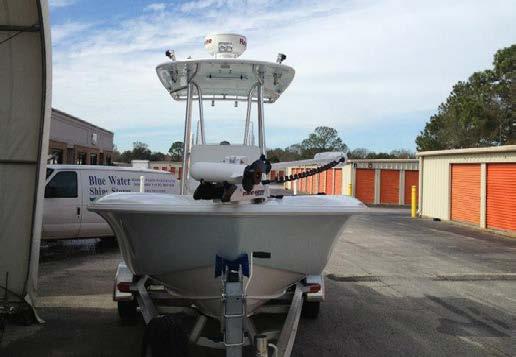
as well as distant targets, allowing for a full, comprehensive view of the area. A third thing to keep in mind is integration functionality with current navigational systems. When shopping for a boat radar you’ll want to make sure that your navigational system and boat radar system are compatible as they are designed to integrate with a boat’s navigation equipment. A last notable mention is budget considerations, boat radars seem to range from around one thousand to four thousand dollars depending on their features. While safety is top priority, it’s important to find a radar that you need and not just one that you want. Determine what specific requirements you have for the boat radar and what you need it to be able to do. The options for a boat radar on your small vessel are endless, whether you go with Raymarine’s Quantum 2 or RD418HD Color Radome, Simrad’s Halo 20+ Marine Radar, Furuno’s Defender, Lowrance’s Halo 20+ Pulse Compression Radar or Garmin’s GMR Fantom Marine Radar, find the one that caters to your boat, your specific use and budget needs and stick to it.
CAN BOAT RADAR HURT YOU?
Boat radar systems are regulated and designed to be safely operated and should not pose a threat to users or nearby individuals. However, boat radars do release a potentially harmful type of energy, radio frequency energy, also known as RF. High exposure to radio frequency energy can lead to thermal and nonthermal effects on the human body. Thermal effects are heat related, RF energy can generate heat in body tissues that cannot escape, prolonged or high level exposure can lead to blindness, sterility, and possibly cancer.
With all of that in mind, it comes as no surprise to hear William urge boaters to exercise caution around their radar systems.
“There are minimum distances for safe operation. Radar is not something you should be standing in front of. If it’s transmitting, you don’t need to be in line with the radar, and it does not need to be mounted in a location where your normal use case would be that it could be scanning a human.”
He continues, “I’ve seen boats where they’ll have a radar mounted, and there’ll be an upper station. And if someone was in the chair, the radar would be like scanning their crotch two feet away. That’s just a terrible and unsafe thing to do. If you have high enough wattage, you can cause some serious damage to the body.”
CAN BOAT RADAR DETECT WOODEN BOATS?
The short answer is yes, boat radar can detect wooden boats. Boat radar works by detecting objects based on their ability to deflect radio waves. Whether a boat is aluminum, fiberglass or wooden the radar should detect the reflections put off by the boat’s hull and structure. The radar’s ability to detect depends less on what type of hard structure it is but more on size and shape of the structure. As long as the radar had the ability to detect the size of said wooden boat, it would show up on the display screen of the radar system.
DO I NEED RADAR FOR MY BOAT?
Boat radar plays a top role for increasing safety when navigating in zero-low light conditions and inclement weather scenarios because it provides accurate detection and information of an operator’s immediate and future surroundings. It’s just another highly useful tool that can help you have that much more of a chance for a safe trip out on nature’s mysteriously dark, vicious waters. We looped back around and asked Capt. Branden Collier what the deciding factor was for him that made him purchase his marine radar and he immediately reminded us what he’d said earlier, “safety”. So with all of that being said, ask yourself again. Do you run in the dark frequently? Are there a lot of foggy mornings and/or evenings in your area? Do you want to safely run on plane in those scenarios? Do you want another failsafe to ensure a safe return? Do you wish you knew where that storm was headed when you see it coming on the boat? Do you occasionally rely on birds to catch fish? If you answered yes to any of these questions Capt. Collier says he would highly recommend looking into getting one of many boat radar options installed on your vessel.
Boat Radar Troubleshooting Before You Buy
877.314.1237 // GreatDaysOutdoors.com // March 2024 59

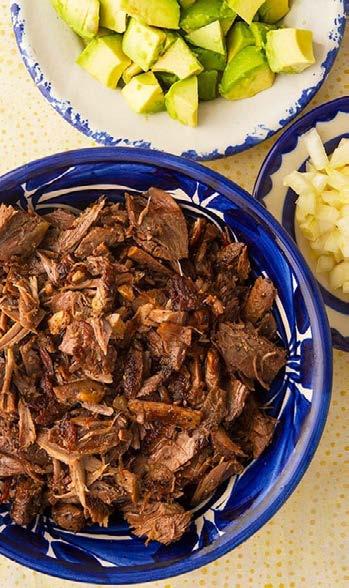
Turkey Carnitas
I of course use wild turkey here, but a domestic turkey will work just fine. You could also use pheasant, an old chicken, a guinea hen or just go full-on traditional and use pork shoulder. Once you braise the meat and pull it off the bone, it will keep in the fridge for a week. Crisp it up before you serve it. Once you make this, the finished carnitas will keep for a week in the fridge. I usually reheat it in a frying pan with a little oil.
Prep: 25 mins • Cook: 3 hrs • Total: 3 hrs 25 mins
Ingredients
• 2 to 4 turkey drumsticks, or 2 turkey thighs
• 1 quart turkey or chicken stock
• 1 orange, sliced
• 1 small onion, sliced
• 3 cloves garlic, smashed
• 2 teaspoons dried thyme
• 2 teaspoons oregano, Mexican if possible
• 1 small cinnamon stick
• 3 bay leaves
• 1/4 cup brown sugar
• Salt
• 5 tablespoons lard or olive oil
Instructions
1. Set the turkey in a large pot, such as a Dutch oven, and add the turkey stock. Add enough water to cover the turkey, then all the remaining ingredients except for the lard. Bring to a simmer and add salt to taste. Cook gently until tender, anywhere from 90 minutes to 4 hours, depending on whether your turkey is storebought, or, on the extreme end, an old wild tom.
2. When it is tender, remove the turkey from the pot and let it cool. Shred the meat off the bones and, if using thighs, shred fairly fine -- remember this will be a filling for tacos or burritos. You can store the meat for up to a week at this point.
3. To finish, add the lard to a frying pan and brown the meat as much as you like. I like a mix of soft and crispy, so I lay the meat out in one layer and crisp just one side.
60 March 2024 // GreatDaysOutdoors.com // 877.314.1237
Wild Turkey Broth
This turkey broth can of course be done with a domestic turkey; the two are not so different, although you will get a better broth with a better turkey. The key to this broth is to not let it boil, and to let the carcass cook for a long time before you add the veggies
Prep: 15 mins • Cook: 3 hours • Total Time: 3 hours 15 mins
Ingredients
• 1 turkey carcass, hacked into large pieces
• 3 carrots, peeled and chopped
• 3 leeks, washed well and chopped (including green tops)
• 3 celery stalks, chopped
• Stems from 1 bunch parsley, chopped
• 1 parsnip, chopped (optional)
• 2 or 3 bay leaves
• 1 tablespoon dried thyme
• 1 small handful of dried mushrooms, crushed (optional)
• 1 fennel bulb, chopped (optional)
Instructions
1. Break up the turkey carcass into large pieces so it
will fit in the pot. Use the largest stockpot you have. If you have not cooked the turkey already, roast the carcass with a little oil and salt at 400F until it is nicely browned, about an hour. Or, you can make a lighter broth by covering the uncooked turkey carcass with water, bringing it to a simmer (not a full boil) and skimming off any scum that floats to the surface. Do this for 15 minutes or so and then proceed.
2. Let the turkey simmer very gently -- you want the surface of the pot to barely shimmy, not bubble much at all -- for at least 2 hours and up to 12 hours. When you want to finish your broth, add the vegetables, herbs and mushrooms and simmer gently for another 90 minutes.
3. To strain, set a paper towel in a strainer and put the strainer over another large pot. Ladle the broth through the paper towel to filter out any debris. You might need to change the paper towel midway through the process.
4. Now you can either add salt to the finished stock or jar it as-is. If you plan to freeze the broth, leave about an inch of headspace in the jar, otherwise the expanding broth-ice will crack the glass. You can also pressure can this stock.
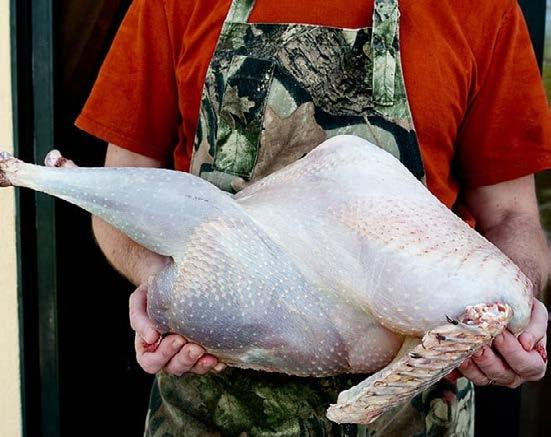
CAMPHOUSE KITCHEN 877.314.1237 // GreatDaysOutdoors.com // March 2024 61
NEW & Cool gear
BY NICK WILLIAMS

Smeltinator Underspin
Wicked Ridge Invader M1
Wicked Ridge Crossbows, the only brand of crossbows Built in America from $499-$1,099, recently launched its new Invader M1 crossbow for 2024. The next generation of the alltime best-selling Invader models is an incredible 5.5” narrower and 2.5” shorter than its predecessor. Weighing an ultra-light 5.8-pounds, the sleek 9.5-inch narrow, American-Built Invader M1, shoots a quick 390 feet-per-second. The compact, 32-inch long crossbow features the ACUdraw™ built-in crank cocking device for effortless cocking and new ProView™ 400 lighted optic.
Like the Smeltinator, the Smeltinator Underspin features an ultra-sharp, ultra-strong Gamakatsu hook and beautifully sculpted baitfish head and plastics-securing hook collar. But what makes the Smeltinator Underspin totally unique is its compact, nickel plated willow blade for added flash and vibration to mimic small baitfish. The lightweight blade spins instantly on contact with the water and continues flickering with minimal jigging action. Aiding and abetting the blade’s ability to spin at super slow speeds is an exceptional SPRO ballbearing swivel.

Hayman Minuteman Safe
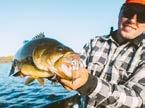
The novel design of the Minuteman provides immediate access to your loaded firearm(s) in your bedroom, living room, foyer or hallway (anywhere you might want quick access to your firearms), while securing the gun(s) as safely as a traditional gun safe. During a forced entry, when seconds count, you may not have time to get-to-and-open a standard gun safe before the threat is inside the building.
The Minuteman solves this problem! The patented design mounts discretely between standard wall studs, and provides access to a long gun or handguns in seconds.This new concept in gun storage is easy-to-install in buildings with standard wall-board and 16-inch-center stud framing, and has multiple mounting holes for solidly attaching to the studs and floor plate (instructions included).
Daiwa LAZY FA SHAD
On a straight retrieve, DAIWA’s LAZY FA SHAD winds through the water like a relaxed baitfish – one destined to become a meal. The floating lure dives up to three-feet when engaged, precise depth dictated by the speed of retrieve and weight of the line, narrower pulling deeper.
And, unlike a swimbait motoring with limited wobble, the LAZY FA SHAD rolls and shows its sides while in motion, broadcasting a subdued flash that says come and get me.
The LAZY FA SHAD’s curious slalom action is produced by a conspicuous fin centered on the head of the bait. Sort of looks like a miniature aquatic rhinoceros. Despite the diminutive nature of the fin, though, it really moves the bait around.

Matador Travel Blanket
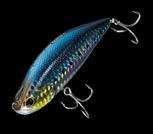
The Matador Pocket Blanket is a dry, clean place to sit – anywhere, anytime. This pocketsized blanket is ideal for hiking, parks, beaches, festivals, and events. Weighing just 3.8 oz., it’s water repellent, puncture resistant, and includes attached ground stakes for windy conditions. Fold it up in seconds with the Easy-Pack Pattern. Seats 2-4 people.
62 March 2024 // GreatDaysOutdoors.com // 877.314.1237
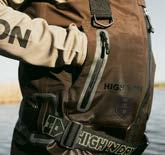
High and Dry Zippered Wader
I’m on my third year with the original, breathable waders that High and Dry makes. I’ve put a couple of hundred miles on them hunting public marshes, and they are still as dry as the day I bought them. Waders of that quality are hard to find, which is why I’m excited to see that High and Dry now offers a zippered model.
Therm-a-Rest Honcho Poncho for Kids
Therm-a-Rest already offers a thick, outdoor-designed poncho for adults, and is now making one for kids. The poncho doubles as a blanket and can be packed into the front pocket. It features a synthetic eraLoft insulation that is water-resistant and lightweight, thanks to its hollow fibers.


Turtlebox
ZMan Rattle-Snaker
The patented Rattle-Snaker tool allows for the easy insertion of glass rattles or tungsten weights into the bodies of ElaZtech® superplastics, thanks to its ingenious stainless hollow needle and pushrod design. A built-in storage compartment in the handle of the tool allows for easy rattle storage and quick addition of the element of sound to your soft plastic presentations on-the-fly.
The new Gen 2 Turtlebox is a portable, waterproof Bluetooth speaker known for its premium sound quality. It’s 100% waterproof, making it suitable for various outdoor environments. The speaker can reach up to 120 decibels, and it provides over 20 hours of playtime, enhancing its usability for extended outdoor activities. The speaker is available in various colors and handle color options, catering to different style preferences.

Searun Fly Rod Cases

The Andrea Larko Artisan Series by Sea Run Cases features premium fly fishing travel cases adorned with the artwork of Andrea Larko. These cases are designed for both style and protection, offering a unique blend of functionality and artistic expression that caters to avid fly fishing enthusiasts who appreciate the elegance of custom artwork. This series includes various models like the Norfork Classic QR Expedition and Riffle Daily Compact, each designed to accommodate specific rod lengths.
NEW & COOL GEAR FOR OUTDOORSMEN
877.314.1237 // GreatDaysOutdoors.com // March 2024 63
Applauding Governor Ivey’s Commitment to Increase Boating Access

 BY CHRIS BLANKENSHIP Commissioner of the Alabama Department of Conservation & Natural Resources
BY CHRIS BLANKENSHIP Commissioner of the Alabama Department of Conservation & Natural Resources

March is one of those months where there’s so much to do in the outdoors that it’s difficult to decide: Do you go freshwater fishing for big bass or slab crappie or head to the saltwater for the surf fishing and the sheepshead bite? At the same time, turkey hunting as well as feral hog and coyote hunting draw us to the woods.
Anglers who love to fish in the surf along Alabama’s beautiful beaches are going to have to do some scouting before the surf fishing really takes off this spring.
The reason for the scouting is the vast beach renourishment projects that were finished in February from Gulf Shores to Orange Beach in Baldwin County and along the East End of Dauphin Island in Mobile County.
Dredges pumped more than three million yards of sand from nearshore areas onto the beaches to mitigate erosion from tropical storm activity in the past few years, including Hurricanes Sally and Nate. That work likely altered the areas that surf anglers target, which means those anglers will want to survey the beaches and find new hotspots for pompano and whiting, just to name a couple of popular species that inhabit the surf zone. The accomplished surf anglers use sand fleas, ghost shrimp and bits of peeled shrimp enhanced with a piece of FishBites to entice the fish to hit in the surf.
Another great saltwater fishing opportunity in March is the toothy but tasty sheepshead. The best time to catch sheepshead is when
Anglers who fish the surf along Alabama beaches will need to do scouting for hotspots after the beach renourishment projects changed the shoreline
64 March 2024 // GreatDaysOutdoors.com // 877.314.1237
Photo by David Rainer
the fish are in a feeding frenzy during spawning activity around structure in coastal waters and the lower ends of the estuaries. They feed on the barnacles and the crustaceans hiding in the structure. The preferred habitat for sheepshead includes rock jetties and around the gas and oil rigs. The jetties around Perdido Pass, the inshore reefs in Mobile Bay and Mississippi Sound, Dauphin Island Bridge and Perdido Pass Bridge are all great places to catch sheepshead.
Sheepshead are notorious bait stealers, so stay alert for any type of bite, which may be very light. The most common tactic for catching sheepshead is to use live shrimp or live fiddler crabs. Before you get ready to head out on the water, make a few phone calls to the local bait shops to find out if they have live bait available. It doesn’t take long to figure out if you’re fishing productive waters. If you toss a piece of bait into a spot and don’t get a bite within a couple of minutes, either the fish aren’t there, or you’ve been robbed.
It’s a good idea to carry plenty of sinkers, leaders and hooks because you are going to lose some tackle when you’re fishing around barnacle-encrusted rocks, pilings or gas platforms.
For those who look forward to heading into the spring woods, Alabama’s turkey season opens on March 25. Research has shown that the majority of birds are harvested during the first two weeks of the season.
Because of a decline in the turkey population throughout the Southeast and other areas, it is crucial that Alabama hunters who harvest a bird report it through the Alabama Department of Conservation and Natural Resources’ (ADCNR) Game Check system. The harvest reports provide vital information for our Wildlife and Freshwater Fisheries Division to use to develop turkey management decisions.
Hunters reported taking 18,122 birds during the 2023 season, compared to 15,673 during the 2022 season and 14,947 during the 2021 season. Hopefully that is a trend that indicates the turkeys are on the rebound, but we need our turkey hunters to be vigilant about reporting their harvests.
For those who love to hunt feral hogs and coyotes, Governor Kay Ivey signed new legislation in 2021 that provides hunters in Alabama with another opportunity to harvest these two specific animals. The legislation allowed me as Commissioner to establish a season for hunting feral hogs and coyotes at night without the need for a depredation permit.
Alabama residents can purchase a $15 license ($51 for non-residents) to hunt feral hogs and coyotes at night. The season to hunt those animals at night begins at 12:00 a.m. on the day after the last day of gun deer season in that zone. The season ends 30 minutes prior to sunrise on the opening day of archery deer season in that zone. There is no bag limit, but you must have a valid annual resident or nonresident nighttime feral swine and coyote hunting license.
Previously, a depredation permit was required to take feral hogs and coyotes at night, and all of those who hunted those animals had to be added to the permit by the landowner. Now, if you lease hunting land and the person or corporation you lease that property from allows you to hunt at night, you can purchase the license to hunt those animals at night. And you can do that without the landowner having to acquire a depredation permit.
According to the U.S. Department of Agriculture (USDA), feral hogs cause more than $1.5 billion in damages to property, agricultural interests (crops and livestock), native wildlife and ecosystems as well as cultural and historic resources. Estimates show that feral hogs cause $50 million of damage in Alabama each year. Those hogs damage native habitat and compete with native wildlife, like white-tailed deer and wild turkeys, for food.
Coyotes are known predators that regularly target whitetail fawns, which can impact deer populations.
The new law also let us to amend several regulations to allow for equipment used for hunting at night, including night vision and thermal optics. You can also have lights attached to your firearms.
Just be careful out there at night, and be certain of your target before you discharge your firearm.
Like I said, March offers so many opportunities to enjoy Alabama’s great outdoors. Be sure to take advantage this spring.



FROM THE COMMISSIONER
visit us at www.pureflats.com Checkout special deals and promotions at Pure Flats.com… Shop – Specials & Promos for our latest deals and discounts. Specials & Promos 877.314.1237 // GreatDaysOutdoors.com // March 2024 65
The Lightning Oak Part Two: Teaching Moments
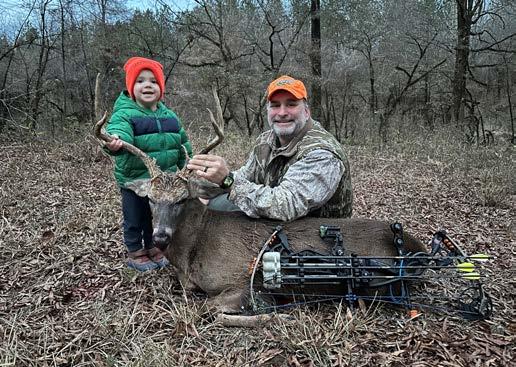
NOT ONLY DID THIS STAND PROVIDE A GREAT OPPORTUNITY FOR SELFREFLECTION, BUT ALSO SEVERAL TEACHING MOMENTS.
 BY CHARLES “CHUCK” SYKES
Director of the Alabama Division of Wildlife and Freshwater Fisheries (WFF)
BY CHARLES “CHUCK” SYKES
Director of the Alabama Division of Wildlife and Freshwater Fisheries (WFF)
First, I would like to thank everyone for the positive comments on last month’s article. It can be difficult to put into words how much I get out of simply being in the woods with my thoughts. I was a little apprehensive about writing about the personal and professional tribulations I was experiencing.
But I’m happy to say that it apparently resonated with quite a few readers. It’s comforting to know that there are folks out there who hunt for more than social media posts. The outdoors can be an extremely spiritual and healing experience if you let it. So, now on to the meat of this article.
On the morning of December 21, I received a phone call from a dear friend and colleague informing me that he had been diagnosed earlier in the week with stage 4 pancreatic cancer. He
didn’t want to spring this on everyone until after the holidays and wanted me to help him find the best way to let the conservation community know. Needless to say, this was quite a punch in the gut.
I was en route to Choctaw County to meet with Justin Grider, our R3 coordinator, and to take him and his son hunting that afternoon. Hunting is a loose term in this case since his son, Elliot, is only two years old. In addition to our meeting, I also had agreed to give a radio interview that day. So, I parked in an old field opening and did the interview while Justin and Elliot explored the area and released some energy. After I finished, I told Justin where to sit for the afternoon, and I grabbed my bow and climbed into the stand at the lightning oak for some afternoon reflection on the events of the day.
Based on trail camera pictures, I knew two 5.5-year-old bucks were using the area. Both were excellent deer for our property. One was a
66 March 2024 // GreatDaysOutdoors.com // 877.314.1237
really nice 8-point and the other was a 5-point. Although the 8 was a good deer, the 5 was the one I was hoping to get a crack at.
After an hour or so of contemplating life by absorbing all of the sights and sounds of the woods around the lightning oak, I began to see deer filtering through the little strip of hardwoods along the creek. The third deer I saw was the 8-point. Where I’m hunting is thick and I could never get a clear shot.
I could hear another deer walking behind me and sure enough, it was the 5-point. I was able to squeeze an arrow through a small opening when he was approximately 22 yards away. The shot was good and he didn’t make it back to the creek. I was so excited and couldn’t wait to get over to him.
I texted Justin to let him know about my hunt and to check on them. He said they had seen deer and a few pigs, too far to shoot, and would love to help me recover my deer.
Even though they were only several hundred yards away and it didn’t take them long to arrive, in all honesty, I’d already gone over to see the deer. I let Justin take the lead with Elliot following the blood trail. He took time to show him tracks, scuffed up leaves indicating a running deer, and blood on the leaves and tree trunks. They recovered the arrow a few yards into the search, and he taught Elliot all the components of the arrow. It wasn’t long before Elliot found the “big daddy deer” lying next to the creek.
From the description thus far, I’m sure many of you are wondering why I would rather take a 5-point over an 8-point, and it’s a legitimate question. I have been keeping up with this buck for the past three years. Each year I pour through tens of thousands of trail camera photos of deer, and I create a shoot list- and more importantly a don’t shoot list- for our guests to utilize while they are hunting with us.
That list drastically reduces the odds of mistakes happening and bucks being shot that are too young. This particular buck was named Leo after one of our friends who saw him several times when he was a 3.5-year-old 7-point. The following year, Leo blossomed into a big bodied 4.5-year-old 8-point with tons of potential. He remained on the no-shoot list because of his age.
Sometime during late December, Leo vanished off the trail cameras. When he resurfaced in early February, he was rutted down and had messed up his left knee. I was a bit unsure if he would make it through the winter with the injury and poor body condition.
I started running cameras to inventory bucks for the upcoming season in late August. One of the first photos I got was Leo. Even though I could recognize him, that bum knee made him unmistakable. He was now a big 5.5-year-old 5 point. The injury had taken its toll on his antlers. Regardless of his antler size, he was a mature south Alabama whitetail that had made it through 5 years of trials and tribulations and was, therefore, a true trophy in my book.
As with people, you can’t simply judge a deer by physical characteristics in one snapshot in time. You never know what someone, or in this case a deer, has gone through throughout their life. Although many will throw around the term “cull” buck when they see pictures of Leo. In no way, shape, form, or fashion is he a cull in my book. He is the largest and oldest whitetail I’ve taken in Alabama with archery equipment and 100% a trophy that will be proudly displayed in our home.
On this magical afternoon, I was able to improve my mental well-being by experiencing all the things nature provided. I had the opportunity to take an incredible whitetail buck. And finally, I capped off the afternoon watching a father spend quality time with his young son, teaching him about the natural world and the life and death experiences that are so precious to all of us who enjoy God’s great outdoors. The lightning oak did it again!


Cables · Transmission Parts · Ring & Pinions, Axles · 4X4 Drive Shafts & Differentials Custom Built Control Cables · Complete 4WD Services · All Types of Parts Specializing in Agricultural Clutches and Drive Shafts Time to Get Your 4x4 Ready for Hunting Season 1159 South Broad St. MOBILE, AL 36603 1-800-239-2191 OUR LOCATION 251-433-3696 www.clutchproducts.com DIVISION OF CLUTCH PRODUCTS INC. & POWERTRAIN FROM THE DIRECTOR
877.314.1237 // GreatDaysOutdoors.com // March 2024 67
AL & NW Florida
Saltwater Fishing Forecast
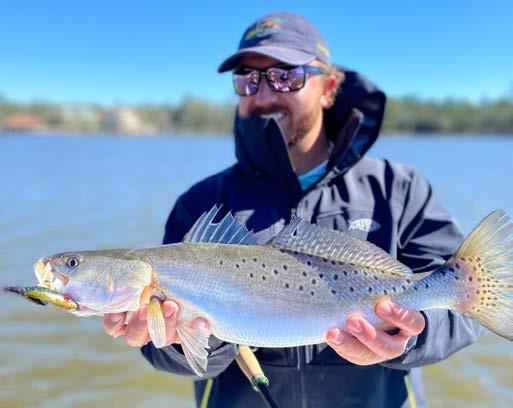
 BY TANNER DEAS
Photos by Tanner Deas
BY TANNER DEAS
Photos by Tanner Deas
Spring season is making its arrival, the sun shows its rays just a little bit longer day by day and warming temperatures in our area have anglers bundled up in the mornings then wearing shorts after lunch. These conditions lead to the beginning of the first transition period of the year. Inshore game fish like Sheepshead, Speckled Trout, Redfish and Flounder nudge their noses out of their winter holes while migratory species make their appearance as water temperatures increase and spring progresses further.
INSHORE:
As the transition period happens baitfish and shrimp start to move out of the grass and creeks while the fish follow. Fish come out of these same areas and move out to shallower bayous, marsh systems, river mouths, grass beds, shallow flats adjacent to deeper water, artificial reefs and down to the beach where they
can be found on the deeper side of slopes and holes. Top water lures (Heddon One Knocker), twitchbaits (Mirrolure MR17), small jerkbaits (Rapala Ripstop), small paddletails (Fishbites Fight Club Series Butt Kicker), and fluke style baits (Z-Man Streakz) all work well in these scenarios. If live baiting in this instance, popping cork rigs, freelining, or using a small split shot rig works well. Live shrimp, small menhaden and finger mullet should be your baits of choice. A good example of an all around setup when doing this type of inshore fishing is the Fenwick HMG Casting/Spinning Rod in the Medium Fast or Medium Light Fast rating paired with a Daiwa Coastal or if spinning, a Daiwa BG 2500. 10-20# braid with three to six foot of 15-30# fluorocarbon leader material is acceptable and more than enough for any inshore fishing needs.
This time of year the fish can be fired up and if
68 March 2024 // GreatDaysOutdoors.com // 877.314.1237

an angler is dialed in or gets some of the fishing gods’ luck a trophy sized Speckled Trout can be had. When targeting these fish larger profile artificial lures or larger profile live baits is the way to go. Fishing drop offs and slopes in 2-6’ in depth and areas with good current and high bait population is best. If live baiting, croakers, menhaden, 5-6” mullet, pinfish and even pigfish are premium choices. When fishing for trophy trout with larger sized artificial lures, the Pure Flats Slick Lure, Mirrolure MR27 and MR28, Yo-Zuri 3DB, or Coastal Brew Baits 6” grub are perfect examples and options to attract those bigger eats.
Pompano and Whiting will also be prominent on the beachfront and barrier islands. Focusing on slopes, rips in the surf, sand bars and deep pockets these tasty critters can be targeted with pompano jigs, sand fleas, ghost shrimp, live shrimp, Fishbites Fish Strips, and small pieces of dead shrimp. Some of the biggest Pompano of the year are caught on this first run in March. These fish can be accessed by boat or from shore and can be for a fun day of fishing for anyone and while Whiting is great for a fish fry, Pompano makes for some of the best ceviche around.
NEARSHORE:
Sheepshead begin their spawning period and start congregating in big schools around hard structures like heavy dock structures, rock jetties, bridges and further out to the gas rigs. Sometimes in the spawning season, fish can be seen flashing and swimming subsurface, milling about staying tight to each other and to structure as they contribute to making the next generation of Sheepshead. Generally, these “spawning season sheep” are much less cautious than normal and are so fired up they’ll eat just about anything. Barnacles, fiddler crabs, live shrimp, dead shrimp, oysters, hermit crabs, sand fleas and just about anything else you can think of will get bit during this spawning event. Even though they’re aggressively feeding in this scenario, the shape of the fish’s mouth and its teeth structure can still lead to missed bites and stolen baits. These tasty fish consistently live up to their nickname of “Convicts” as they are notorious for leaving anglers fishing on credit without even knowing it due to their light bite. Sometimes when fishing this heavier structure, a setup that is a little more stout can be the difference in landing a fish or breaking off. A Medium Fast action or Medium Heavy Extra Fast action rod should be the perfect rating to combat these fish hanging tight to structure, pairing that with a size 4000 spinning reel should work well. If bait casting be prepared to use a lot of “thumb” so you can prevent those fish from breaking you off on the barnacle-studded pilings of the gas and oil rigs.
FISHING FORECAST
Schools of Redfish, Spanish Mackerel and big White Trout can also be found out at the gas rigs this time of year as well as Mangrove Snapper and Spadefish. Large live baits or bigger profile grubs will work great on bottom and when working the bait back up the water column for the redfish. Three to four inch sized grubs on bottom and working up the water column will work well for white trout as well. Eye Strike Fishing Texas Eye and Texas Eye XL jigheads work great to avoid snags when fishing around the gas rigs and other heavy structures. Mangrove Snapper and Spadefish can be had in the same areas by using live shrimp, dead shrimp, small croakers or small pieces of cut bait.
OFFSHORE:
The Great Blue still has tons to offer this time of year, whether pulling plugs for billfish, high speed trolling for Wahoo, chunking for Tuna, or bottom fishing for Vermilion Snapper and other species, there’s plenty of options. When going offshore it’s important to take note of all safety precautions, watch the weather and check current harvest regulations for your area to ensure that you avoid any tickets or hassles on the water or at the boat launch. Typically there’s always a few species that are closed out while another one or two are open so make sure you’re up to date before you put that meat in the box!
Bottom fishing on natural bottom should offer a hot Vermilion Snapper bite as well as Porgy and Almaco Jacks. These fish can be had using a two hook “chicken rig” with 20-40# braid as mainline and a 40# fluorocarbon/ monofilament leader on a Medium or Medium Heavy rated conventional or larger spinning reel setup. Fresh cut squid and cut bonito or other cut baits are perfect when targeting these fish, slice it into small pieces and drop to bottom for an almost instantaneous bite. Micro jigging with small 40-100g slow pitch jigs can also be very productive in these scenarios and may lead to a cool grouper, snapper, AJ or some other exotic bycatch. If the jigging bite slows down, try switching your cadence or a different style of jig to see if that triggers the bite on your next drop.
High speed trolling for Wahoo around the 50 and 100 fathom lines will be a prime target and allows you to cover lots of water while pulling baits.. Lures like the Nomad Design Madmacs, Magbay Lures 10” Magtrak, and Yo-Zuri Bonita have proven true time and time again. The FADs will offer steady action with many pelagic species such as billfish, dolphin (mahi-mahi), wahoo and tuna. Check Hilton’s Realtime Navigator to stay up to date on current water conditions so you know when it’s time to go.
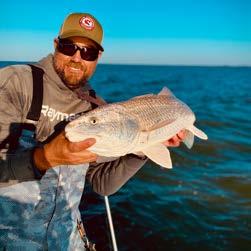
877.314.1237 // GreatDaysOutdoors.com // March 2024 69
Pier & Shore Fishing Outlook

Gulf pier anglers welcome back spanish mackerel in mid to late March
Spanish mackerel are by far the most numerous gamefish, with schools getting larger and more frequent toward the end of March .
 BY DAVID THORNTON
Photos by David Thornton
BY DAVID THORNTON
Photos by David Thornton
March is our transitional month from winter to spring which officially begins on March 19th, with the vernal or spring equinox. The length of daylight is already getting longer; over 12 hours now, and they may seem even longer to many after the change to daylight savings time begins on March 10th.. That date doubly coincides with a NEAP tide and the new moon. Another NEAP tide will occur around March 24th and 25th and coincide with the full moon.
But all of this change comes with a cost, meaning March weather can be quite volatile as the seasons compete. Some years we tend to have more frequent storm systems and even freezing periods, while other years the weather
pattern tends to be warmer, drier, and more benign. Extreme temperature variables are quite possible too, with low temperature records below freezing, and high temperature records above 90. But overall, a lot of good fishing things start happening this month as the average air temperature warms through the low to middle 60s and the Gulf water temperatures follow suit.
First in the lineup for March, squid begin schooling near shore. They may be caught in numbers from the Gulf beach piers using squid jigs. Many Gulf Coast fishers have learned that pan-fried, fresh squid makes a fine meal. And calamari strips, battered and deep fried, are a wonderful appetizer. The main course,
70 March 2024 // GreatDaysOutdoors.com // 877.314.1237
though, is often sheepshead, which are much more commonly caught around mid-month as they gather into large, competitive spawning aggregations. Male sheepshead average two to four pounds, but may reach six or so pounds, while female sheepshead may be almost twice that weight and average four to six pounds. Sheepshead over 20 inches long (about six pounds) may contain a pound or more (hundreds of thousands) of unfertilized eggs just prior to spawning. This process usually lasts about four to six weeks in the vicinity of the passes and the Gulf beach piers. These are most often caught using fiddler crabs near the pier piling, or with medium to small sized live shrimp. Sheepshead only rarely eat dead shrimp and are almost never caught on lures. Anglers wishing to target them are better off using a football jig head baited with a fiddler crab, live shrimp, or very freshly dead shrimp.
March also brings the first of the pelagic migrations into our area. Spanish Mackerel are by far the most numerous gamefish, with schools getting larger and more frequent toward the end of March. They quickly become the primary target species for pier and jetty anglers this month as the water warms through the 60s. Spanish Mackerel are often caught on small jigs or plugs, but only rarely on the surface so early in the season. These are followed by other highly migratory nearshore fish such as the prized Cobia, King Mackerel, and Jack Crevalle. Cobia are mainly targeted with three-ounce brightly colored cobia jigs that resemble a large squid or small octopus. The angler’s tackle should be rated as heavy or extra heavy because these sporty gamefish can put up quite a fight near the pier, so heavy line is often employed to control the fish and bring it to the gaff. In contrast, King Mackerel are fast sprinters, so line capacity is quite important to tire them out prior to bringing them to the pier to be gaffed. Many are caught using 6 to 10 inch long diving plugs, but they traditionally are caught on live or dead baitfish too. Large Jack Crevalle (over 20 pounds) are kind of in between as far as tactics and tackle to land them. Otherwise, with too light of tackle the angler is in for a long battle they are likely to lose when the fish gets close to the pier piling.
It appears only the four eastern-most Panhandle piers will be open during March of 2024: the Panama City Beach County and City piers, the Fort Walton Beach Okaloosa Island pier, and the Navarre Beach pier. The Pensacola Beach pier closed in January 2024, and it will remain so for several months. There was extensive damage to the rail and other features from Hurricane Sally in September 2020. The repair contract amounted to $4.2 million, and necessitates the whole structure be shut down until at least sometime in May. The Gulf State Park Pier in Gulf Shores, Alabama closed in mid-November 2023 to begin the process of repairing the 210 foot breach just north of the outer octagon left by Hurricane Sally. The $13.6 million FEMA funded contract includes removal of the damaged piling and other submerged debris, plus creating artificial reefs with that debris, replacing the piling, piling caps, and spans, replacing the wood floor panels and railing, and replacing electrical and water infrastructure to the outer octagon. The initial estimated reopening date is September 1st.
Some pier anglers, plus a majority of shore fishermen, tend to concentrate on pompano in March. As surfzone temperatures increase this month more pompano should begin filtering into the area. Often these pre-spawn pompano include a high percentage of large female fish, two to four years old that weigh two to four pounds. Most are targeted on long rods and big reels with set rigs (double drop pompano rigs) placed on the bottom with three to six
ounce weights. Fresh shrimp or shrimp with Fishbites combo are commonly used, but ghost shrimp make great bait too. Especially when the gulf waters are calm and clear, and pompano are quite finicky. That’s when ghost shrimp can really make the difference, especially when presented on lighter tackle and a single drop rig, a Fishfinder or Carolina rig with only an ounce or two of weight
Another factor favoring pompano fishermen is the afternoon high tides. Most days in March the tide is coming in until mid to late afternoon, especially after the change to Daylight Savings Time. The strongest tidal movements may be around the days a week before, or following the NEAP tides. Just keep in mind the wind and waves can create rip currents that easily overshadow or work in conjunction with these astronomical tide movements.
It is not uncommon to encounter schools of redfish in the 24 to 30 inch range this month as the shallow waters near shore warm more quickly. These fish usually winter over in local creeks and bays, but become more active in March as warming conditions create better foraging for them in the surfzone. They may be caught incidentally to pompano or drum fishing, but may also be sightcast to whenever conditions allow. That usually means slight to calm seas with light winds and mostly clear water and skies while the tide is moving. Medium-sized jigs or spoons, along with shallow running plugs can usually get their interest.
Other fish within range of shore fishers become more active with the onset of spring include whiting, bluefish, bonita (little tunny), and speckled (spotted) seatrout. All these options, and more make great fishing as the water warms through March and more anglers venture forth to enjoy their great days outdoors!

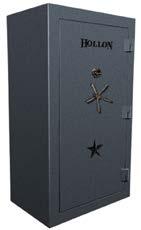



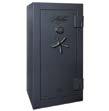

FISHING OUTLOOK WE SERVICE ALL BRANDS OF GUN SAFES BUT... WE PROUDLY SELL ONLY HOLLON GUN SAFES (251) 479-5264 457 Dauphin Island Parkway “At the Loop” Mobile, AL 36606 WE SERVICE ALL BRANDS OF GUN SAFES BUT... WE PROUDLY SELL ONLY HOLLON GUN SAFES (251) 479-5264 457 Dauphin Island Parkway “At the Loop” Mobile, AL 36606 WE SERVICE ALL BRANDS OF GUN SAFES BUT... WE PROUDLY SELL ONLY HOLLON GUN SAFES (251) 479-5264 457 Dauphin Island Parkway “At the Loop” Mobile, AL 36606 877.314.1237 // GreatDaysOutdoors.com // March 2024 71
REGIONAL FRESHWATER
Fishing Outlook
BY ED MASHBURN Photos by Ed Mashburn
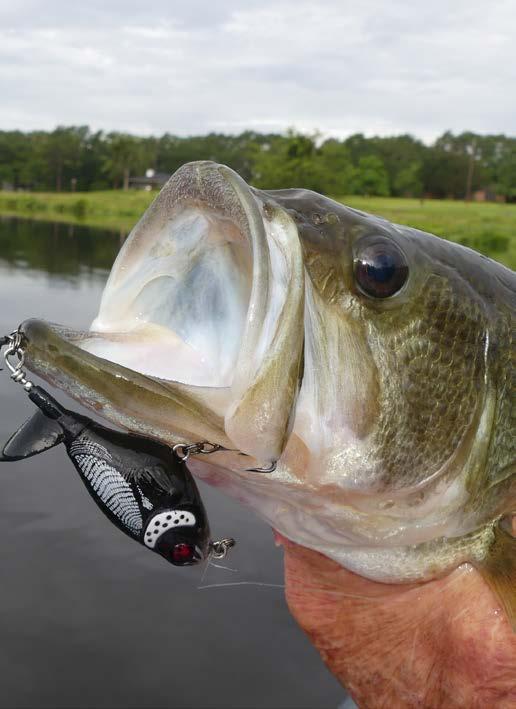
Bass will start to look up for feeding, and topwater lures can be very productive in March .
72 March 2024 // GreatDaysOutdoors.com // 877.314.1237
To change up that old Christmas tune and make it fit March, “It’s Beginning to Look a Lot Like Springtime” in the Deep South. As the days get longer, the waters of our region will start to warm, and that means it’s spawning time and fish catching time.
All over the Deep South lakes and rivers, both fish and anglers will be getting much more active, and some of the best fishing of the entire year can happen in March. Let’s see what some of the best anglers in our region can tell us about the fishing in March .
ALABAMA WATERS
LAKE GUNTERSVILLE
We’re starting to get into full spring fishing patterns on the lakes of Alabama, and there’s no water better for fast fishing in spring than massive Lake Guntersville.
Veteran guide and tournament angler Captain Jake Davis says bass anglers will have good luck with Rat-L-Traps in the standard Guntersville red colors, and Texas-rigged soft plastics will also be very good. Square-bill crank baits will be good bets to cover a lot of water in order to find the best concentrations of bass. It looks like just about every kind of offering made to the bass this month should be good.
Captain Jake tells us that we’ll need to look for water warming into the upper 50s or above for actual bedding to begin. When the water temperature hits the low 60s, things should get very good for bass anglers as the bass will go to the shallow bedding areas.
Bass anglers should work the staging areas- drop offs and channelsnear the flats where most of the Guntersville bass go to make their beds for spawning.
Crappie anglers should have good results in March by fishing the bigger creeks where the slabs will be getting ready to spawn in April and May. Both small jigs and live minnows worked slowly around deeper structure will be good.
SIPSEY FORK
Year-round trout fishing is the rule in Alabama’s only full-time cold water trout fishery.
March is a good time for anglers to get a good start in trout fishing in Alabama’s only full-time cold water trout fishery. This month will see March browns hatching as well as black caddis. Blue wing olives have been hatching all winter, and they will continue into March. Fly hatches can occur anywhere along the run of the Sipsey Fork. Riverside Fly Shop will have flies to match all of the hatches.
Another kind of fly fishing will occur in March as fly anglers throw streamers in white, silver and black top to match the run of threadfin shad. These one to three-inch streamers can attract some of the biggest trout in the river.
Trout will be stocked monthly at the Sipsey Fork, but the folks at Riverside have a donation jar where anglers can drop a few dollars in for the purchase and release of three to five pound rainbows in the river- these are some fine fish.
Riverside is doing guided drift boat trips, wading trips, and striper on the fly trips above the dam in Smith Lake.
Anglers who want some world-class fly fishing fun should contact the shop for coastal saltwater fly fishing trips to various Gulf Coast
locations.
WEISS LAKE
Captain Lee Pitts says, ”It’s March- THE time for crappie here.”
Anglers can fill a big ice chest with fine eating crappie by long-line trolling jigs over open water and then as the month moves on, fast results will come from a jig fished under a float. This rig should be cast over submerged stumps on flats.
Pitts says, “Throw it out, and let it sit. Then, move it a foot and let the jig settle back under the float. Keep moving the float and jig a foot at a time. The crappie usually hit the jig as it falls.”
Anglers who are crappie fishing on Weiss at this time need to think about using light line- 6 pound test is good because it allows good lure movement and a more natural presentation.
The bass at Weiss are starting to get tight to the shorelines in preparation for bedding. Anglers need to really focus on hard clay and gravel and rock bottom. The bass will be holding on hard bottom structure at this time.
Pitts says,” I cover a lot of water at this time using a Larue Bifflebug on a jighead. I can feel the jig hit rocks. I also throw spinner baits. I like a Talon 3/8 oz spinner bait with double Indiana gold blades. I like chartreuse and white colors.”
MOBILE DELTA
“Everything about fishing in March is predicated on the river stages. The higher the rivers- say eight feet or higher at the Berry Steam Plant- and you’ll be fishing down around the Causeway because of the very high water,” predicts long-time Delta angler and guide Captain Wayne Miller.
He says that it is not impossible to catch bass in the very high water and fast currents, but it can be close.
After the high waters run down, bass will find lots of food coming out of the flooded woods. The bass will bulk up and get really healthy, and this benefit can carry on through the rest of the year.
In March, the Delta bass will be eating crawfish, and lures need to match this food. Really bright reds and oranges are good choices for crankbaits. Jigs can be very good too.
Miller tells us, “In March is the one time I get away from my usual advice- ‘Think small.’ In early spring we see large crawfish, and the bigger bass will target big crawfish. Use big jigs with trailers, and I will bulk up the size of jigs and crankbaits in the crawfish patterns.”
LAKE EUFAULA
Long-time Lake Eufaula guide Sam Williams tells us that the bass will be in pre-spawn pattern, which means they will be feeding heavily. Smaller crank baits and lipless crank baits fishing in five to seven feet of water should be quite good in March.
Anglers need to work creek mouths very hard. Look for water grass which will be starting to grow.
On another note, anglers can have some serious fun trolling along drop off and old creek channels for white bass, hybrids, and even some very big stripers in March. White jigs and shad pattern crank baits are good choices for slow trolling for the whites and hybrids.
FISHING OUTLOOK
877.314.1237 // GreatDaysOutdoors.com // March 2024 73

The crappie at Eufaula will be off deep ledges, and as the month goes one, they will move to the tops of drop offs and ledges as they get ready for the big spring spawn.
Anglers need to pay attention to the weather. If the weather and water warm sooner than unusually, the crappie may start their spawn earlier than they most often do- April and May.
WILSON LAKE
Captain Brian Barton says that in March the catfish at Wilson are getting ready to spawn. Anglers should look near the lake flats and long points. Between Wilson Lake Shores and McKiernan Creek is a very good region to find these pre-spawn catfish.
Look for rock and wood cover, and work the bait just above or beside the cover.
Catfish anglers should try cut bait, chicken livers, and live shad if they can be found. Big catfish will be found right below Wilson Damtry big chunks of shad or whole shad in deeper holes along bluff walls. Use electronics to find holes on the bottom that are five feet or deeper than the surrounding bottom- the bigger cats love these areas.
As March moves on, bigger catfish will be moving up in shallower water for spawning.
MILLER’S FERRY
“In March, everything is on the banks in a pre-spawn or actual spawn
pattern. When the water gets at 60 degrees, everything will start to happen,” advises Joe Dunn.
Bass anglers can flip jigs in grass that will be starting to emerge, and chatter baits and spinner baits will also be very good. All lures need to be in some kind of shad pattern since shad are the primary forage for bass.
Dunn reminds us that lots of anglers will be riding around the lake at this time looking for the right conditions, because the lake doesn’t all have the same water and temperature conditions at the same time. Some bays and sloughs will be warmer and more productive than others.
The Miller’s Ferry crappie will be up on the banks by late March, and they will be shallow near wood and grass. Crappie anglers should look for crappie to be just off the banks. Use a cork with a jig a foot or so below the cork. This rig works very well on suspended crappie along the banks at this time.
Dunn says, “I like a Southern Pro jig- the color depends on water temperature and clarity. Silvers and blues work well for clear water. Chartreuse, black, and electric chicken are better for stained water conditions
FLORIDA WATERS
LAKE TALQUIN
Buddy Cartwright of Whippoorwill Lodge on Lake Talquin tells us that anglers should visit the lake early in the month for the best shot
Regional Freshwater Fishing Outlook
74 March 2024 // GreatDaysOutdoors.com // 877.314.1237
When crappie are on the spawning beds, mini jigs can work well
at the biggest bass as they will be moving on the beds for spawning. The bedding bass will take worms, lizards, and other soft plastics, and March is a good time for sight fishing the big girls as they are on the spawning beds. June Bug has been a consistently good color for the March soft plastics.
Crappie anglers will find plenty of slabs in the shallows as they continue their spawning, but some of the biggest fish will have moved off the beds and back into more open water. Try trolling creek mouths and deeper creeks with jigs and live minnows.
The catfish will still be in deeper water in March, but they will be getting ready to move on the flats and ledges for spawning as the water warms.
WAKULLA RIVER
Rob Baker of Wilderness Way, a long-time resident of the area and guide, advises us that as the water warms, the bass will start moving into shallow water bedding areas, and depending on the water clarity, some good sight fishing for bedding fish can occur.
This will be a good time for top water frogs worked over very thick cover. Work the soft-plastic frog slowly and be ready for some violent strikes.
Plastic worms in watermelon color on Carolina rigs will catch bass near heavy cover. Look for logs and old blowdown treetops, especially in the Wakulla River.
For panfish anglers, the bream will be moving into quiet backwaters off the main river channels, and tiny artificials and live crickets and worms will collect.
Important Contact Information
Capt. Brian Barton
256-412-0969
Brianbartonoutdoors@aol.com
Capt. Jake Davis
Mid-South
Bass Guide Service
615-613-2382
www/midsouthbassguide.com
Joe Dunn
Dunn’s Sports
334-636-0850
33356
Hwy 43, Thomasville, AL
Rob Baker
Wilderness Way Kayak Shop
850-877-7200
3152 Shadeville Road
Crawfordville, Fl 32327
Whippoorwill Lodge
850-875-2605
fishtalquin@gmail.com
Randy Jackson
Riverside Fly Shop
17027 Hwy 69 N
Jasper, AL
256-287-9582
riversideflyshop.com
Captain Wayne Miller
Mobile-Tensaw Delta Guide Service
251-455-7404
Millewa12000@yahoo.com
Capt. Lee Pitts
256-390-4145
www.pittsoutdoors.com
Capt. Sam Williams
Hawks Fishing Guide Service
334-355-5057
www.hawksfishingguideservice.com
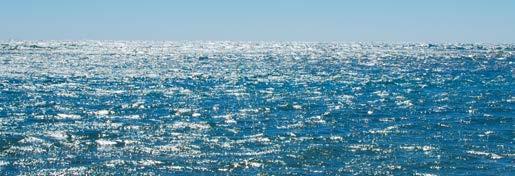
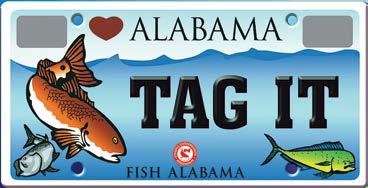
Regional Freshwater Fishing Outlook
Show Your Support for Alabama’s Coastal Fishing & Marine Resources. All proceeds from your TAX DEDUCTIBLE purchase are used for marine conservation in Coastal Alabama. For more info on the events or CCA Alabama www.ccaalabama.org 251-478-3474 877.314.1237 // GreatDaysOutdoors.com // March 2024 75
AM
AM
AM
PM

30 Days 12.8 31 Days 12.4 K L L a b c d e e g j k l m n A B C D E F G H I J K L L a b c d e e g h i j k l m n n o p q r s t u v w x y z ; F Sa S M T W Th F Sa S M T W Th F Sa S M T W Th F Sa S M T W Th F Sa S 1 2 3 4 5 6 7 8 9 10 11 12 13 14 15 16 17 18 19 20 21 22 23 24 25 26 27 28 29 30 31 11:34 PM --:-12:36 AM 1:40 AM 2:41
3:37
4:26
5:08
5:45
7:19
7:51
8:22
8:57
9:35
10:17
11:06
11:59
12:57
1:57
2:56
3:55
4:51
5:46
6:40
7:34
8:30
9:27
10:27
11:29
--:-12:31
3:56
4:44
5:36
6:32
7:33
8:34
9:34
10:32
10:08
10:52
11:33
12:13
12:51
1:31
2:11
2:54
3:41
4:31
5:25
9:11 AM 9:47 AM 10:30 AM 11:22 AM 12:23
1:33
2:46
4:01
5:15
7:27
8:38
9:49
10:59
12:09
1:16
2:17
AM 4:37 AM 5:10 AM 5:40 AM 6:05 AM 6:29 AM 6:53 AM 7:18 AM 7:44 AM 8:13 AM 8:47 AM 9:27 AM 10:15 AM 4:19 PM 5:09 PM 6:04 PM 7:02 PM 8:03 PM 9:04 PM 10:03 PM 10:59 PM 2:00 AM 12:53 AM 1:45 AM 2:36 AM 3:28 AM 4:21 AM 5:16 AM 6:13 AM 7:10 AM 8:04 AM 8:57 AM 9:45 AM 10:30 AM 11:13 AM 11:53 AM 12:32 PM 1:11 PM 1:51 PM 2:32 PM 3:17 PM 4:05 PM 4:57 PM 5:53 PM PHASE Date Rise Over Set PHASE Date Rise Over Set Under Shaded areas represent best days during the month. MOON TIMES
AM
AM
AM
AM
AM
AM
AM
AM
AM
AM
AM
AM
AM
PM
PM
PM
PM
PM
PM
PM
PM
PM
PM
PM
PM
AM
AM
AM
AM
AM
AM 11:26 AM 1:19 PM 2:10 PM 3:02 PM 3:54 PM 4:49 PM 5:45 PM 6:41 PM 7:37
8:31 PM 9:21 PM
PM
PM
PM --:--
AM
AM
AM
AM
AM
AM
AM
AM
PM
PM
PM
PM
PM
PM
PM
PM
PM --:--
AM
AM
AM 3:12 AM 3:58
chart is specifically
game
& fish
in
Over & Under is the best feeding times for game animals & fish in non-tidal waters MOON & FEED TIMES Date Day This chart is specifically designed for fishing times in the Mobile/Tensaw Delta & other tidally influenced waters of South Alabama. PRIME FEEDING TIMES Mobile / Tensaw Delta March 2024 1 2 3 4 5 6 7 8 9 10 11 12 13 14 15 16 17 18 19 20 21 22 23 24 25 26 27 28 29 30 31 Fri Sat Sun Mon Tue Wed Thu Fri Sat Sun Mon Tue Wed Thu Fri Sat Sun Mon Tue Wed Thu Fri Sat Sun Mon Tue Wed Thu Fri Sat Sun ★ ★ ★★ ★★ ★★★ ★★★ ★★ ★★ ★★★★ ★★★★ ★★★★ ★★★★ ★★★ ★★★ ★★ ★ ★ ★★ ★★ ★ ★ ★★ ★★ ★ ★★ ★★★ ★★★ ★★★ ★★ ★★ ★ 76 March 2024 // GreatDaysOutdoors.com // 877.314.1237
March 2024 This
designed for
movement for the state of Alabama
feeding times
non-tidal waters in the state. Inclement weather or rapidly changing temperatures can adversely affect feeding times. Moon
01:59 AM / -0.11
03:43 AM / -0.24
05:00 AM / -0.40
06:03 AM / -0.54
06:55 AM / -0.64
07:40 AM / -0.62
08:18 AM / -0.48
08:49 AM / -0.22
10:01 AM / 0.14
06:57 PM / 0.42
09:22 AM / 0.49
09:03 PM / 0.21
08:10 AM / 0.71
10:38 PM / 0.01
12:24 AM / -0.13
02:32 AM / -0.23
04:09 AM / -0.30
05:26 AM / -0.34
06:30 AM / -0.35
07:20 AM / -0.33
07:56 AM / -0.26
08:18 AM / -0.14
Fort Morgan
02:10
02:47
04:28
05:35
08:14
01:56 AM / -0.04
03:30 AM / -0.18
04:37 AM / -0.33
05:29 AM / -0.47
06:14 AM / -0.55
06:53 AM / -0.54
07:28 AM / -0.42
07:54 AM / -0.19
08:58 AM / 0.10
06:30 PM / 0.44
08:19 AM / 0.39
08:11 PM / 0.26
07:31 AM / 0.57
09:34 PM / 0.10
11:26 PM / -0.01
01:51 AM / -0.09
03:27 AM / -0.15
04:47 AM / -0.20
05:49 AM / -0.22
06:35 AM / -0.22
07:09 AM / -0.16
Mobile River
03:56 PM / 1.40
04:33 PM / 1.53
05:19 PM / 1.64
06:14 PM / 1.73
12:56 AM / 0.08
03:28 AM / -0.06
05:02 AM / -0.23
06:09 AM / -0.41
07:01 AM / -0.59
07:46 AM / -0.69
08:25 AM / -0.68
09:00 AM / -0.53
09:26 AM / -0.24
10:30 AM / 0.13
08:02 PM / 0.55
09:51 AM / 0.49
09:43 PM / 0.32
09:03 AM / 0.71
PM / 1.09 02:59 PM / 1.41
PM / 1.64 04:21 PM / 1.76
05:12 PM / 1.79 06:06 PM / 1.76
07:02 PM / 1.69
08:04 PM / 1.59
09:15 PM / 1.48
11:06 PM / 0.12
12:58 AM / -0.01
03:23 AM / -0.12
04:59 AM / -0.19
06:19 AM / -0.25
07:21 AM / -0.28
08:07 AM / -0.27
08:41 AM / -0.20
02:04 PM /
03:03 PM /
07:25 PM /
08:17 PM /
01:15 AM / 0.18
01:53 AM / 0.06
02:46 AM / -0.06
03:42 AM / -0.16
04:24 AM / -0.25
04:57 AM / -0.28
05:20 AM / -0.25
05:36 AM / -0.15
05:49 AM / 0.01
06:47 AM / 0.20
04:39 PM / 0.21
05:44 AM / 0.34
06:06 PM / 0.13
05:20 AM / 0.38
07:13 PM / 0.08
11:52 PM / -0.01
01:23 AM / -0.12
02:24 AM / -0.17
03:26 AM / -0.19
04:30 AM / -0.19
07:45 PM / 0.90
08:38 PM /
05:21 AM / -0.17
06:01 AM / -0.12
08:47 PM / 1.08
10:00 PM / 0.96
02:41
PM / 0.62
12:48 AM / 0.89
02:16 PM / 0.70
02:16 AM / 0.78
01:31 PM / 0.85
04:09 AM / 0.71
01:09 PM / 1.02
01:13 PM / 1.19
01:33 PM / 1.34
02:05 PM / 1.47
02:50 PM / 1.58
03:46 PM / 1.67
AM / 0.67
09:26 PM / 0.16
10:12 PM / 0.07
PM / 0.03
12:43 AM
12:48 AM / 0.69 12:40 PM / 0.86
03:36 AM / 0.63
12:28 PM / 1.01
12:39 PM / 1.15
01:03 PM / 1.27
01:37 PM / 1.37
02:20 PM / 1.45
03:10 PM / 1.52
07:31 AM / -0.06
07:40 AM / 0.08
07:33 AM / 0.24
05:51 PM / 0.64
07:14 AM / 0.39
07:15 PM / 0.50 06:51 AM / 0.52
08:06 PM / 0.36
06:16 AM / 0.61
08:48 PM / 0.24
09:29 PM / 0.15
10:33 PM / 1.35 11:46 PM / 1.20
04:27 PM / 0.85
12:56 AM / 1.03
03:17 PM / 0.91
02:34 AM / 0.87
02:26 PM / 1.07
05:22 AM / 0.78
02:14 PM / 1.26
02:25 PM / 1.44
02:49 PM / 1.59
03:23 PM / 1.71
04:06 PM / 1.82
04:56 PM / 1.90

09:03 AM / -0.08
09:12 AM / 0.10
09:05 AM / 0.30
07:23 PM / 0.80
08:46 AM / 0.49
08:47 PM / 0.63
08:23 AM / 0.65
09:38 PM / 0.45
07:48 AM / 0.76
10:20 PM / 0.30
11:01 PM / 0.19
11:57 PM / 0.12
02:10 AM / 0.07
04:07 AM / -0.04
12:50 AM / 0.49
09:38 AM / 0.67
10:08 AM / 0.80
10:45 AM / 0.91
11:30 AM / 0.99
12:23 PM / 1.04
01:24 PM / 1.07
06:33 AM / -0.04
06:55 AM / 0.08
06:50 AM / 0.20
01:35 PM / 0.28
06:40 AM / 0.33
03:45 PM / 0.25
04:40 AM / 0.41
05:11 PM / 0.18
03:39 AM / 0.42
06:00 PM / 0.10
06:41 PM / 0.05 07:28 PM /
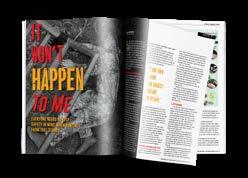


F S Su M T W Th F S Su M T W Th F S Su M T W Th F S Su M T W Th F S Su
/ 0.88
Perdido Pass
12:02 PM
0.96
01:01 PM /
1.03
1.06
04:10 PM / 1.07
1.10
1.09
1.01
0.86 12:05
0.39
0.68 12:26
0.56 01:35 AM / 0.48 11:16
0.73 11:49
0.89 12:32
0.99
1.03
09:12 PM /
10:15 PM /
PM /
12:22 AM /
PM /
AM /
AM /
PM /
01:21 PM /
03:21
0.97
02:20 PM / 1.02
PM /
06:24 PM / 0.91
0.89
09:23 PM / 0.84 10:07 PM / 0.77
10:51 AM / 0.34
11:51
09:16
10:56 PM / 0.68 11:14 AM / 0.42
PM / 0.58
AM / 0.53
11:43
-0.07 1 2 3 4 5 6 7 8 9 10 11 12 13 14 15 16 17 18 19 20 21 22 23 24 25 26 27 28 29 30 31 PRINT, DIGITAL OR BOTH! SUBSCRIBE... 1) CALL 877.314.1237 2) ORDER ONLINE AT GREATDAYSOUTDOORS.COM Hunting & Fishing in Alabama & the Florida Panhandle GET YOUR SUBSCRIPTION TODAY! ALABAMA TIDE CHARTS Fowl River F S Su M T W Th F S Su M T W Th F S Su M T W Th F S Su M T W Th F S Su 02:46 PM / 1.13 03:31 PM / 1.28 04:28 PM / 1.41 05:32 PM / 1.54 06:41 PM / 1.63 07:54 PM / 1.67 09:14 PM / 1.61 10:41 PM / 1.47 12:11 AM / 1.25 04:06 PM / 0.47 02:54 AM / 0.99 02:40 PM / 0.67 05:12 AM / 0.77 01:48 PM / 0.99 02:03 PM / 1.29 02:42 PM / 1.48 03:31 PM / 1.56 04:29 PM / 1.57 05:33 PM / 1.53 06:39 PM / 1.47 07:44 PM / 1.39 08:50 PM / 1.29 10:04 PM / 1.17 11:26 PM / 1.03 03:10
0.02
PM / 0.01 01:17 AM /
08:25 AM / 0.02 08:14 AM / 0.20
07:53
05:54 PM / 0.58
AM / 0.38
/ 0.45
0.54
07:05
07:34 PM
07:33 AM /
08:37 PM / 0.29
11:08
0.00 03:00 AM
-0.07 1 2 3 4 5 6 7 8 9 10 11 12 13 14 15 16 17 18 19 20 21 22 23 24 25 26 27 28 29 30 31
/
/
F S Su M T W Th F S Su M T W Th F S Su M T W Th F S Su M T W Th F S Su
1.12
PM /
1.23
PM /
1.31
03:33 PM /
PM / 1.38
PM / 1.43
06:53 PM / 1.43
PM / 1.38 09:29 PM / 1.26
PM / 1.06 03:33 PM / 0.48 01:37 AM / 0.84 02:14 PM / 0.61 03:55 AM / 0.66 01:03 PM / 0.87 01:13 PM / 1.13 01:49 PM / 1.31 02:35 PM / 1.41
PM / 1.43 04:20 PM
1.41
10:48
03:26
/
1.35
05:16 PM /
1.27
1.18
06:18 PM /
07:29 PM /
PM / 0.68 11:10 PM / 0.82 01:31 PM / 0.73
10:25
PM / 0.10
-0.03 1 2 3 4 5 6 7 8 9 10 11 12 13 14 15 16 17 18 19 20 21 22 23 24 25 26 27 28 29 30 31
12:38 AM / 0.05 02:35 AM /
F
M T W Th F S Su M T W
M
M T
F
Su
S Su
Th F S Su
T W Th F S Su
W Th
S
07:21
PM / 1.78
11:15
02:49
08:39 PM / 1.79 10:00 PM / 1.73
PM / 1.57 12:34 AM / 1.33 05:19 PM / 0.61 03:23 AM / 1.05 04:00 PM / 0.76 05:41 AM / 0.83
03:35
1 2 3 4 5 6 7 8 9 10 11 12 13 14 15 16 17 18 19 20 21 22 23 24 25 26 27 28 29 30 31 877.314.1237 // GreatDaysOutdoors.com // March 2024 77
Pensacola Bay
04:56
06:41
07:13 PM / 0.36
01:02
12:22
12:42
01:17
02:07
05:48 AM /
08:21
10:58
02:09
Navarre Beach
11:34 PM / -0.23
12:35 AM / -0.38
01:31 AM / -0.52
02:27 AM / -0.62
03:21 AM / -0.65
04:13 AM / -0.61
05:01 AM / -0.46
05:37 AM / -0.22
05:12 AM / 0.06
03:29 PM / 0.09
04:48 AM / 0.26
05:00 PM / -0.01
04:33 AM / 0.36
06:36 PM / -0.12
10:50 PM / -0.26
12:14 AM / -0.44
1.12
06:42 PM / 1.05
07:56 PM / 0.98
08:59 PM / 0.88
11:27 AM / 0.30
10:00 PM / 0.77
10:42 AM / 0.41
11:07 PM / 0.64
09:29 AM / 0.59
12:24 AM / 0.52
09:29 AM / 0.78
09:48 AM / 0.95
10:15 AM / 1.10
10:49 AM / 1.23
11:33 AM / 1.34
12:29 PM / 1.42
01:22 AM / -0.54 02:25 AM / -0.57 03:24 AM / -0.54 04:17 AM / -0.46 05:04 AM / -0.35 05:41 AM / -0.21
AM / -0.04 04:31 AM / 0.12
02:15 PM / 0.23 04:14 AM / 0.25 03:28 PM / 0.18
AM / 0.35
PM / 1.28
01:05 PM / 1.38
01:56 PM / 1.45
01:01 AM / -0.25
02:13 AM / -0.42
03:05 AM / -0.58
03:52 AM / -0.70
04:37 AM / -0.76
05:20 AM / -0.72
06:01 AM / -0.59
06:36 AM / -0.35
07:48 AM / -0.03
04:18 PM / 0.14
07:12 AM / 0.28
06:34 PM / 0.03
05:36 AM / 0.47
08:33 PM / -0.12
10:39 PM / -0.26
12:41 AM / -0.38
02:12 AM / -0.46
03:22 AM / -0.49
04:18 AM / -0.48
05:04 AM / -0.41
05:41 AM / -0.31
06:07 AM / -0.17
06:11 AM / -0.01
05:42 AM / 0.15
03:41 PM / 0.37
05:30 AM / 0.28
05:11 PM / 0.28
05:13 AM / 0.40
06:23 PM / 0.18
04:20 AM / 0.47
07:33 PM /
08:47 PM / -0.02
10:04 PM / -0.10
11:28 PM / -0.18
12:59 AM /

F S Su M T W Th F S Su M T W Th F S Su M T W Th F S Su M T W Th F S Su 01:20 PM / 0.51 02:09 PM / 0.56 03:17 PM / 0.61 04:36 PM / 0.67 05:55 PM / 0.73 07:06 PM / 0.76 08:12 PM / 0.74 09:19 PM / 0.67 10:34 PM / 0.54 02:08 PM / 0.11 01:11 AM / 0.40 12:24 PM / 0.26 12:11 PM / 0.43 12:34 PM / 0.58 01:14 PM / 0.67 02:06 PM / 0.70 03:10 PM / 0.70 04:28 PM / 0.68 05:53 PM / 0.66 07:11 PM / 0.64 08:13 PM / 0.60 09:04 PM / 0.54 09:55 PM / 0.45 02:13 PM / 0.26 10:58 PM / 0.36 12:30 PM / 0.31 12:29 AM / 0.28 11:55 AM / 0.40 11:44 AM / 0.48 11:49 AM / 0.56
PM / 0.62 12:44 PM / 0.66
PM / 0.70
PM / 0.73 12:30 AM / -0.09 02:10 AM / -0.13
Destin East Pass
12:09
01:34
02:38
/ -0.17
/ -0.22
AM / -0.25
AM / -0.25
AM / -0.20 07:15 AM / -0.12 08:26 AM / 0.01 04:56 PM / 0.07 07:55 AM / 0.13
0.00 09:23
-0.07 10:54
-0.12
03:32 AM
04:36 AM
05:28
06:11
06:47
07:40 PM /
PM /
PM /
12:28 AM / -0.14
03:42 AM / -0.15 04:55 AM / -0.15 05:48 AM / -0.14 06:23 AM / -0.12 06:42 AM / -0.08 06:46 AM / -0.02 06:35 AM / 0.04 04:22 PM / 0.17 06:07 AM / 0.10 06:39 PM / 0.12 05:14 AM / 0.15 07:47 PM / 0.06 08:36 PM / 0.01 09:25 PM / -0.03 10:24 PM / -0.05 11:47 PM / -0.07 01:30 AM / -0.09 1 2 3 4 5 6 7 8 9 10 11 12 13 14 15 16 17 18 19 20 21 22 23 24 25 26 27 28 29 30 31
AM / -0.15
F S Su M T W Th F S Su M T W Th F S Su M T W Th F S Su M T W Th F S Su 11:31 AM / 0.93 12:19 PM / 1.06 01:20 PM / 1.18 02:31 PM / 1.27 03:46 PM / 1.35 05:04 PM / 1.38 06:23 PM / 1.34 07:46 PM / 1.22 09:12 PM / 1.02 12:04 PM / 0.27 11:41 PM / 0.77 11:37 AM / 0.49 01:20 AM / 0.51 10:07 AM / 0.79 10:45 AM / 1.05 11:34 AM / 1.23 12:29 PM / 1.31 01:29 PM / 1.30 02:38 PM / 1.25 03:54 PM / 1.19 05:16 PM /
05:51
04:03
04:31
/ 0.42 05:33 PM / 0.03 06:37 PM / -0.05 07:57 PM / -0.12 10:12 PM / -0.19 11:45 PM / -0.28 1 2 3 4 5 6 7 8 9 10 11 12 13 14 15 16 17 18 19 20 21 22 23 24 25 26 27 28 29 30 31 Panama
F S Su M T W Th F S Su M T W Th F S Su M T W Th F S Su M T W Th F S Su 12:47 PM / 0.97 01:31 PM / 1.09 02:27 PM / 1.19 03:38 PM / 1.28 05:04 PM / 1.35 06:27 PM / 1.40 07:41 PM / 1.37 08:55 PM / 1.25 10:14 PM / 1.06 01:07 PM / 0.22 12:38 AM / 0.81 12:45 PM / 0.45 02:11 AM / 0.57 12:21 PM / 0.73 12:15 PM / 1.01 12:50 PM / 1.21 01:36 PM / 1.31 02:30 PM / 1.33 03:37 PM / 1.28 05:23 PM / 1.22 07:03 PM / 1.17 08:09 PM / 1.10 09:03 PM / 1.01 09:58 PM / 0.90 11:58 AM / 0.43 10:58 PM / 0.77 11:43 AM / 0.55 12:08 AM / 0.64 11:33 AM / 0.70 01:26 AM / 0.53 11:08 AM / 0.86 11:15 AM / 1.02 11:43 AM / 1.17 12:21
PM / 0.11 03:46 AM
City
0.08
1 2 3 4 5 6 7 8 9 10 11 12 13 14 15 16 17 18 19 20 21 22 23 24 25 26 27 28 29 30 31
-0.28
F S Su M T W Th F S Su M T W Th F S Su M T W Th F S Su M T W Th F S Su 01:53 PM / 1.04 02:42 PM / 1.15 03:50 PM / 1.25 05:09 PM / 1.37 06:28 PM / 1.48 07:39 PM / 1.55 08:45 PM / 1.51 09:52 PM / 1.36 11:07 PM / 1.10 02:41 PM / 0.23 01:44 AM / 0.81 12:57 PM / 0.52 12:44 PM / 0.88 01:07 PM / 1.18 01:47 PM / 1.36 02:39 PM / 1.43 03:43 PM / 1.42 05:01 PM / 1.39 06:26 PM / 1.34 07:44 PM / 1.30 08:46 PM / 1.22 09:37 PM / 1.09 10:28 PM / 0.92 02:46 PM / 0.52 11:31 PM / 0.73 01:03 PM / 0.64
AM / 0.57
PM / 0.81
12:28
0.98
12:17 PM /
PM / 1.14
1.26
PM /
PM / 1.35
PM / 1.43
PM / 1.50
AM / -0.27 02:44 AM / -0.39 04:06 AM / -0.53 05:10 AM / -0.68 06:02 AM / -0.77 06:45 AM / -0.76
AM / -0.62 07:49 AM / -0.35
AM / 0.01
PM / 0.20
/ 0.39
03:11
01:04
07:21
09:00
05:30
08:29 AM
0.01
/ -0.21
/ -0.36
08:14 PM /
09:57 PM
11:28 PM
/ -0.44
AM / -0.46
AM / -0.47 05:29 AM / -0.46 06:22 AM / -0.43 06:57 AM / -0.35
01:02 AM
02:43
04:16
/ -0.23
/ -0.07
07:16 AM
07:20 AM
0.12
07:09 AM /
0.51
PM /
AM / 0.30
0.44
0.18
PM /
0.03
/ -0.09
09:10 PM /
09:59 PM
PM / -0.16
/ -0.21 02:04
/ -0.28 1 2 3 4 5 6 7 8 9 10 11 12 13 14 15 16 17 18 19 20 21 22 23 24 25 26 27 28 29 30 31 FLORIDA TIDE CHARTS 78 March 2024 // GreatDaysOutdoors.com // 877.314.1237
12:21 AM
AM
/ -0.45
02:07 AM / -0.65
03:04 AM / -0.82
04:00 AM / -0.95
04:53 AM / -1.00
05:45 AM / -0.94
06:33 AM / -0.76
07:18 AM / -0.43
08:50 AM / -0.01
08:32 AM / 0.46
07:27 PM / 0.04
09:40 PM / -0.21
11:33 PM / -0.45
01:08 AM / -0.63
02:26 AM / -0.72
03:34 AM / -0.71
04:33 AM / -0.64
05:24 AM / -0.51
06:07 AM / -0.35
06:41 AM / -0.17
07:03 AM / 0.04
07:10 AM / 0.27
06:52 AM / 0.49
05:42 PM / 0.48
05:53 AM / 0.67
07:14 PM / 0.34
08:28 PM / 0.18
09:37 PM / 0.03
10:47 PM / -0.11
11:59 PM / -0.24
01:12 AM / -0.36

Pascagoula
01:15 PM / 1.48
01:54 PM / 1.62
02:42 PM / 1.72
03:52 PM / 1.79
05:16 PM / 1.83
06:29 PM / 1.84
07:43 PM / 1.77
08:56 PM / 1.61
10:31 PM / 1.37
02:13 PM / 0.63
01:59 AM / 1.14
11:15 AM / 0.87
03:47 AM / 0.94
11:40 AM / 1.22
12:23 PM / 1.50
01:13 PM / 1.70
02:02 PM / 1.80
02:48 PM / 1.80
03:37 PM / 1.73
04:41 PM / 1.63
06:04 PM / 1.53
07:25 PM / 1.44
09:20 PM / 1.36
10:30 PM / 1.26
11:45 PM / 1.14
09:42 AM / 0.69
01:24 AM / 1.03
10:09 AM / 0.91
02:42 AM / 0.96
10:38 AM / 1.12
11:08 AM / 1.31
11:45 AM / 1.47
12:35 PM / 1.60
01:31 PM / 1.70
02:23 PM / 1.78
10:55 PM / 0.07
12:19 AM / -0.04
02:36 AM / -0.17
03:44 AM / -0.31
04:36 AM / -0.37
05:24 AM / -0.33
06:09 AM / -0.18
06:47 AM / 0.08
08:01 AM / 0.42
05:49 PM / 0.50
07:05 AM / 0.73
07:17 PM / 0.32
06:27 AM / 0.92
08:45 PM / 0.14
11:02 PM / -0.00
12:27 AM / -0.11
01:39 AM / -0.14
04:05 AM / -0.15
05:08 AM / -0.14
05:56 AM / -0.09
06:41 AM / -0.01
07:22 AM / 0.12
07:29 AM / 0.28
07:26 AM / 0.46
06:12 AM / 0.64
05:13 PM / 0.47
06:05 AM / 0.77
06:12 PM / 0.33
06:07 AM / 0.88
07:11 PM / 0.20
08:10 PM / 0.09
09:11 PM / -0.01
10:22 PM / -0.08
11:47 PM / -0.14

07:39 PM / 1.34
09:27 PM / 1.25
11:03 PM / 1.15
09:37 AM / 0.68
12:48 AM / 1.04
09:54 AM / 0.91
02:31 AM / 0.99
10:19 AM / 1.14
10:45 AM / 1.37
11:17 AM / 1.56
12:01 PM / 1.72
12:59 PM / 1.84
01:57 PM / 1.90
02:49 PM / 1.89
03:44 PM / 1.78
05:01 PM / 1.60
06:37 PM / 1.38
09:54 PM / 1.16
11:31 AM / 0.75
06:14 AM / 0.15
06:27 AM / 0.27
06:37 AM / 0.43
05:50 AM / 0.60
04:52 PM / 0.48
05:43 AM / 0.75
05:53 PM / 0.31
05:49 AM / 0.90
06:53 PM / 0.13
08:58 PM /
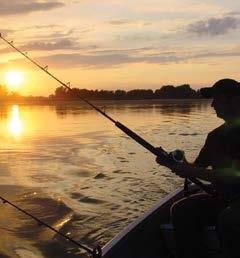
11:38 PM / 0.99
10:33 AM / 0.92
09:28 AM / 1.23
09:55 AM / 1.49
10:27 AM / 1.67
11:03 AM / 1.77
11:45 AM / 1.80
12:39 PM / 1.77
01:36 PM / 1.72
02:27 PM / 1.64
03:14 PM / 1.53
04:06 PM / 1.39
05:28 PM / 1.22
07:05 PM / 1.05
02:31 AM / -0.29
03:55 AM / -0.21
04:48 AM / -0.06
05:23 AM / 0.18
05:39 AM / 0.48
04:06 PM / 0.60
04:44 AM / 0.76


Pascagoula
07:55 PM / -0.03
-0.15
10:13 PM / -0.24 11:48 PM / -0.30
01:05 AM / -0.32
05:32 PM / 0.33 06:41 PM / 0.10 07:44 PM / -0.06 08:38 PM / -0.15 09:35 PM / -0.17 10:54 PM / -0.14 12:01 AM / -0.09 12:57 AM / -0.02 02:02 AM / 0.07 03:48 AM / 0.15 04:30 AM / 0.26 04:48 AM / 0.40 S Su M T W Th F S Su M T W Th F S Su M T W Th F S Su M T W Th F S Su 1 2 3 4 5 6 7 8 9 10 11 12 13 14 15 16 17 18 19 20 21 22 23 24 25 26 27 28 29 30 Share highlights from your great days outdoors with us! info@GreatDaysOutdoors.com 1 2 3 4 5 6 7 8 9 10 11 12 13 14 15 6:11 AM 6:10 AM 6:09 AM 6:08 AM 6:07 AM 6:06 AM 6:04 AM 6:03 AM 6:02 AM 7:01 AM 6:59 AM 6:58 AM 6:57 AM 6:56 AM 6:54 AM 5:43 PM 5:44 PM 5:45 PM 5:45 PM 5:46 PM 5:47 PM 5:48 PM 5:48 PM 5:49 PM 6:50 PM 6:50 PM 6:51 PM 6:52 PM 6:52 PM 6:53 PM 16 17 18 19 20 21 22 23 24 25 26 27 28 29 30 31 6:53 AM 6:52 AM 6:50 AM 6:49 AM 6:48 AM 6:46 AM 6:45 AM 6:44 AM 6:42 AM 6:41 AM 6:40 AM 6:39 AM 6:37 AM 6:36 AM 6:35 AM 6:33 AM 6:54 PM 6:55 PM 6:55 PM 6:56 PM 6:57 PM 6:58 PM 6:58 PM 6:59 PM 7:00 PM 7:00 PM 7:01 PM 7:02 PM 7:02 PM 7:03 PM 7:04 PM 7:05 PM March 2024 Sunrise / Sunset MISSISSIPPI TIDE CHARTS Download one of our three podcasts today and listen for free! Enjoy hearing the latest news on fishing? Biloxi Bay 01:48 PM / 1.18 02:33 PM / 1.36 03:29 PM / 1.52 04:38 PM / 1.64 05:55 PM / 1.73 07:14 PM / 1.77 08:31 PM / 1.72 09:47 PM / 1.57 11:07 PM / 1.31 01:46 AM / 0.98 12:40 PM / 0.53 12:30 PM / 0.99 01:04 PM / 1.40 01:50 PM / 1.68 02:41 PM / 1.82 03:38 PM / 1.84 04:42 PM / 1.78 05:56 PM / 1.67 07:17 PM / 1.54 08:35 PM / 1.43 09:45 PM / 1.30 10:49 PM / 1.16 11:54 PM / 1.00 12:44 PM / 0.67 01:16 AM / 0.84 12:05 PM / 0.89 12:02 PM / 1.13 12:17 PM / 1.36 12:42 PM / 1.57 01:15 PM / 1.74 01:57 PM / 1.87 02:47 PM / 1.97 01:04 AM
F S Su M T W Th F S Su M T W Th F S Su M T W Th F S Su M T W Th F S Su 1 2 3 4 5 6 7 8 9 10 11 12 13 14 15 16 17 18 19 20 21 22 23 24 25 26 27 28 29 30 31
F S Su M T W Th F S Su M T W Th F S Su M T W Th F S Su M T W Th F S Su 1 2 3 4 5 6 7 8 9 10 11 12 13 14 15 16 17 18 19 20 21 22 23 24 25 26 27 28 29 30 31 877.314.1237 // GreatDaysOutdoors.com // March 2024 79
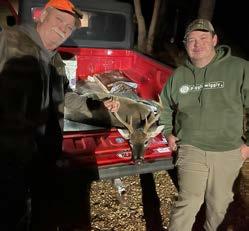
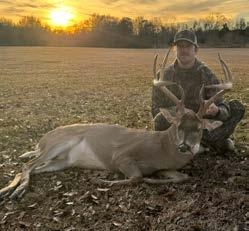
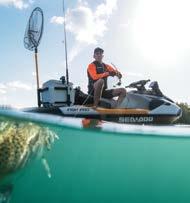
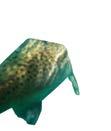




TROPHY ROOM Pensacola Motorsports When Submitting Trophy Room photos, be sure to include as much information as possible about the person and the trophy. Final Decision is made by the editorial Staff of Great Days Outdoors Magazine. Submitting a photo does not guarantee it will be published. GET FEATURED IN OUR ISSUES OF GREAT DAYS OUTDOORS WHEN YOU GIVE US YOUR BEST SHOT POST: To Facebook @GreatDaysOutdoors EMAIL: info@GreatDaysOutdoors.com [ OR ] IT'S EASY TO ENTER Photo of the Month! Simply share your great day outdoors with us! Larry Jacobs showing off his kill Johnny Ladnier showcasing a great buck and an awesome Dallas County sunset. Sea-Doo.com ©2018 Bombardier Recreational Products Inc. (BRP). All rights reserved. ™ and the BRP logo are trademarks of BRP or its affiliates. Some models depicted may include optional equipment. Carefully read the operator’s guide and safety instructions. Observe applicable laws and regulations. Always wear appropriate protective clothing, including a personal flotation device and wetsuit bottoms. Riding and alcohol/drugs don’t mix. See your authorized BRP dealer fo details. You didn’t see it coming. Neither did the fish. Discover yours at our dealership Introducing the all-new FISH PRO™ The world’s first personal watercraft designed for fishing will bring you closer to the action for an experience like never before. 618 N New Warrington Rd. Pensacola, FL 32506 (850)456-6655 Pensacola Motorsports 80 March 2024 // GreatDaysOutdoors.com // 877.314.1237


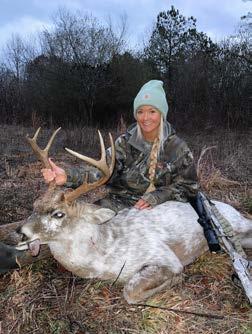

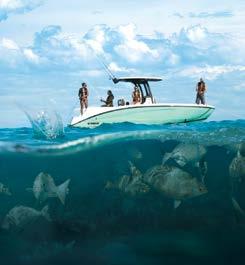

Matthew Parrish with a big bodied bruiser. Jana Sullivan Davis poses with her buck. War Eagle, Jana! Zoe Champion with a once-in-a-lifetime piebald buck. JETBLASTER ® | YAMAHAWAVERUNNERS.COM This document contains many of Yamaha’s valuable trademarks. It may also contain trademarks belonging to other companies. Any references to other companies or their products are for identification purposes only, and are not intended to be an endorsement. Follow instructional materials and obey all laws. Ride responsibly, wearing protective apparel and USCG-approved personal flotation device. Always ride within your capabilities, allowing time and distance for maneuvering, and respect others around you. Never drink and ride. WaveRunner® is a Yamaha brand personal watercraft and not a generic term. This document contains many of Yamaha’s valuable trademarks. It may also contain trademarks belonging to other companies. Any references to other companies or their products are for identification purposes only, and are not intended to be an endorsement. Follow instructional materials and obey all laws. Ride responsibly, wearing protective apparel and USCG-approved personal flotation device. Always ride within your capabilities, allowing time and distance for maneuvering, and respect others around you. Never drink and ride. WaveRunner® is a Yamaha brand personal watercraft and not a generic term. THE DEEPEST BONDS START AT THE SURFACE FSH SERIES | YAMAHABOATS.COM FSH SERIES | YAMAHABOATS.COM WAKE UP WILD JETBLASTER ® | YAMAHAWAVERUNNERS.COM This document contains many of Yamaha’s valuable trademarks. It may also contain trademarks belonging to other companies. Any references to other companies or their products are for identification purposes only, and are not intended to be an endorsement. Follow instructional materials and obey all laws. Ride responsibly, wearing protective apparel and USCG-approved personal flotation device. Always ride within your capabilities, allowing time and distance for maneuvering, and respect others around you. Never drink and ride. WaveRunner® is a Yamaha brand personal watercraft and not a generic term. Pensacola Motorsports 618 N New Warrington Rd. • Pensacola, FL 32506 (850) 456-6655 www.pensacolamotorsports.com 877.314.1237 // GreatDaysOutdoors.com // March 2024 81
KID'S CORNER TROPHY ROOM
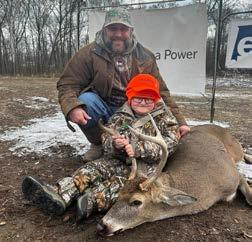

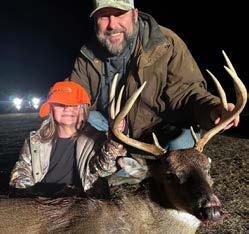
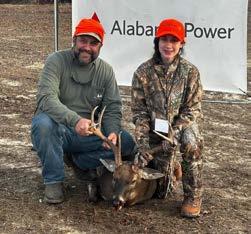
show
Milam Staggs, 9, is all smiles.
Tucker Hauser, 16, with a big-bodied bruiser of a buck. Congrats, Tucker!
Clara Love, 13 with her trophy, way to go!
Noah Staggs, 11, showing off his trophy
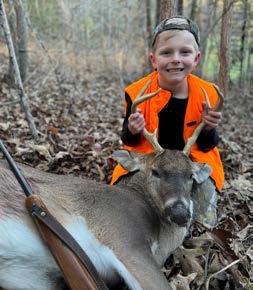
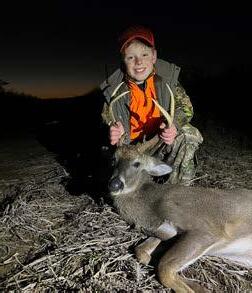
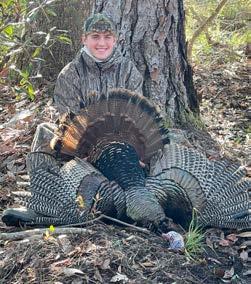

Give us your best shot! Send your submission to info@greatdaysoutdoors.com. Submitting a photo does not guarantee that it will be published. We cannot give any guarantees on when a photo will be published. Please include: child's full name, age, mailing address, and any details. We need to know when, where, size (weight, points, etc.), shot or caught with what and any other meaningful information, like first time, etc.. CONTRIBUTIONS WITHOUT THIS INFO WON’T BE PUBLISHED.
Jack Speegle shows off a unique buck with a split G2.
Hudson Howard, 9, killed his first deer
1ST Deer
Henry Howard, 7, killed his first deer
1ST Deer 1ST Turkey
Jaden Babb Rowe with his first turkey, 10” beard

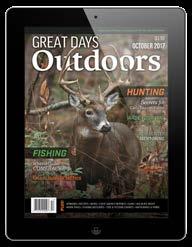
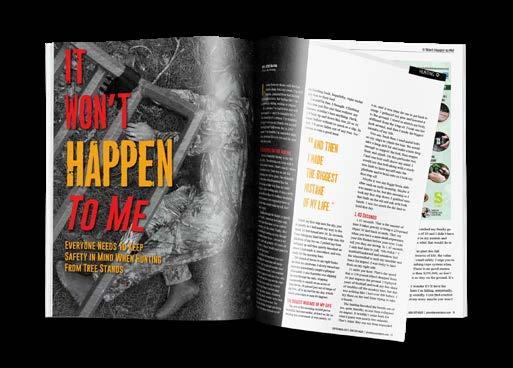






PRINT, DIGITAL OR BOTH THREE WAYS TO SUBSCRIBE... 1) CALL 877.314.1237 2) ORDER ONLINE AT GREATDAYSOUTDOORS.COM 3) MAIL IN THE COUPON (with Credit Card Number, Check or Money Order) GREAT DAYS OUTDOORS MAGAZINE PO BOX 460248 ESCONDIDO CA 92046-9801 SIGN ME UP FOR A SUBSCRIPTION FOR: 1 YEAR $30.00 2 YEARS $45.00 3 YEARS $57.00 NAME ADDRESS CITY STATE ZIP PHONE CREDIT CARD# EXP. / CID EMAIL includes tax where applicable Must send email address to receive digital copies SAVE 67% Off Newstand Price When you Subscribe for 3 years Hunting & Fishing in Alabama & the Florida Panhandle Yes, send me your e-newsletters 84 March 2024 // GreatDaysOutdoors.com // 877.314.1237
March Fishing Tip
BY THE EDITORS

Experienced anglers know that when using lead weights, less is more. Yes, you want to get your bait to the bottom, but you also don’t want a fish to realize that “something’s up” when he takes the bait and feels resistance.
But sometimes there’s just no getting around using big weights, especially if you’re fishing large baits in heavy current or surf. Sure, you can use specially designed flat or pyramid sinkers that hold to the bottom a little better, but if you want your bait to stay where you put it, there’s no substitute for a big-ole hunk of lead.
Using a Carolina Rig or some other rig that lets the mainline run through the weight when a fish takes the bait can help, but it’s not a perfect solution. Rough lead weights don’t always allow for a smooth pull, and braided lines are notoriously bad about fraying as they run through the hole in a sinker.
Enter the sinker slide. These handy little pieces of terminal tackle help to reduce the friction fish feel when they take the bait, and also make it easy to add and remove weights to a line. This is super-helpful if you’d like to experiment with heavier or lighter weights, or if you need to travel with your rods and don’t want 4oz of lead banging against your rod’s
finish.
Weldon Hall of Sand Flea Outfitters is a big proponent of sinker slides, and goes so far as to make his own DIY slides in order to obtain maximum sensitivity and line protection. On a recent episode of the Northwest Florida Fishing Report, we sat down to talk with him about his homebrew slides.
“I like to make a DIY sinker slide,” he says. All that I do is take a big barrel swivel or Coast Lock snap swivel, and thread that onto the end of my line. I put my bead on, tie on my terminal tackle, and then I just take a 40 or 50 lb piece of mono and make a loop that I can use to tie my weight to that snap swivel.”
A DIY sinker slide like Weldon describes is inexpensive, easy on your line, and offers almost no resistance when a fish takes the bait. It’s a simple but effective way to use a big sinker while still maintaining a finesse presentation for finicky fish.
Weldon Hall Sand Flea Outfitters (850) 974-7919 sandflea.850@gmail.com
Advertiser Index A-Team Fishing Adventures . . . . . . . . 3 ADCNR Hunting . . . . . . . . . . . . . . . . 36 ADCNR Marine . . . . . . . . . . . . . . . . . 31 Admiral Shellfish . . . . . . . . . . . . . . 19 Camper City . . . . . . . . . . . . . . . . . . 15 CCA Alabama . . . . . . . . . . . . . . . . . . 75 Clutch Products . . . . . . . . . . . . . . . 67 Coast Safe & Lock . . . . . . . . . . . . . . 75 Cold Blooded Fishing . . . . . . . . . . . 11 Deep South Crane . . . . . . . . . . . . . . 58 Dixie Building Supply . . . . . . . . . . . . 3 Fiber Plastics . . . . . . . . . . . . . . . . . 11 Fishbites . . . . . . . . . . . . . . . . . . . . . 87 Hilton’s Offshore Charts . . . . . . . . . . 15 Hydraulic Crane . . . . . . . . . . . . . . . 78 Killer Dock . . . . . . . . . . . . . . . . . . . 26 LS Tractor . . . . . . . . . . . . . . . . . . . . 88 Midway Lumber . . . . . . . . . . . . . . . 39 Mossy Oak . . . . . . . . . . . . . . . . . . . 22 National Land Realty . . . . . . . . . . . . . 5 Paradise Marine . . . . . . . . . . . . . . . . 2 Pensacola Motor Sports . . . . . . . 80-81 Pure Flats . . . . . . . . . . . . . . . . . . . . 65 Southern Seed & Feed . . . . . . . . . . . 34 Southeastern Pond Management . . . . 7 Test Calibration Co . . . . . . . . . . . . . . 76 Texas Hunter Products . . . . . . . . . . . 27 War Eagle Boats . . . . . . . . . . . . . . . . . . . 51 FISHING TIP
877.314.1237 // GreatDaysOutdoors.com // March 2024 85
The Dangers of Turkey Hunting in Camouflage
 BY JIM MIZE
BY JIM MIZE
Turkey hunting without camouflage would be like playing golf in a pink tutu. Sure, you might knock them dead, but it’s hard to putt over the giggling.
Clothing and equipment manufacturers know this and now everything a turkey hunter carries into the woods is a matching pattern of bushes. This presents problems for the average hunter. Well, maybe not, but it does present problems for me.
For instance, if you lay down a camouflaged shotgun, how do you find it? If it blends in so well that a turkey can’t see it, how will you?
Actually, I solved this problem. I went to my gunsmith and had my stock drilled out and inserted one of those gadgets that beep when you clap your hands. Now, if I want to find my gun, I just clap. Not that this solution is perfect, mind you. It nearly got me killed.
I had ventured into a country store one Saturday afternoon, carrying my gun because one of the fellows from work wanted to buy it and planned to meet me there. When I heard voices from the back, I wandered in that direction to see if it was my buddy. As it turned out, some construction workers were taking a lunch break while playing a tape of old AlabamaAuburn football games.
Just as I walked in, a team scored, half of them started clapping, and my gun started beeping. In that small room, the sound was loud and kept going after the clapping stopped.
Mistaking it for a truck backing up they instinctively dove for cover to keep from getting run over, and in the process, flipped the table where they had been eating lunch. Drinks flew, sandwiches tumbled, and four big, burly guys disappeared in the debris. On the TV, the crowd cheered. Their timing was unfortunate.
Peeping over the back of a couch, the construction workers discovered it was only me. Their next thoughts weren’t charitable.
Luckily, having to jump back over the couch slowed them enough for me to quickly exit. This camouflage stuff can get you killed.
My experience with headnets is not much better. I don’t like the ones without eyeholes. It’s like hunting in the fog. But when I wear the ones with eyeholes, I sometimes forget I have them on.
Just last year, I strolled into the Seven-Eleven after a hunt, thirsty and wanting to avoid that country store where I had the
beeping incident, but I forgot to take off the headnet. Well, if you were a Seven-Eleven clerk and saw a masked man burst through your front door, what would you do?
Let’s just say that she gave me way too much change for my Coke. Luckily, the officer on duty that day was a turkey hunter.
Another problem with camouflage is that you may not want it on after the hunt is over. Suppose, for example, that you’re walking down a logging road and meet a loaded pulpwood truck that is barreling along at a speed about ten times the maximum achieved by the Wright brothers at Kitty Hawk. You’re dressed in camo, so also assume the driver can’t see you. You either have to dive into the ditch or prepare to make windshield chit-chat with a bunch of dead bugs.
Ideally, you would like to be able to turn the camouflage on and off. This would have all sorts of uses. For instance, if you could turn your camo into a three-piece suit at the flip of a jacket, you could squeeze an extra hour of hunting in before work or other major events, such as weddings, especially if they weren’t yours.
Another feature that would be useful is if people could see your camo, but turkeys couldn’t. Think about it. Hunters would know not to crowd each other and your buddy could find you if you fell asleep in the woods.
Camouflage patterns have become so specialized that a person needs three or four suits to make it through a full season. There’s a fall pattern for bow season, a late-fall pattern for gun season, a marsh pattern for ducks, white camo for snow geese, and a spring pattern for turkeys.
A company could make a fortune if they could invent a suit that changed to match its surroundings, kind of like those lizards you hear about. You just want to be careful what you stand next to before you leave the house. I mean, if you dressed next to your wife’s clothes, it could get plenty embarrassing.
Kids especially love camouflage. It’s no wonder, since it runs counter to everything you have been told about kids. The old adage, “Children should be seen and not heard” takes a strange turn when a kid dresses in camo. Now they’re “heard and not seen.”
And if your kid’s a prankster--mine get it genetically--camo only aids their escape. That’s why I hand out the camo before the hunt and take it up immediately afterwards. Maybe the game wardens should teach a Camo Safety Course for kids, not letting them wear it until they are licensed.
But as dangerous as camouflage can be, I’ll continue to wear it when I turkey hunt. I know that it looks better on me than a pink tutu.
JIM MIZE occasionally needs camo so he can hide from his chores You can purchase Jim’s new book, The Jon Boat Years, at https://uscpress .com/The-Jon-Boat-Years or buy autographed copies at www . acreektricklesthroughit .com .
A GREAT DAY OUTDOORS
86 March 2024 // GreatDaysOutdoors.com // 877.314.1237
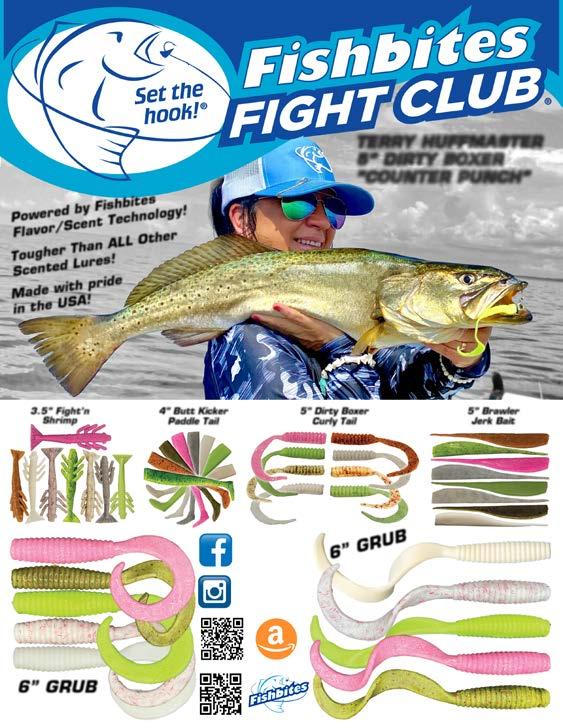

fishbites.com 877.314.1237 // GreatDaysOutdoors.com // March 2024 87
MT2 & MT2E THE NEW AND IMPROVED
REDESIGNED AND REASONABLY PRICED
The new MT2 series began by imagining what the next generation of tractors could be. We sculpted the hood. Flared the fenders. Reshaped the cab roof to increase headroom and visibility. Then we increased loading capacity by up to 22%* and challenged it to more than 1000 hours of user testing from scorching heat to frostbite country. The result is the 2024 MT2 tractor line up. It’s everything you expect from a tractor, and everything you didn’t.
Start Blue. Stay Blue.

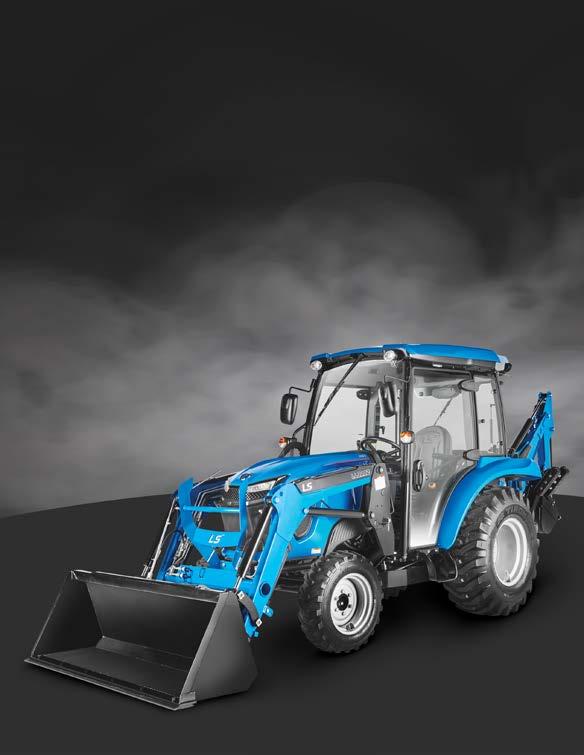
Stay
Start Blue.
Blue.
to similarly equipped 2023 and earlier MT2 models. SEE IT IN ACTION SCAN NOW © 2024 LS Tractor USA
*Compared






























 BY DAVID STRICKLAND
BY DAVID STRICKLAND

































 BY HANK SHAW https://honest-food.net Image courtesy of Holly A. Heyser
BY HANK SHAW https://honest-food.net Image courtesy of Holly A. Heyser




































 Recipe by Hank Shaw, Photo by Holly A. Heyser • https://honest-food.net
Recipe by Hank Shaw, Photo by Holly A. Heyser • https://honest-food.net


















 BY CHRIS BLANKENSHIP Commissioner of the Alabama Department of Conservation & Natural Resources
BY CHRIS BLANKENSHIP Commissioner of the Alabama Department of Conservation & Natural Resources





 BY CHARLES “CHUCK” SYKES
Director of the Alabama Division of Wildlife and Freshwater Fisheries (WFF)
BY CHARLES “CHUCK” SYKES
Director of the Alabama Division of Wildlife and Freshwater Fisheries (WFF)



 BY TANNER DEAS
Photos by Tanner Deas
BY TANNER DEAS
Photos by Tanner Deas



 BY DAVID THORNTON
Photos by David Thornton
BY DAVID THORNTON
Photos by David Thornton



















































 BY JIM MIZE
BY JIM MIZE


